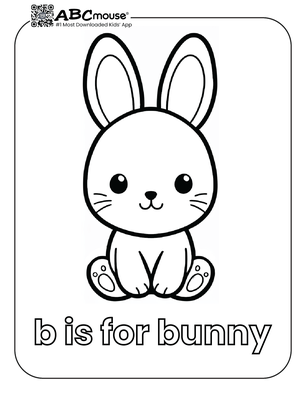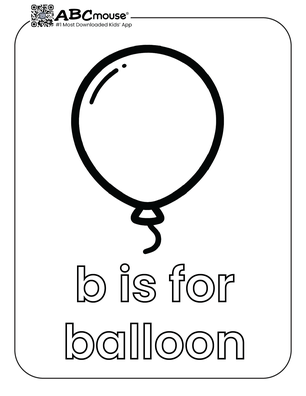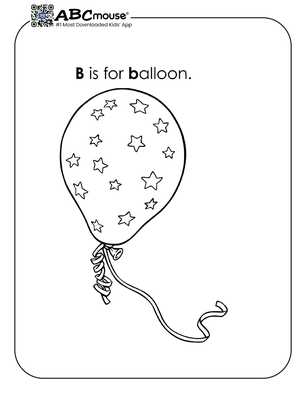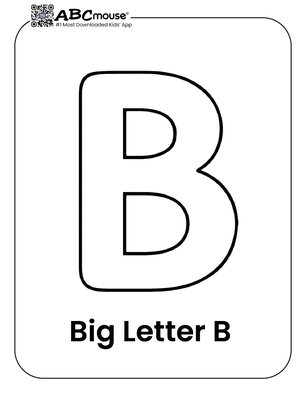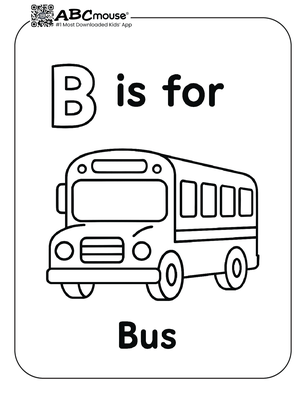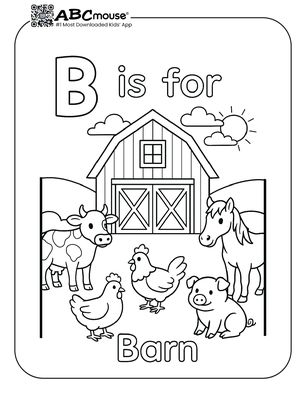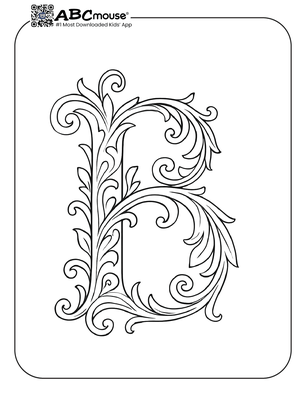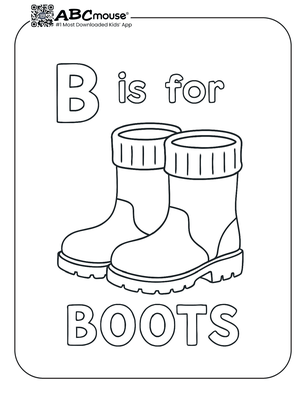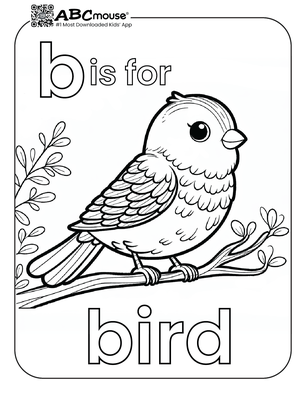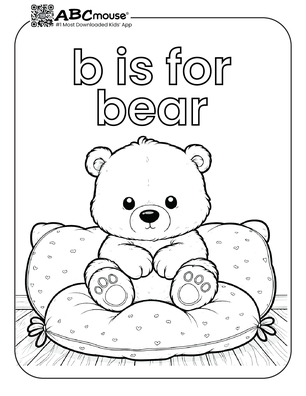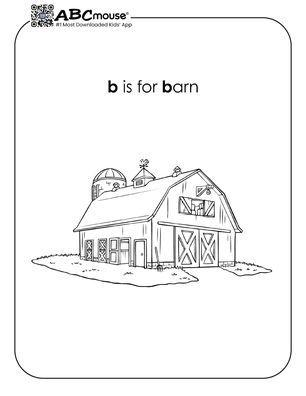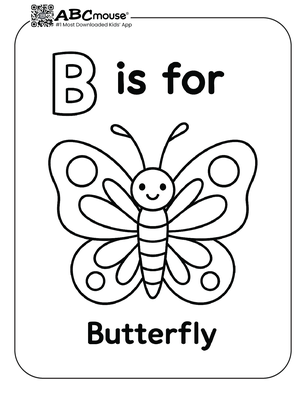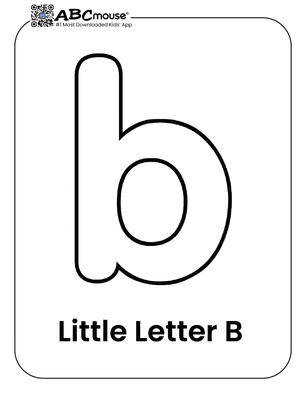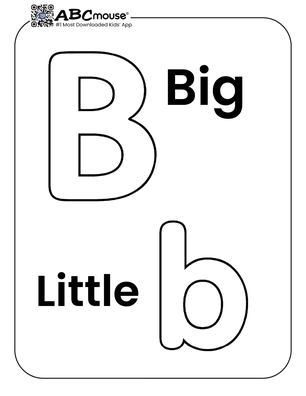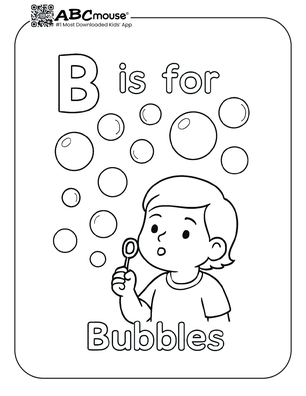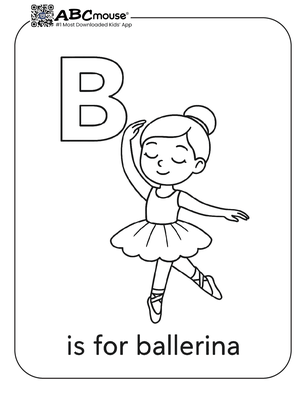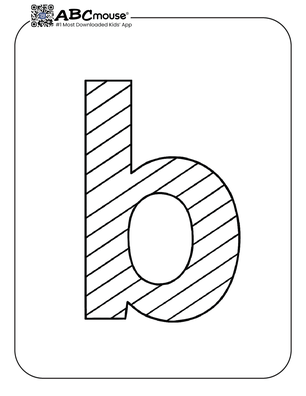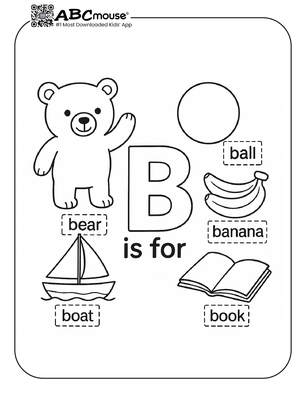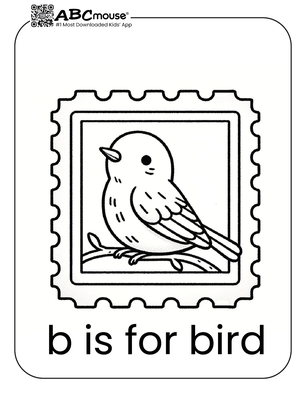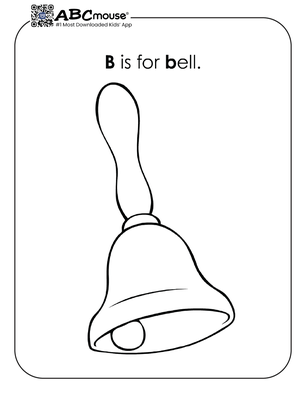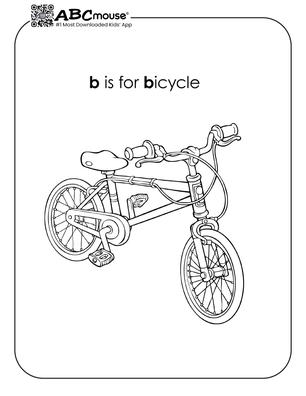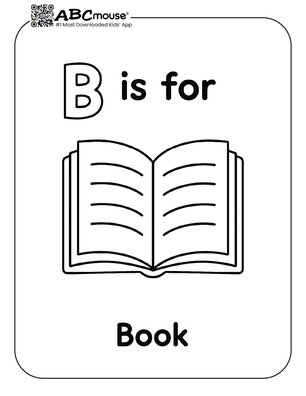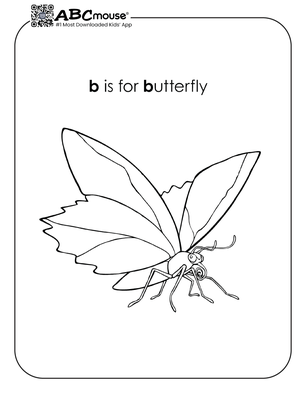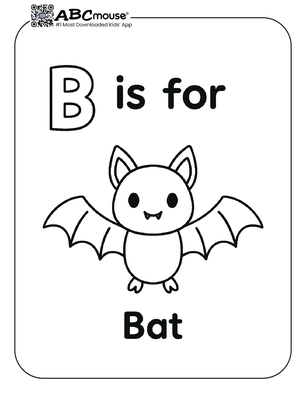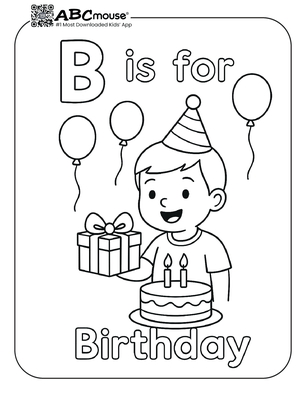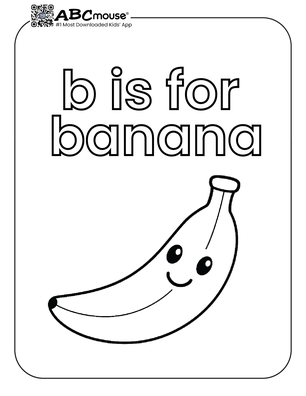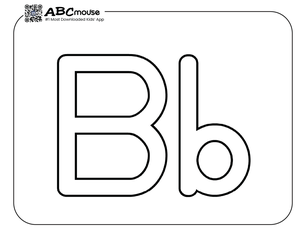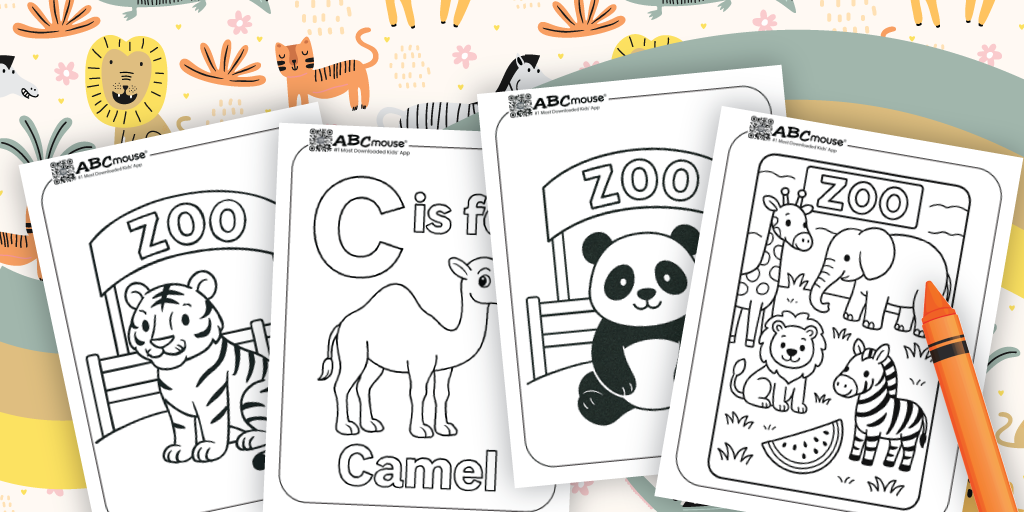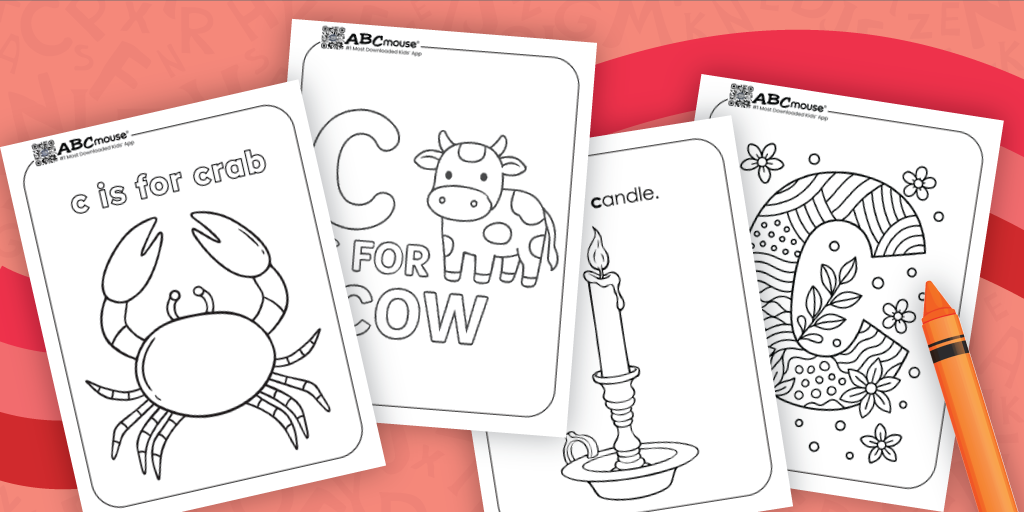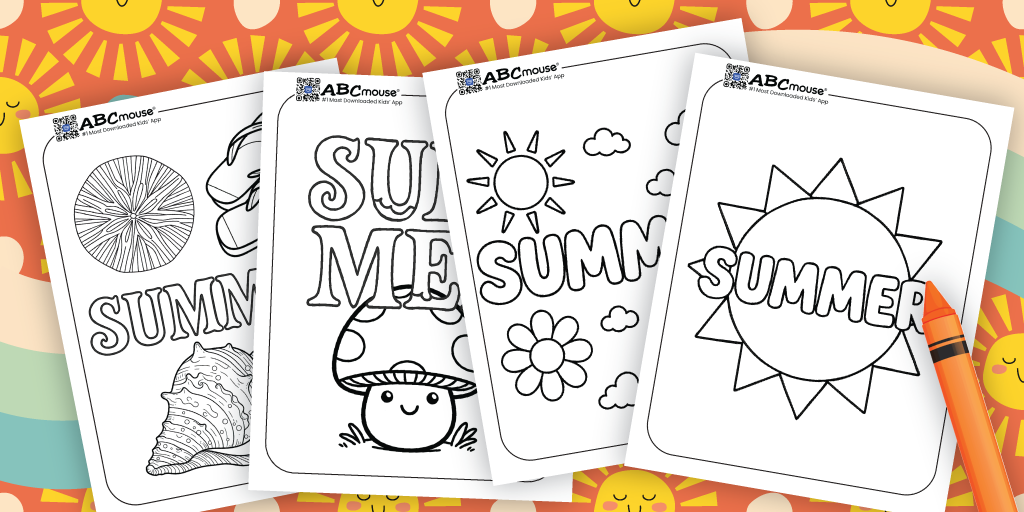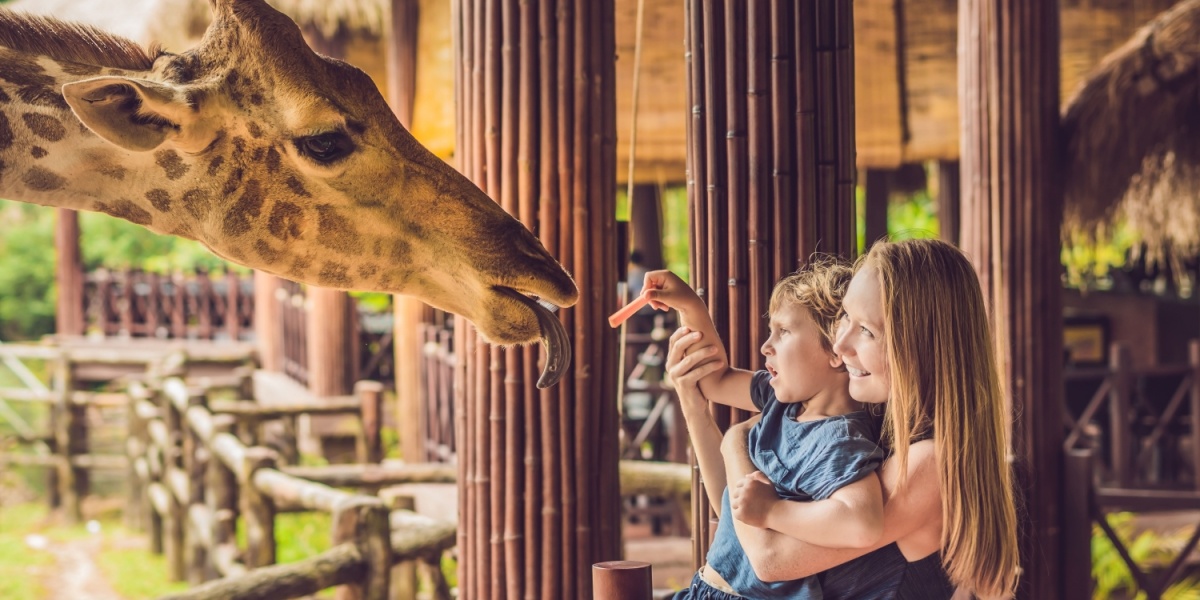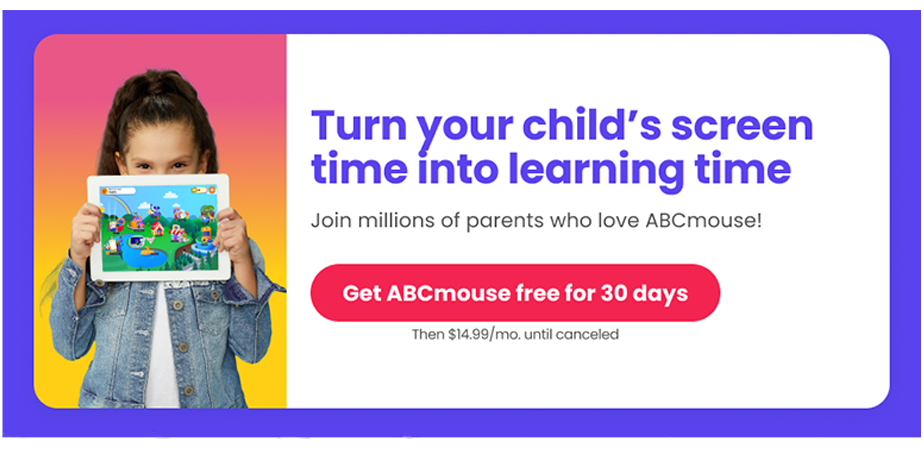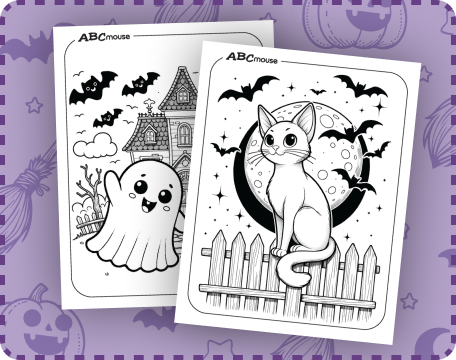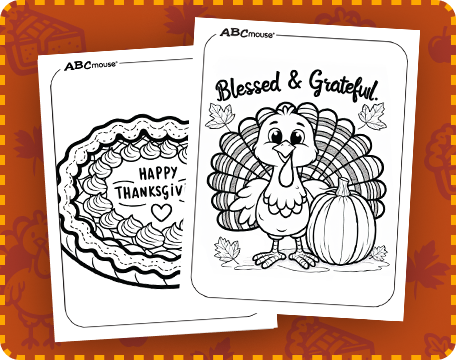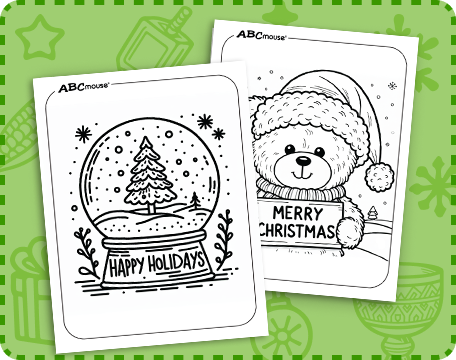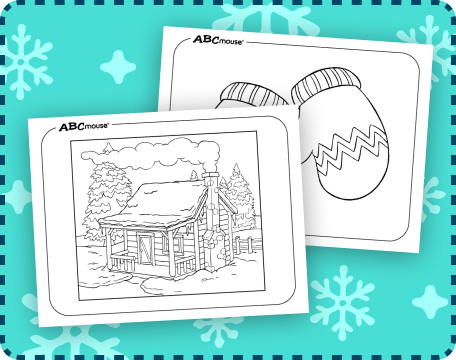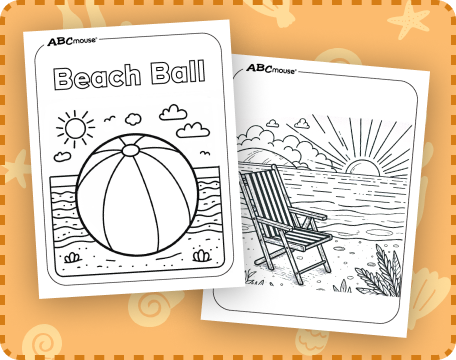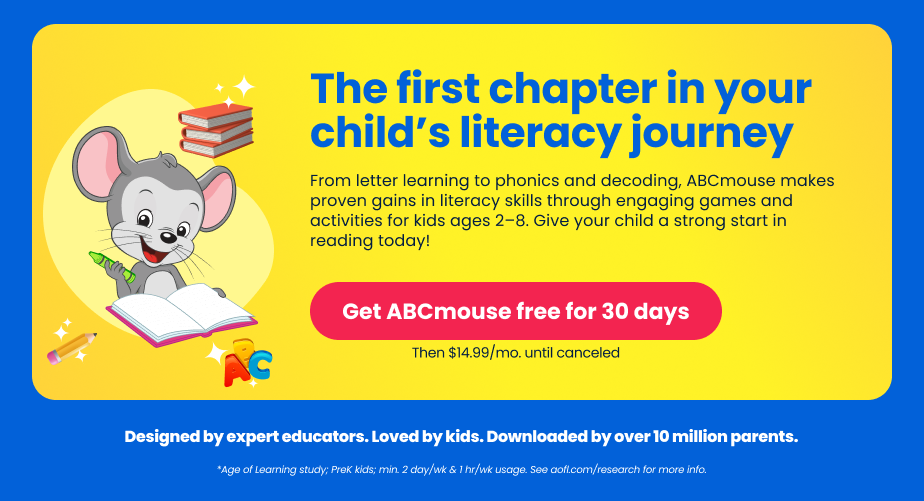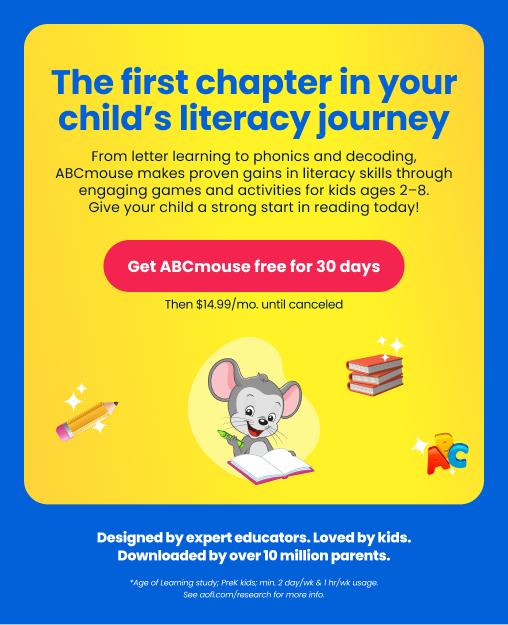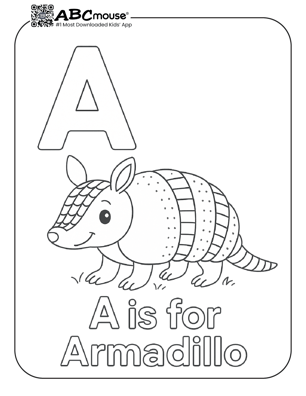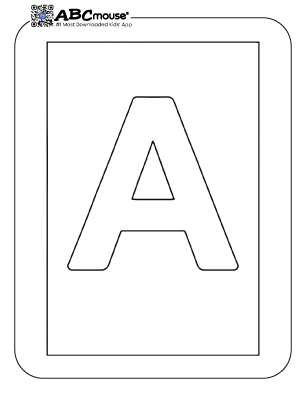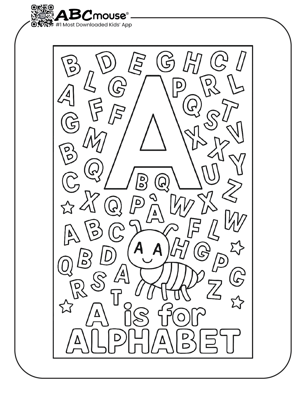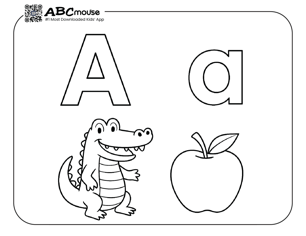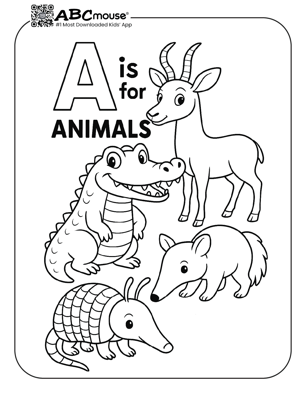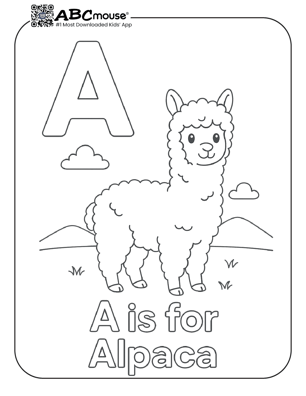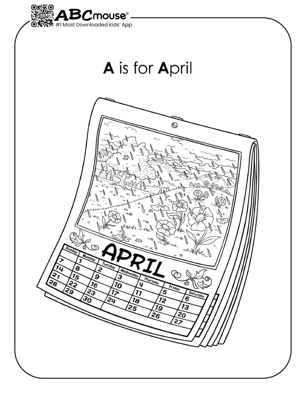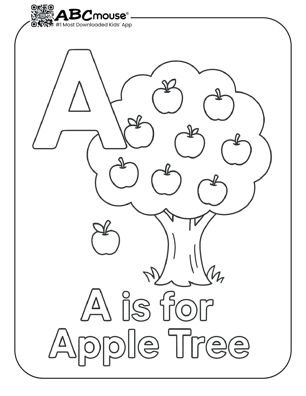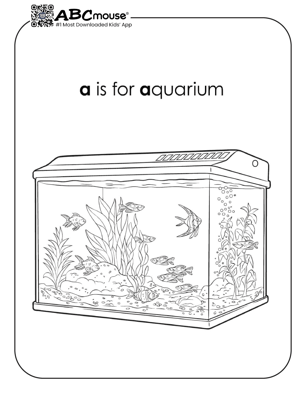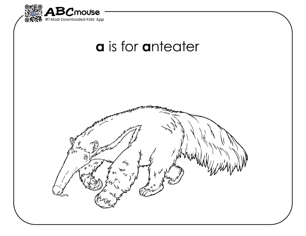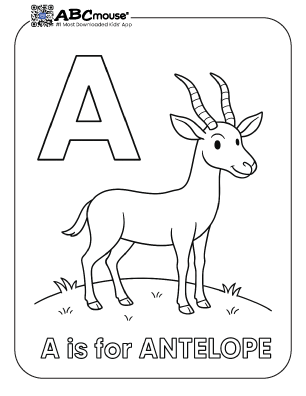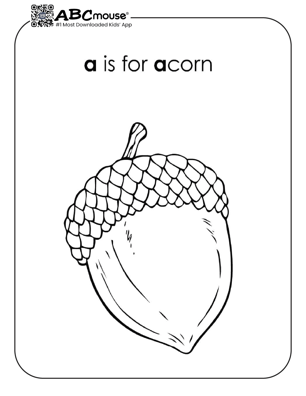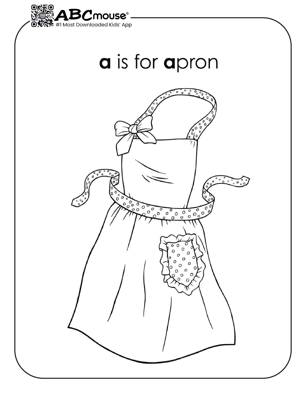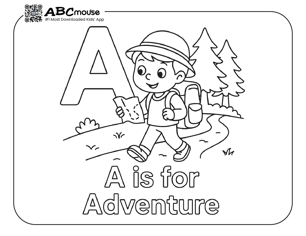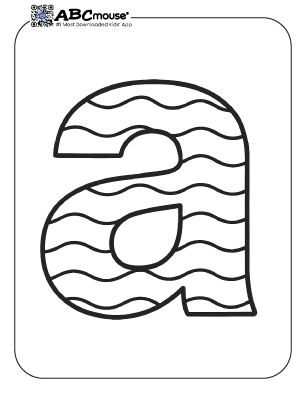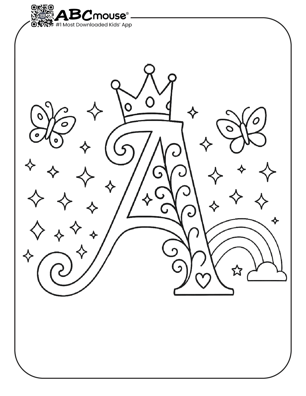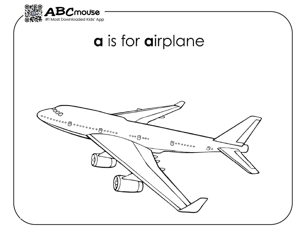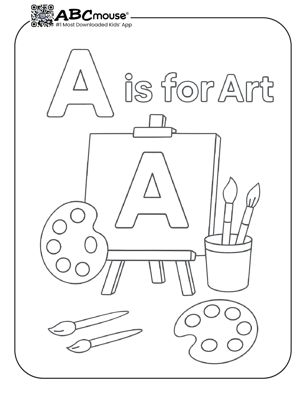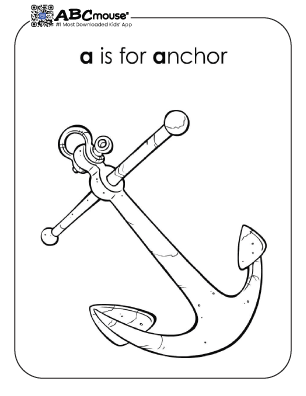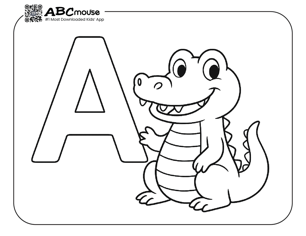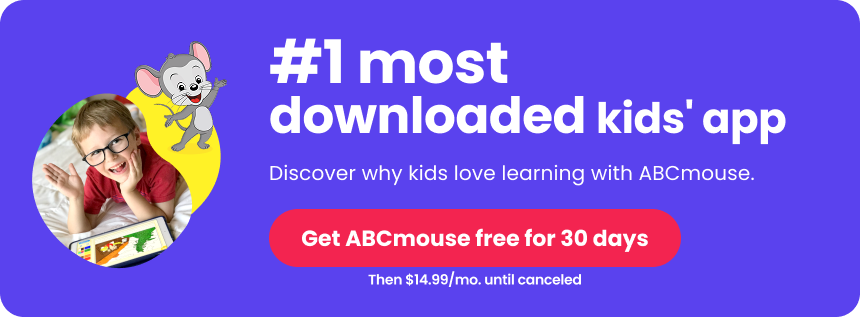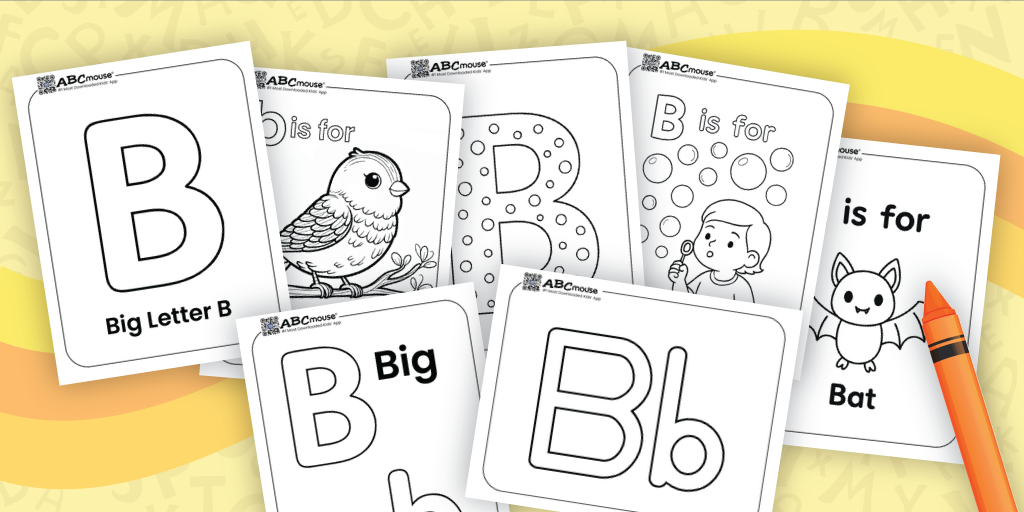
Letter B Coloring Pages for Kids (FREE Printables)
These letter B coloring pages are a great way to introduce young children to the shape and sound of this letter. Whether your little one is just starting to recognize letters or is ready to explore words that begin with B, there’s a coloring page here for every learner.
Be sure to check out our letter B learning activities and online games below too!
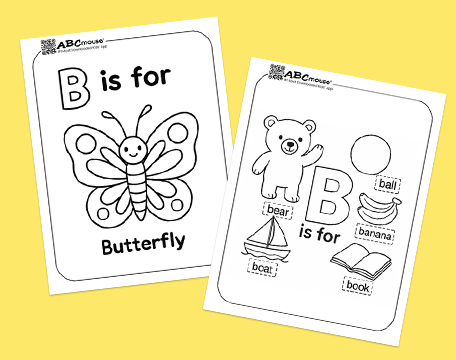
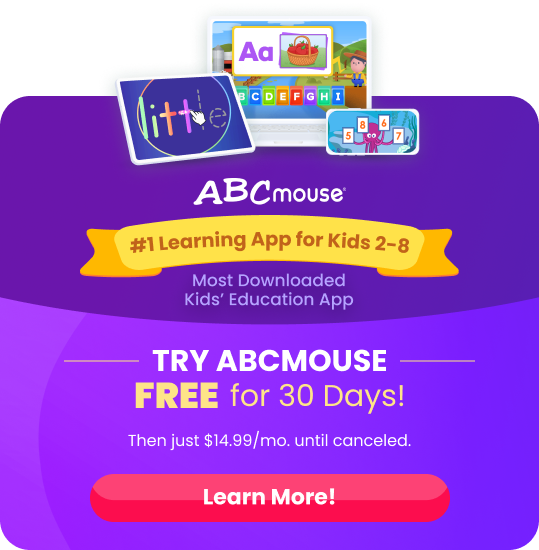
Overview of the Free Printable Letter B Coloring Pages
You’ll find letter B coloring pages for kids featuring simple Bs to trace or color, while others have more ornate designs. Kids can also pick and choose from coloring pages that featuring cute letter B pictures to get creative with.
Fun Activities for Learning the Letter B!
Recommended for: Toddlers, Preschoolers, & Kindergarteners
⭐ Play B is for Bounce
Practice the sound of the letter B and learning a few new letter B words in this fun game. Grab a ball and explain to your child that each time you bounce the ball back and forth, you have to say a letter B word, such as ball, bounce, or bear. If your child has some extra energy to burn, they can also bounce as they say the word. Use our Letter B Word List for help.
⭐ Free Online Letter B Tracing Games

ABCmouse offers hundred of free educational games for kids. Use our Rainbow Tracing game as an interactive way for your child to practice making the shape of the letter B.
⭐ Creative Letter B Shape Practice

Draw or print out the outline of an uppercase and/or lowercase letter B. Set out a few different ways for your child to fill in the shape, such as with beads or buttons or even just markers or paint.
More Free Printable Coloring Pages
-
Letter B Coloring Pages (Free Printables!)
Fun letter B coloring pages and activities to help kids explore letter sounds and words—free printables from ABCmouse.
-
Letter A Coloring Pages (Free Printables!)
Free printable letter A coloring pages with fun characters and activities for early alphabet learning.
-
Zoo Animal Coloring Pages for Kids (Free Printables!)
Free printable zoo animal coloring pages and activities to spark kids’ creativity at home, school, or before a zoo trip.
-
Letter C Coloring Pages (Free Printables!)
Free letter C coloring pages with fun images and activities to help kids connect the letter C with its sounds and shape.
-
Summer Coloring Pages for Kids (FREE Printables)
Dive into spring with our free printable coloring pages for kids! Featuring tulips, St. Patrick’s Day, Earth Day, Easter, butterflies, and Mother’s Day themes. Spark creativity…
-
25+ Zoo Themed Activities and Games for Kids
Zoo games, crafts, and coloring pages spark learning fun for kids who love animals and hands-on activities—online or at the zoo!
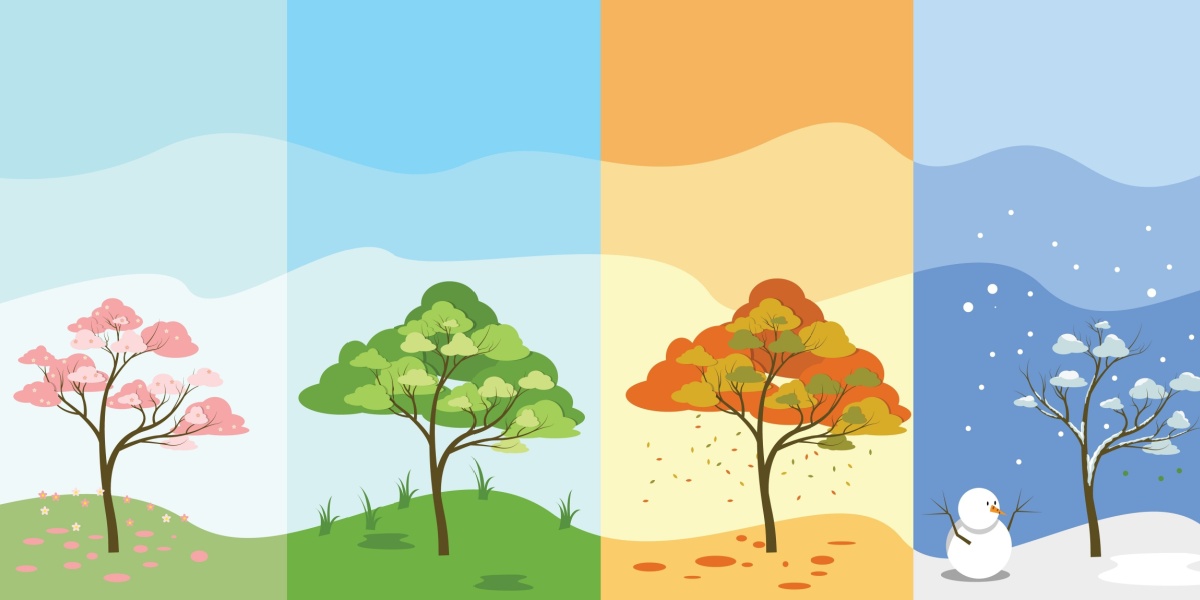
Holidays and Seasons Word Lists for Kids (Free Printables)
Table of Contents – Jump to Each Section
Word lists are a great way to help young children build their vocabulary and spelling skills. By using words that relate to holidays, like Christmas and Thanksgiving, or seasons, like fall and summer, kids can connect more easily with what they’re learning. These fun, themed word lists make practicing words more enjoyable and relevant to their world.
Free Holiday and Seasons Word Lists for Kids
Free Printable Seasonal Word Lists for Kids
These winter, spring, and summer word lists are great for creating poems, word searches, or adding some fun to vocabulary practice.
Winter Word Lists
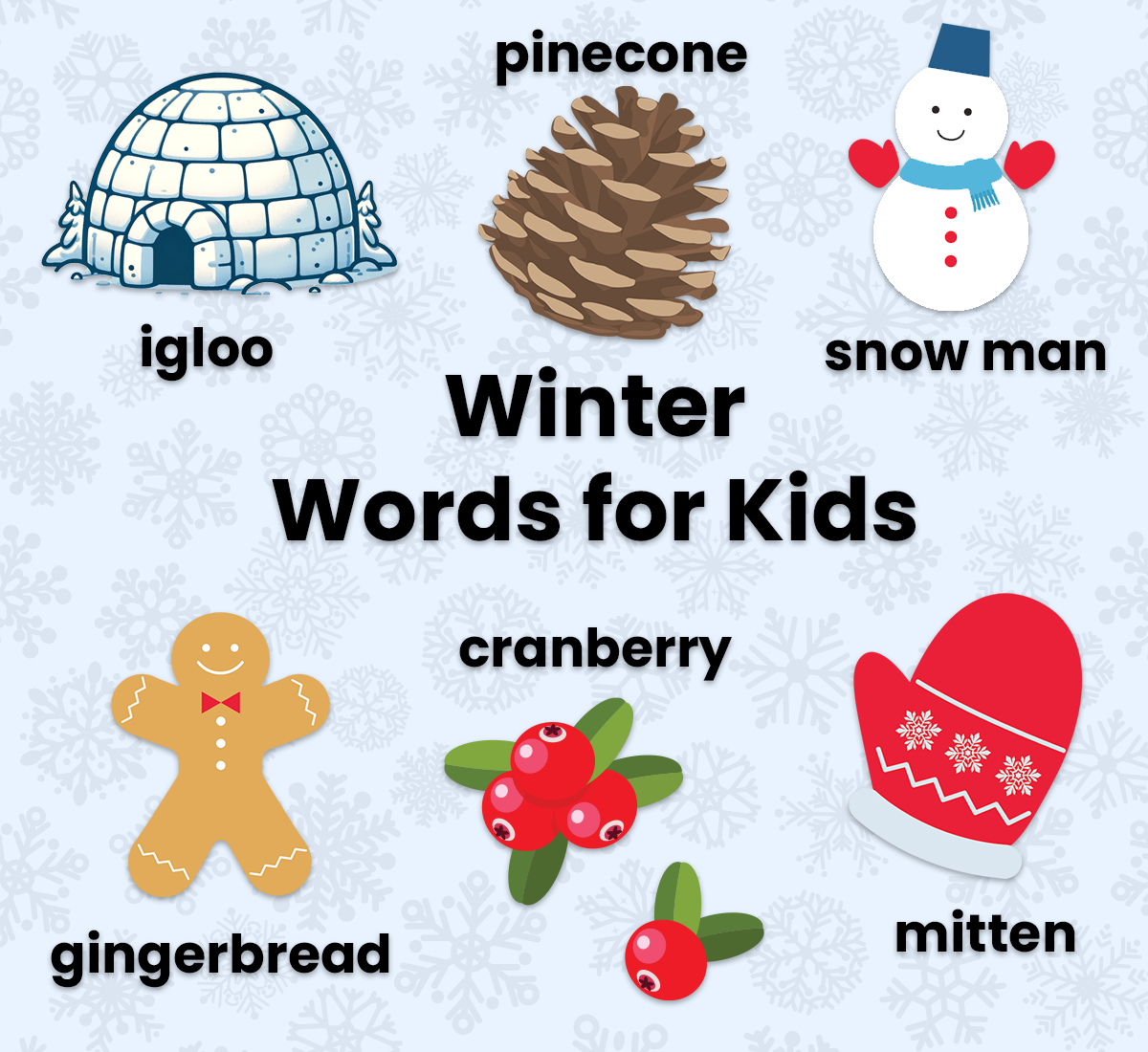
This winter-themed word list for kids is a great way to embrace the sight, sounds, and activities of the season.
Spring Word Lists
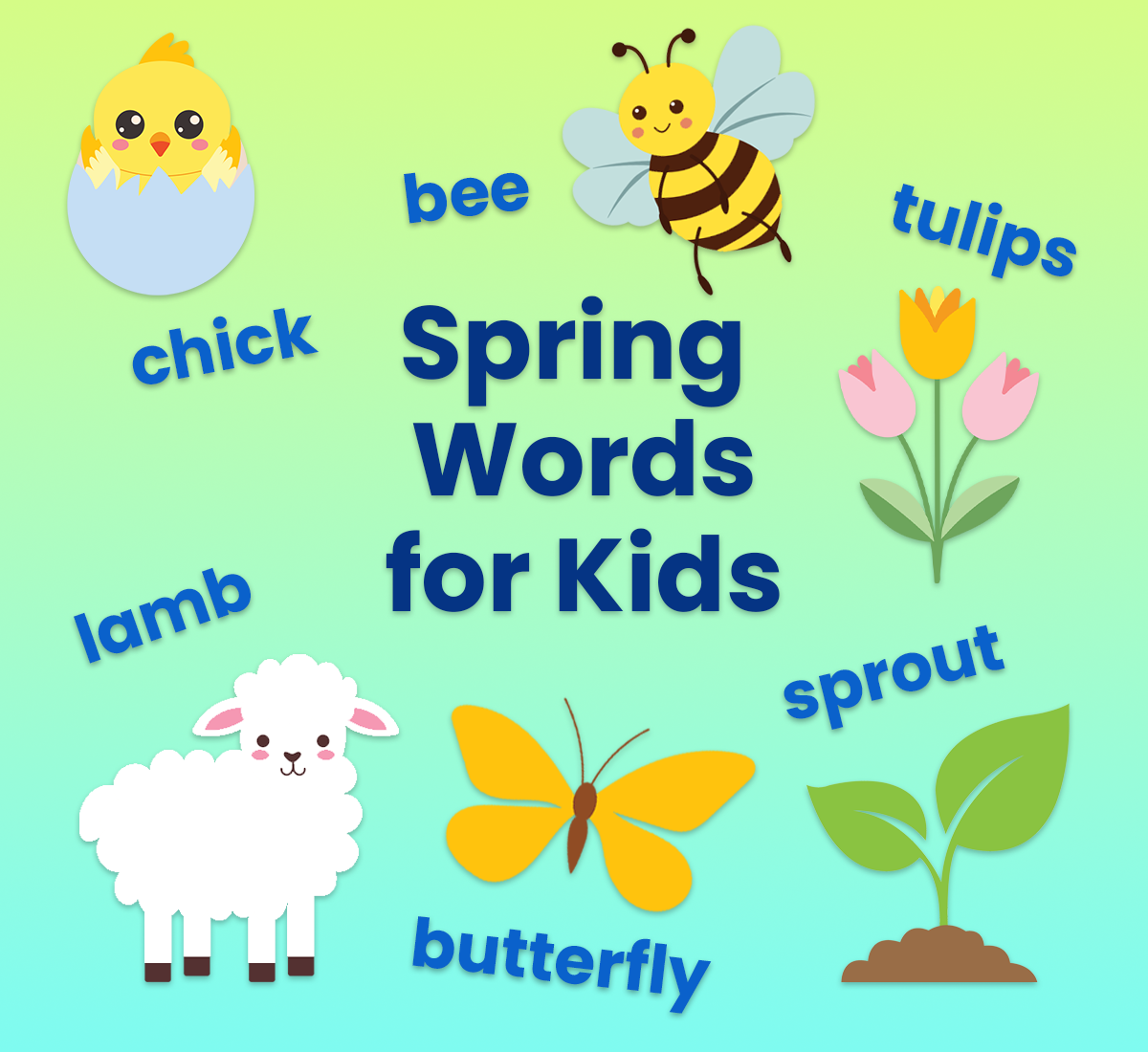
Grow the words your child knows with lists featuring terms associated with the spring’s weather, clothing, activities, and more.
Summer Word Lists
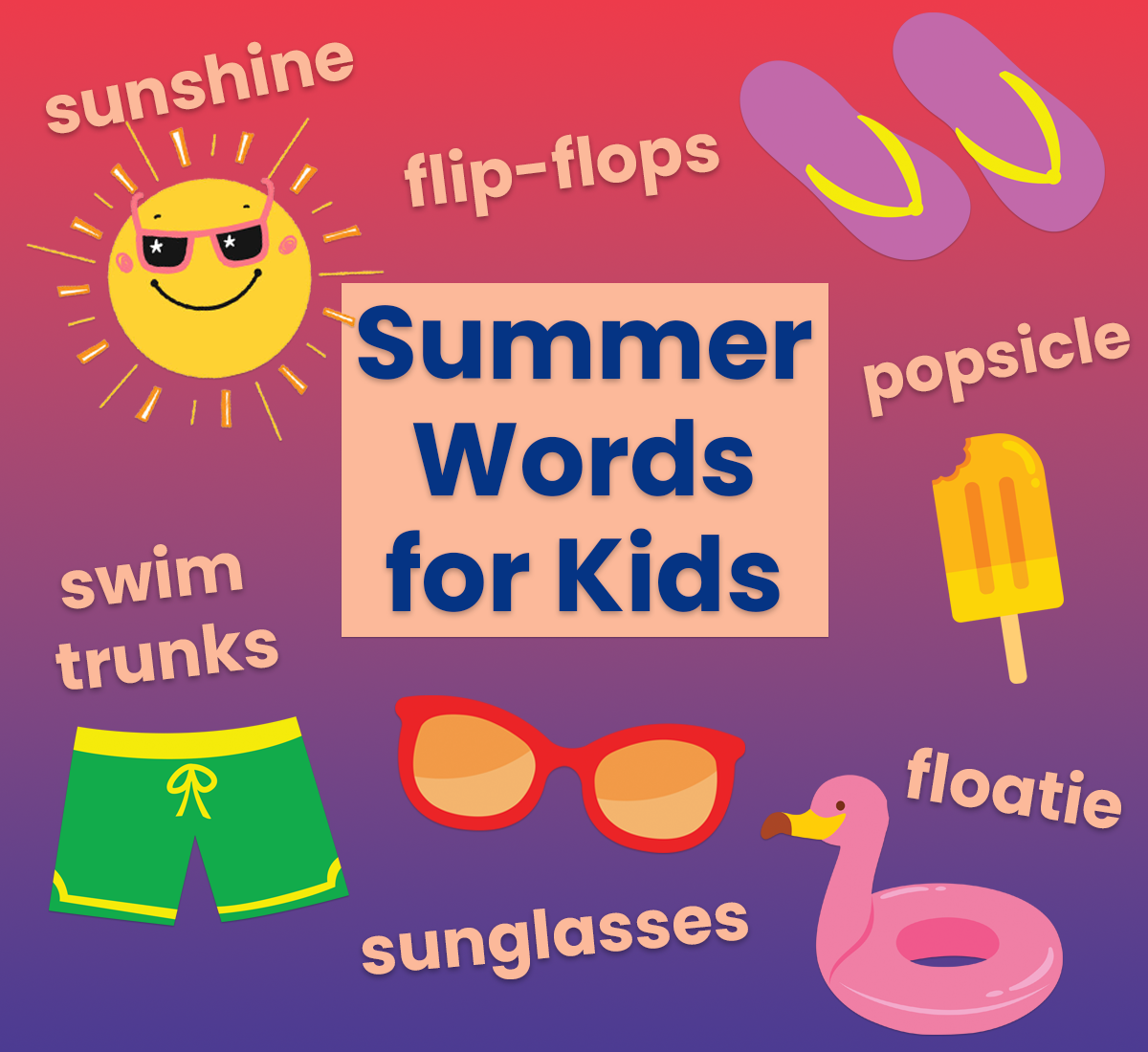
With over 400 summer words, these printable lists feature everything from tasty summer treats to warm-weather activities and events.
Free Printable Holiday Word Lists for Kids
The holidays provide a great opportunity to connect learning with the festivities children enjoy. Blend practicing these new words into the various activities and events to help make learning feel like part of the celebrations.
Halloween Word Lists
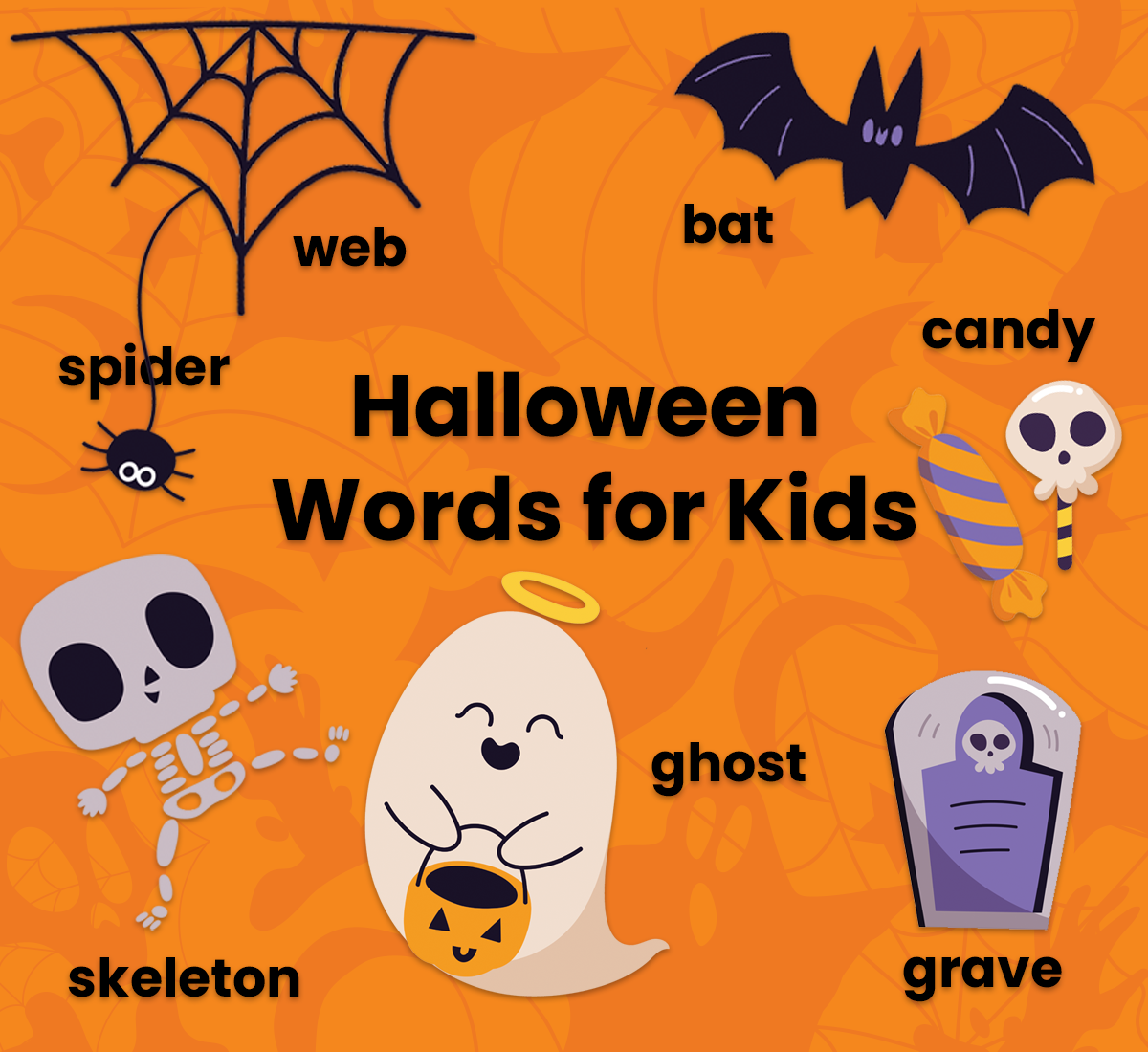
From spooky words to silly words, these Halloween terms highlight the best parts of the holiday.
Thanksgiving Word Lists
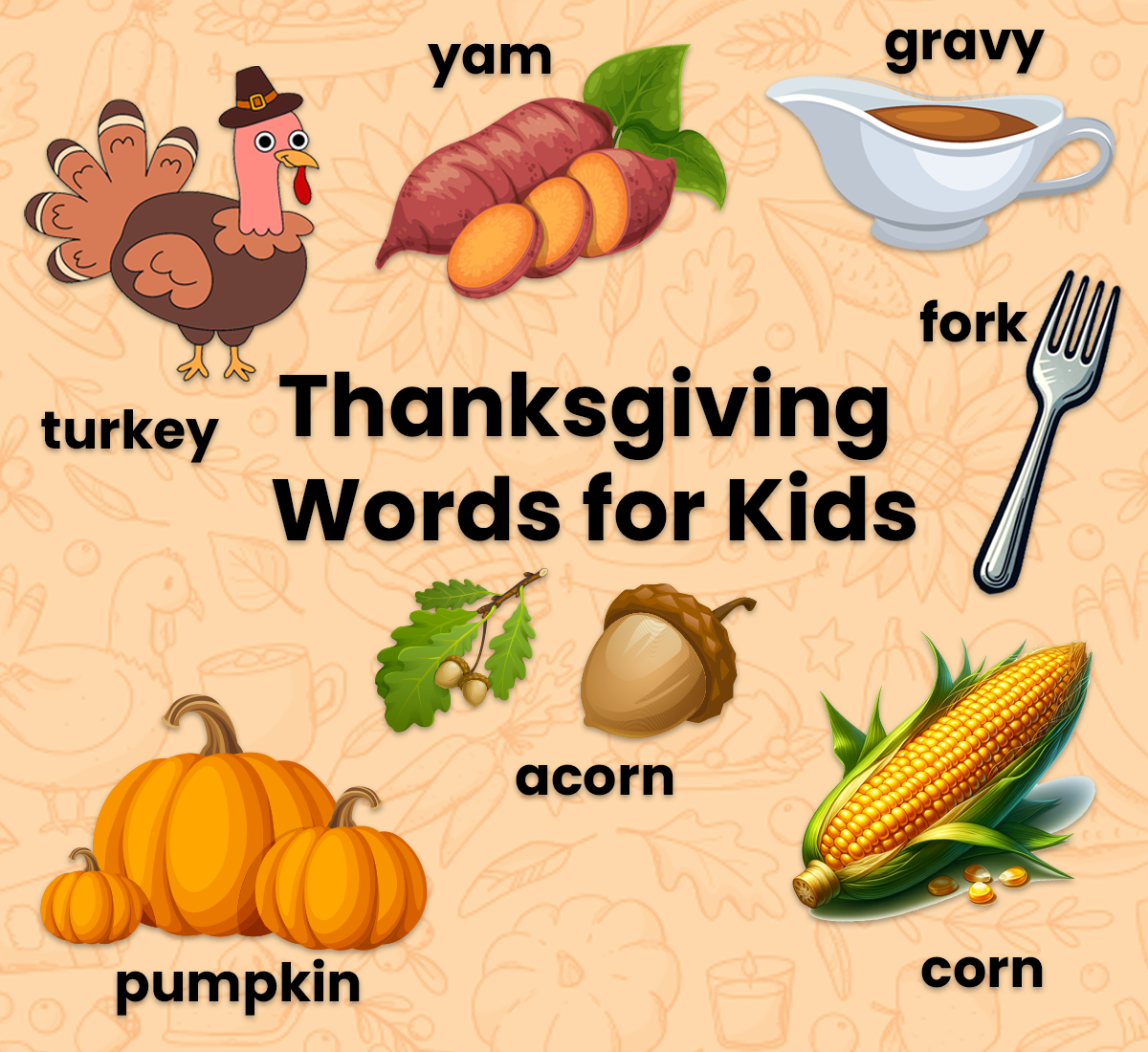
These Thanksgiving word lists capture the sentiments of the season, along with many of the favorite foods and items associated with it.
Christmas Word Lists
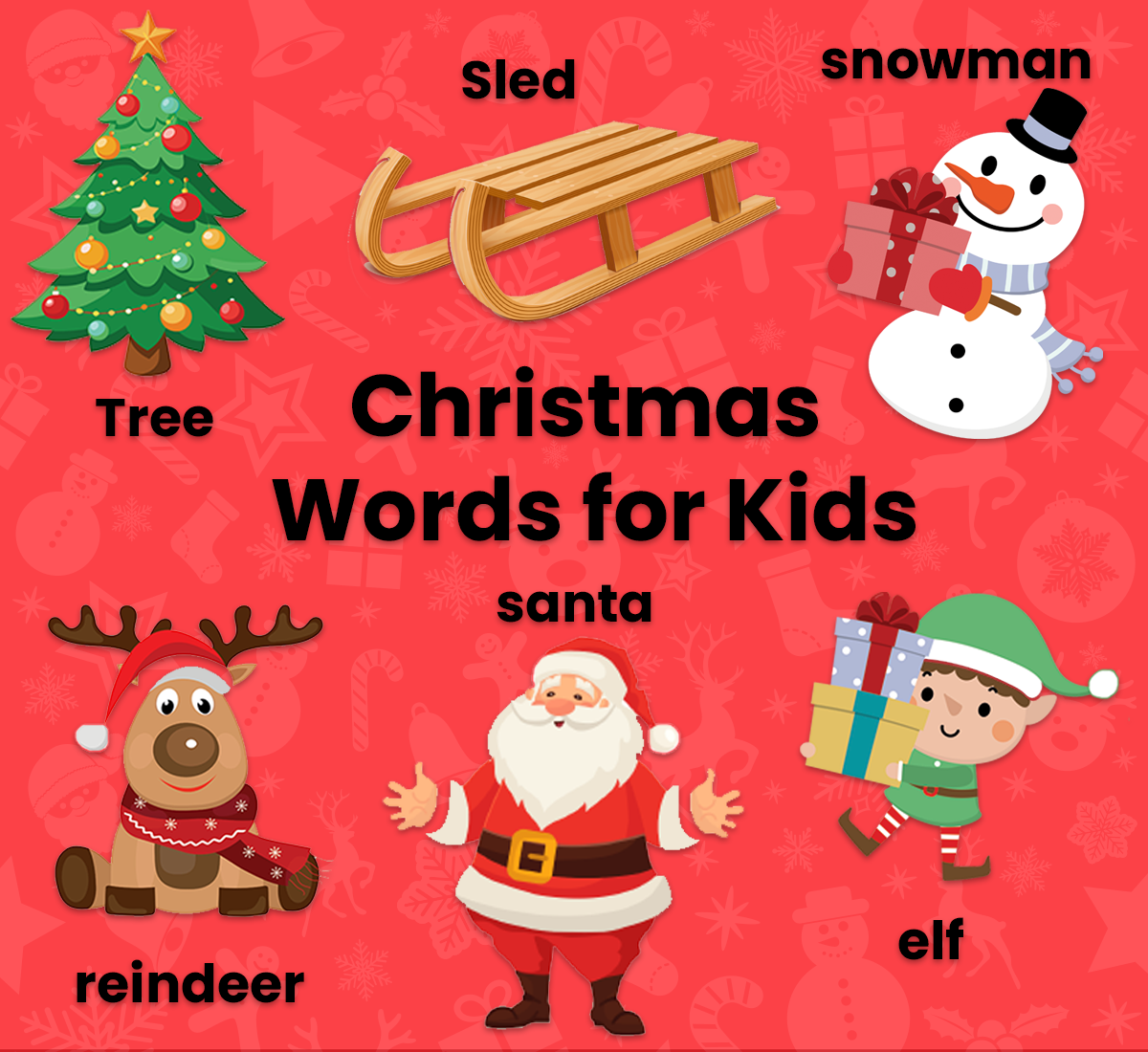
Embrace the magic of Christmas with words focused on kids’ favorite characters, foods, activities, and more!
Free Holiday and Seasonal Games for Kids
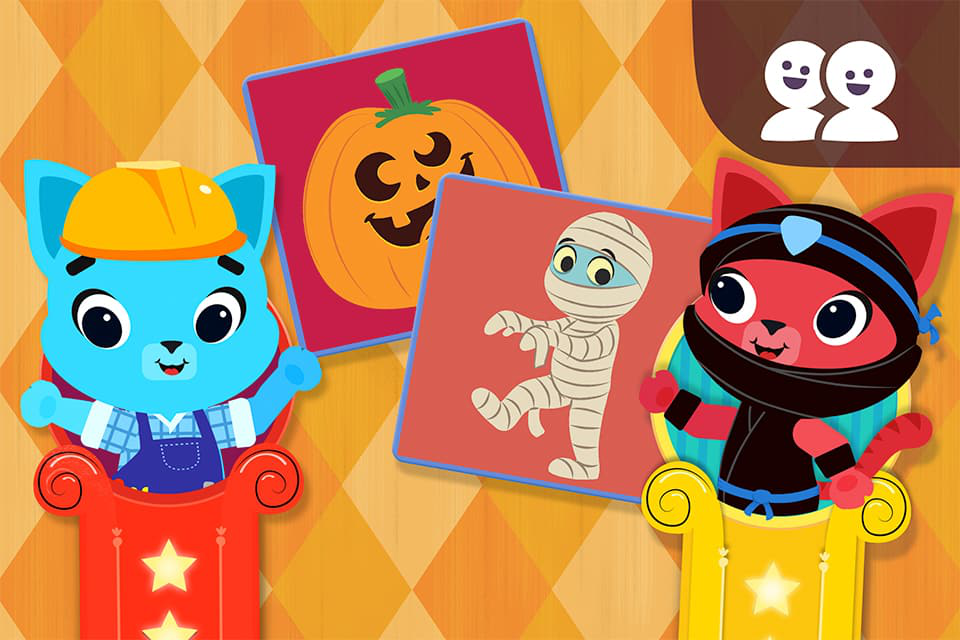
Memory Match -Play Together- Halloween
In this two-player game, kids take turn testing their memory to match Halloween images.
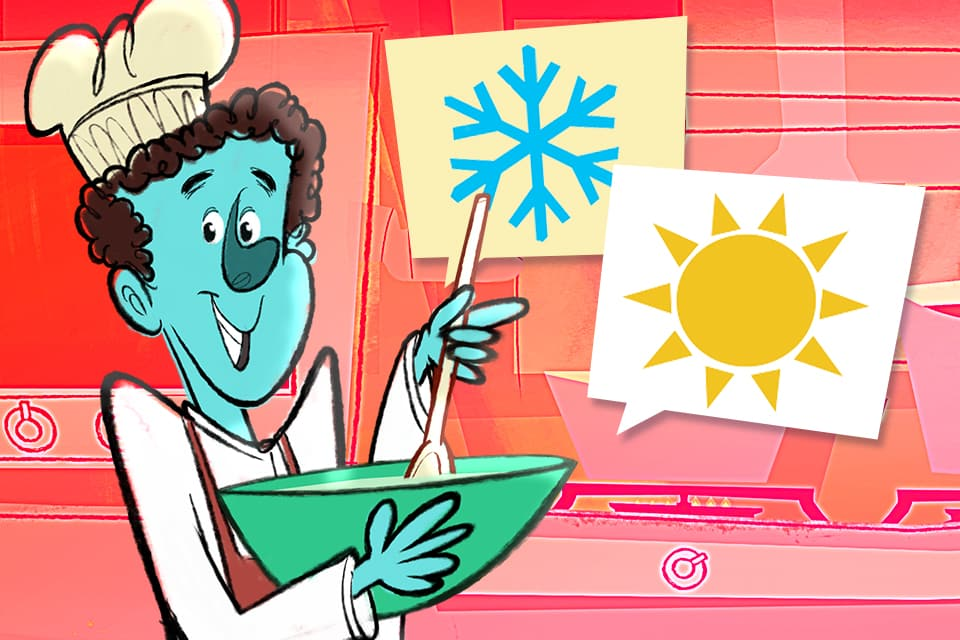
Mixed Up Seasons
Help the chef match the seasonal items to the correct season, like putting the rain boots into the mixing bowl labeled spring.
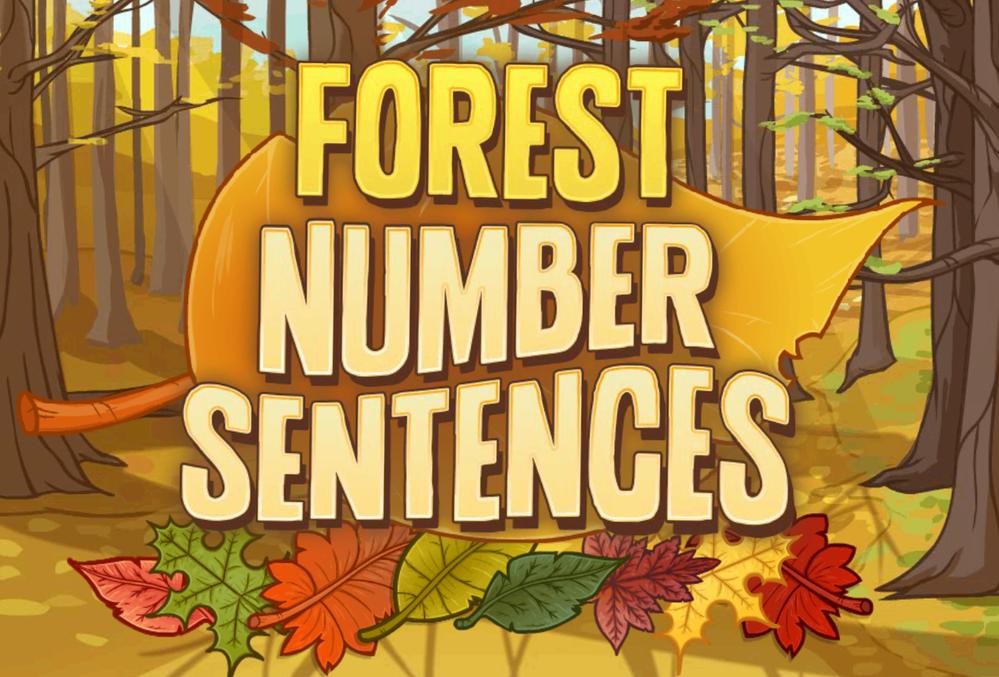
Forest Number Sentences
In this free online game for kids, players practice addition and subtraction in a fall forest.
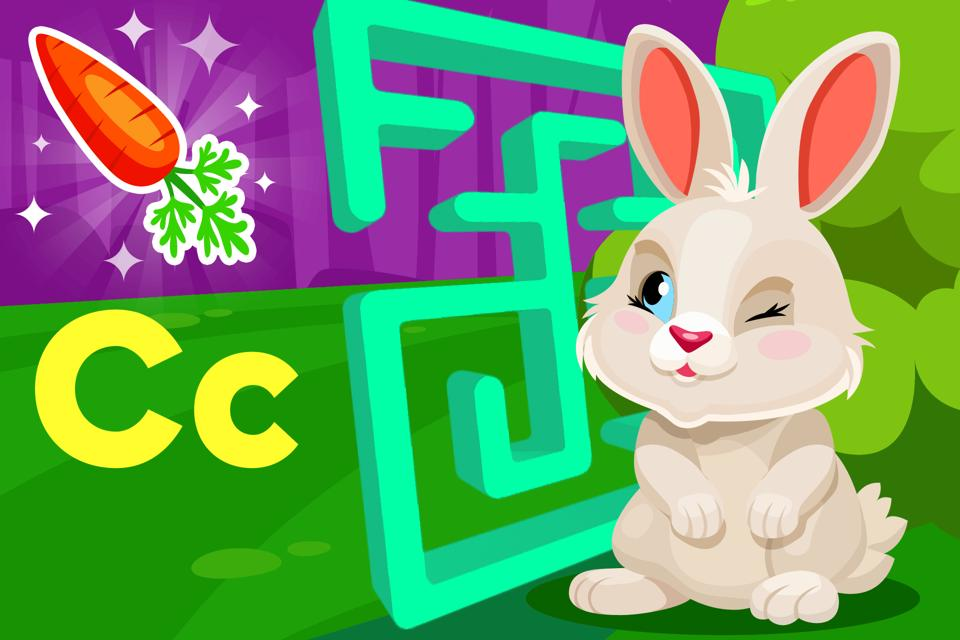
Bunny Themed Games
Lean into spring with a collection of games featuring cute little rabbits that help kids work on early literacy and math skills.

Holiday and Seasonal Coloring Pages
Coloring pages provide another fun way to learn about and celebrate different seasons and holidays.
Coloring Pages

Sight Word Lists for Kids (Free Printables)
Learning high-frequency words, also known as sight words, is a key part of early reading success. These commonly used words often don’t follow regular spelling rules, so recognizing them by sight can help young readers build reading fluency, grow their vocabulary, and boost spelling skills.
For kids in preschool through second grade, practicing with sight word lists can make it easier to master these important words, as practice becomes more straightforward. Organized by grade level, these free printable lists of sight words provide a simple, effective way to support reading development at home or in the classroom.
Free Printable Sight Word Lists for Kids
These printable lists of high frequency words provide a great way for kids to learn and practice with the word they most commonly see in text. Each list can be downloaded as PDF and printed, making it easy to use them at home or in the classroom.
Tip for Teaching Sight Words
Sight words were once thought to be best learned through memorization. However, it’s now believed that children learn them more effectively by using familiar phonics and letter sounds. This helps them break words into parts instead of memorizing them as wholes. Our How to Teach Sight Words post shares more tips for teaching sight words.
First 100 High Frequency Word Lists
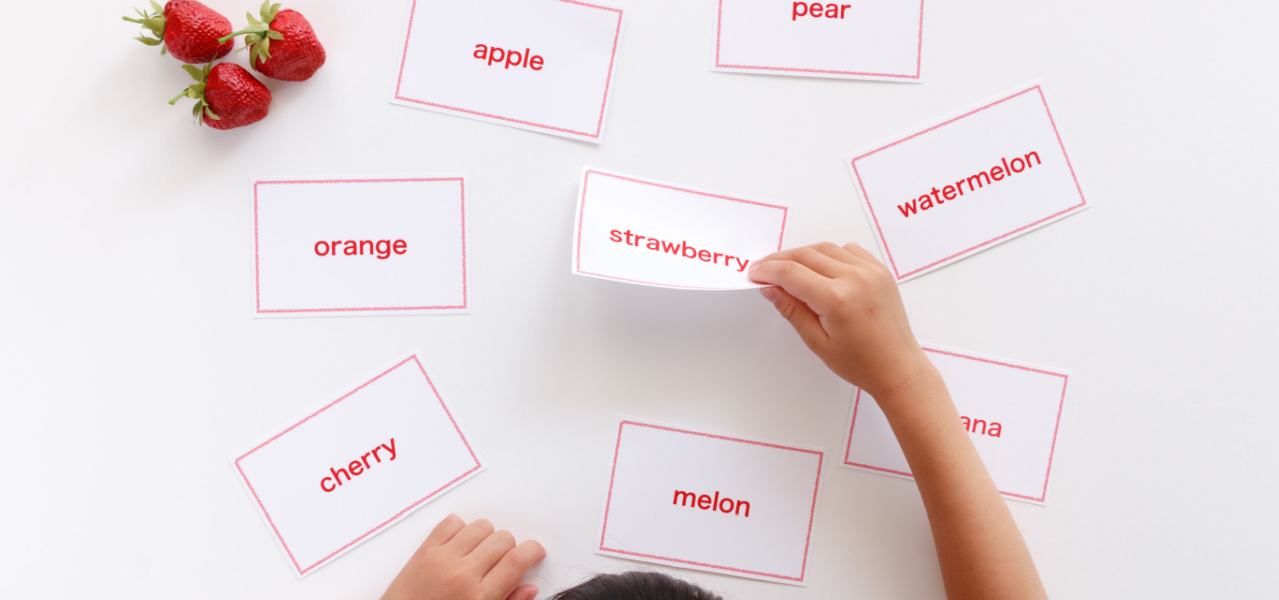
Our free printable list of the first 100 high frequency words your child should learn is organized by CVC words, word families, heart words, and more.
Preschool Sight Word List

Not all preschoolers are ready to work on sight words. If your child seems curious about the words they frequently see and hear, this list is a good place to start.
Kindergarten Sight Word List
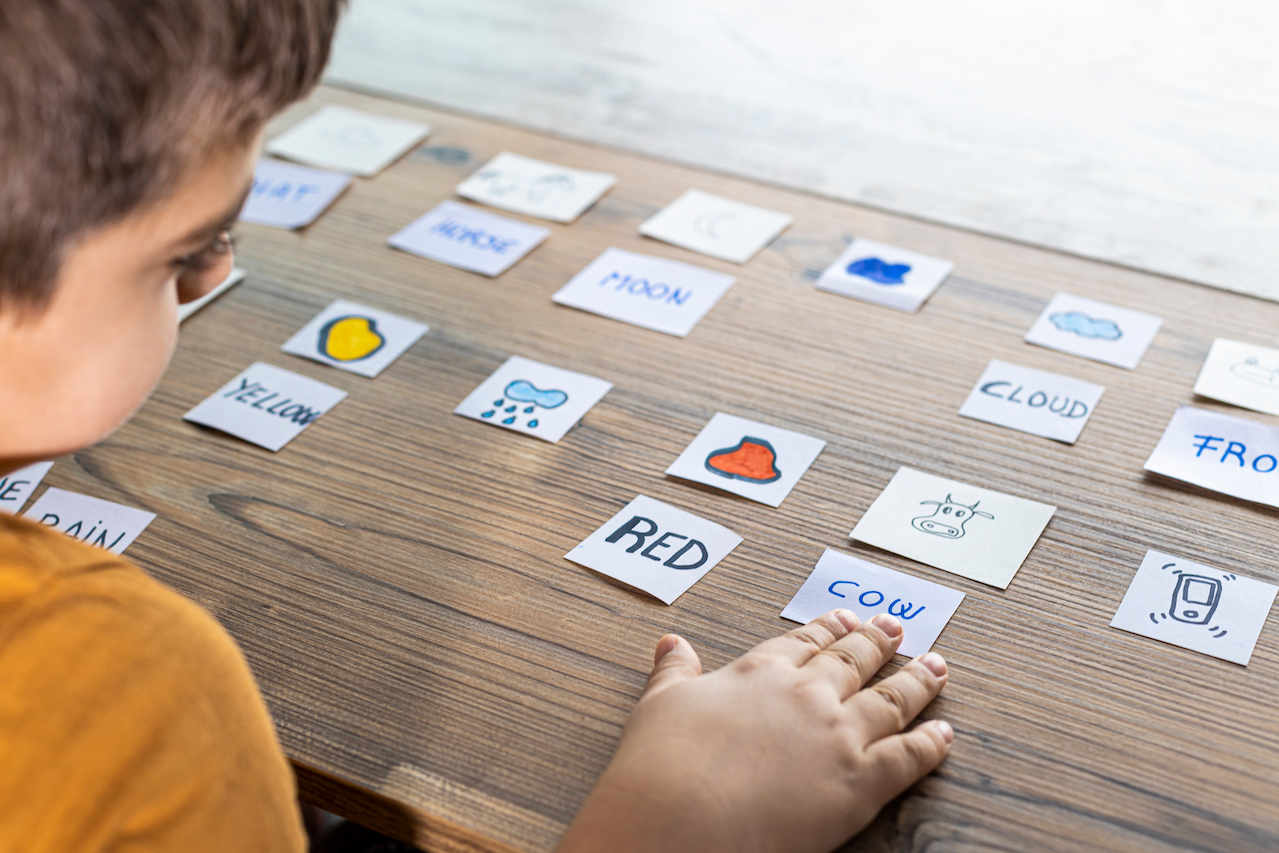
This list features some of the most common sight words for kindergarteners. They should eventually learn to recognize these words instantly, after trying a phonetic approach to the words first.
First Grade Sight Word List
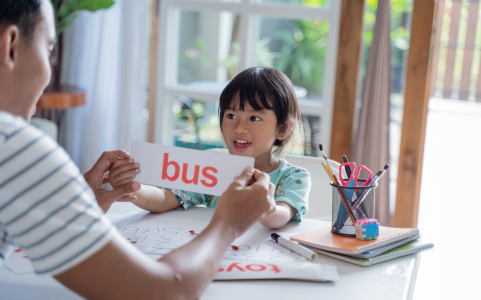
Our first grade sight word list features more words for your child to learn and uses a few of them in sentences to help children better understand their meaning.
Second Grade Sight Word List
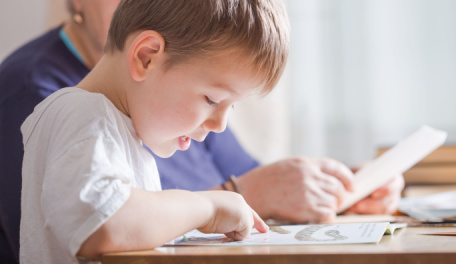
Practicing with second-grade sight words can boost literacy growth, and this list features a few of the most common words they’ll encounter.

Sight Word Printables and Activities
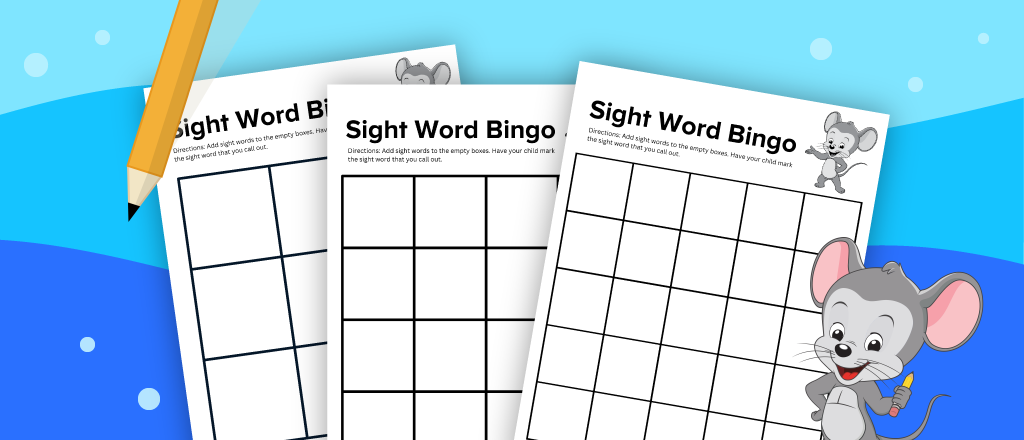
Check out our collection of sight word resources, including tips and how-tos, along with free printables, activities, and games for your child.

Free Online Sight Word Games for Kids

Rainbow Traceables: Sight Word Two
Kids will loving using a rainbow to trace the sight word two in this game for young learners.
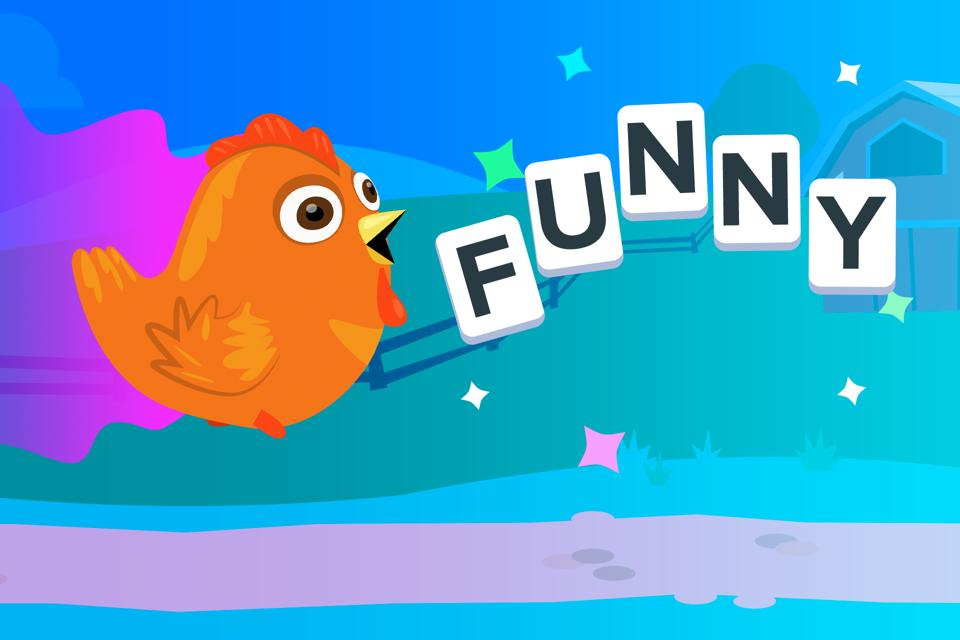
Run, Chicken, Run: Sight Words
Kids can help the chicken run through the farm by collecting sight words like we, it, funny, and look!
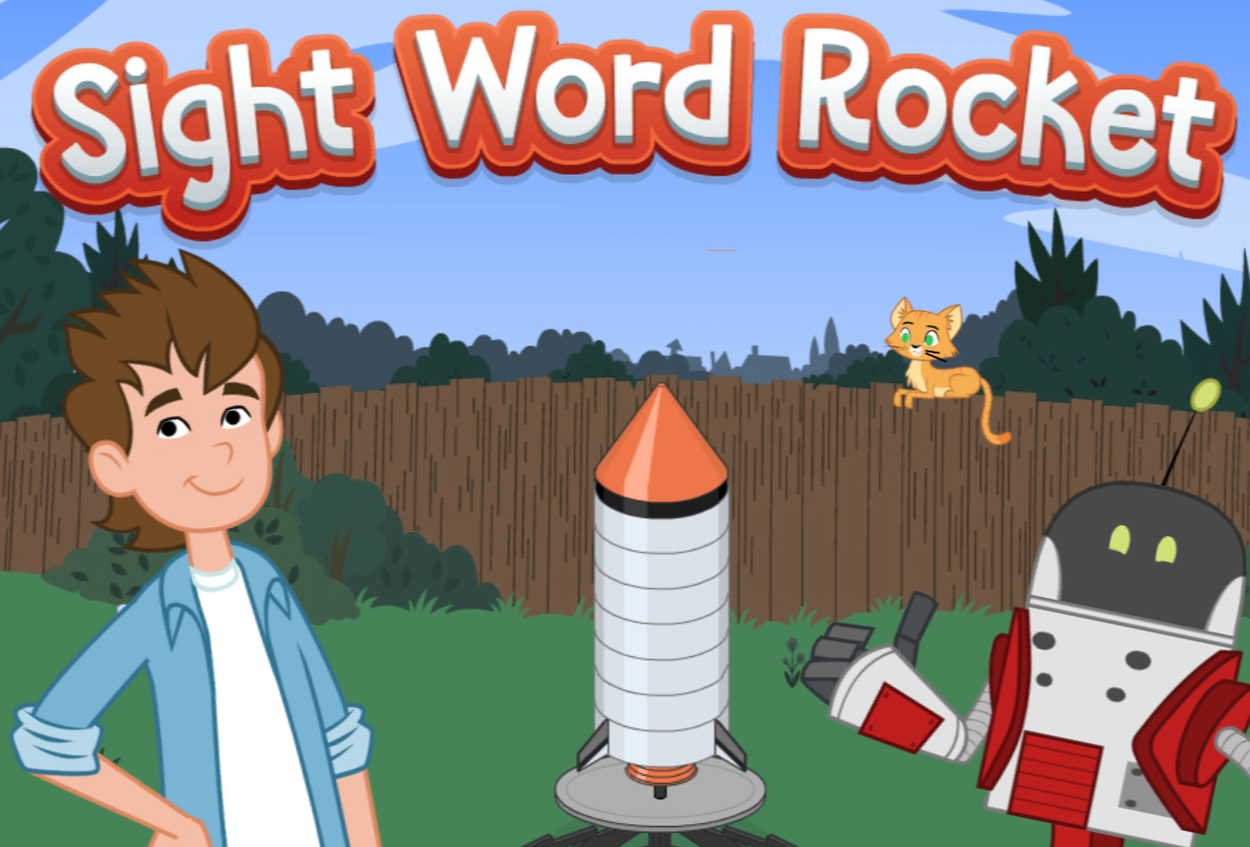
Sight Word Rocket
Choose the correct rhyming sight words to help Ben and his robot finish building their rocket.
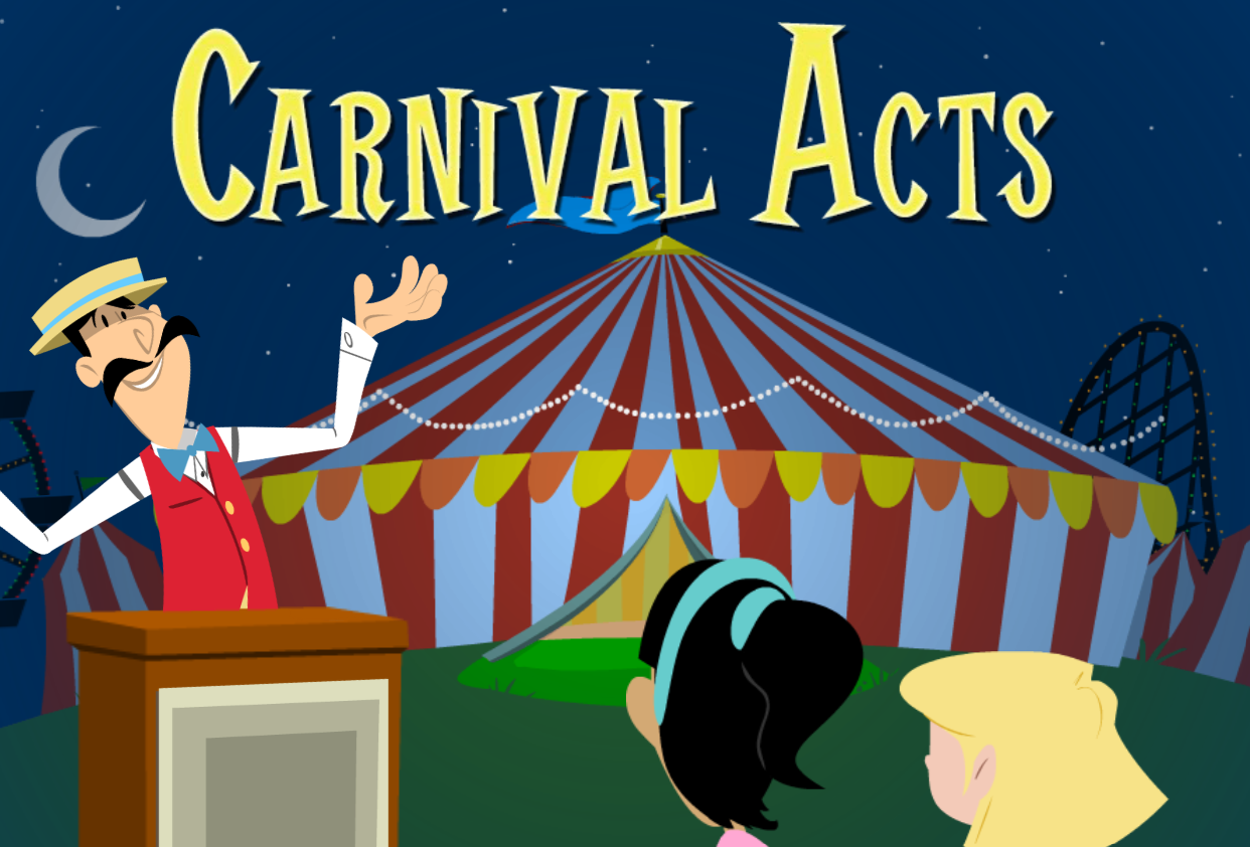
Carnival Acts
Play some carnival games while practicing with sight words in this game designed for first graders.

Syllable Word Lists for Kids (Free Printables)
These syllable word lists provide a great way for kids to practice with breaking words apart into smaller, more manageable pieces. Working with syllables helps children become stronger readers by teaching them how to separate words into parts they can hear, say, and spell, supporting important skills like decoding and pronunciation.
Why should kids practice with syllables?
Working with syllables supports key literacy skills such as decoding and spelling. When children learn to recognize syllables, they can break unfamiliar words into smaller, easier-to-read parts. This helps them sound out words more confidently and strengthens their spelling skills.
Using printable word lists like these, which are focused on open and closed syllables and one-, two-, and three-syllable words, gives children clear, focused practice and helps them recognize patterns that can boost literacy and spelling skills over time.
Free Printable Syllable Word Lists for Kids
These printable syllable word lists are a great resources to help kids learn and practice with words featuring open and closed syllables as well as different numbers of syllables. Along with word lists, you’ll also find tips for teaching children about syllables and activities to help reinforce learning. Each list can be downloaded as PDF and printed, making it easy to use them at home or in the classroom.
Open and Closed Syllable Word Lists
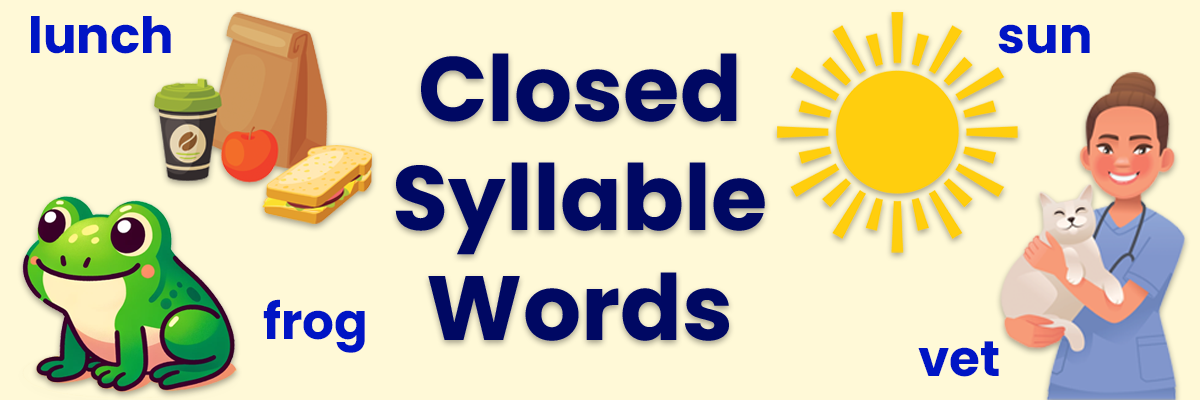
A closed syllable is a syllable in which a single vowel is followed by one or more consonants and the vowel typically makes a short sound.
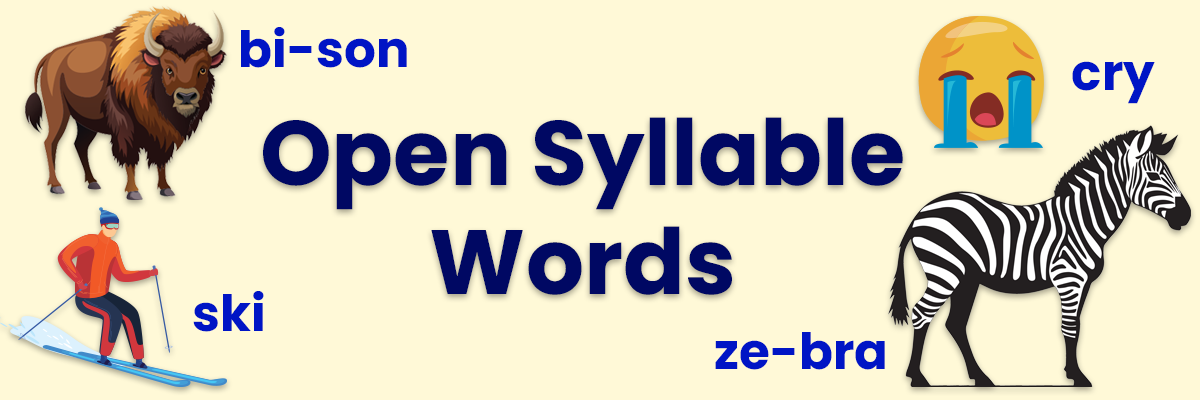
Open syllables end in a vowel and do not have a consonant following it. In open syllable words, the vowel typically has a long sound.
How to Teach Open and Closed Syllables to Kids
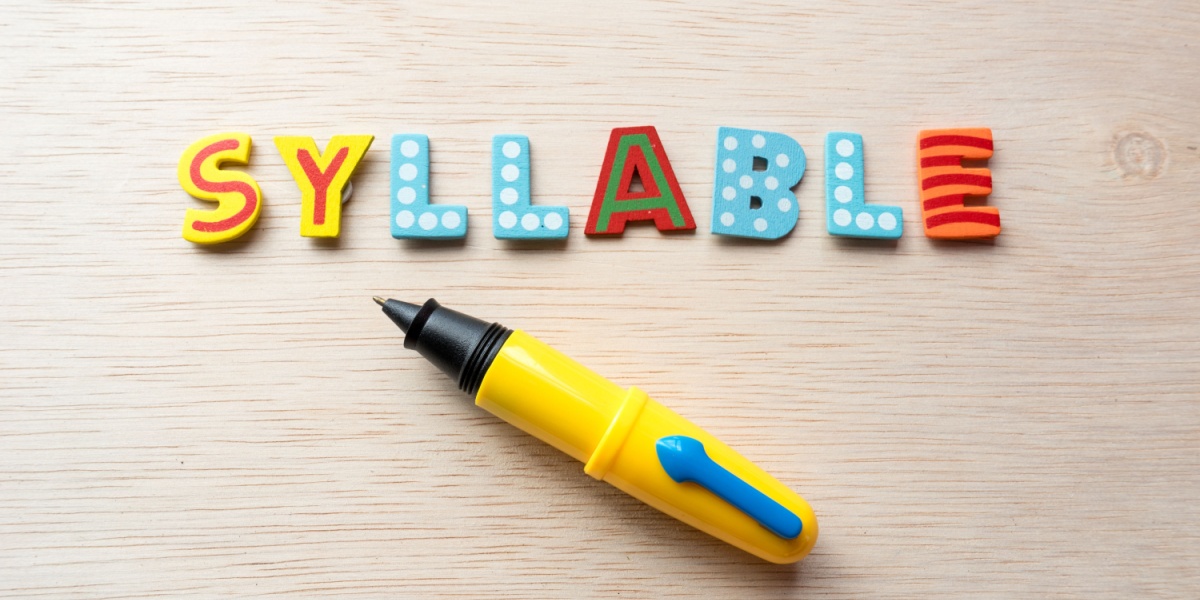
Get insights and ideas for helping children learn and understand the difference between open and closed syllables.

One-, Two-, and Three-Syllable Word Lists
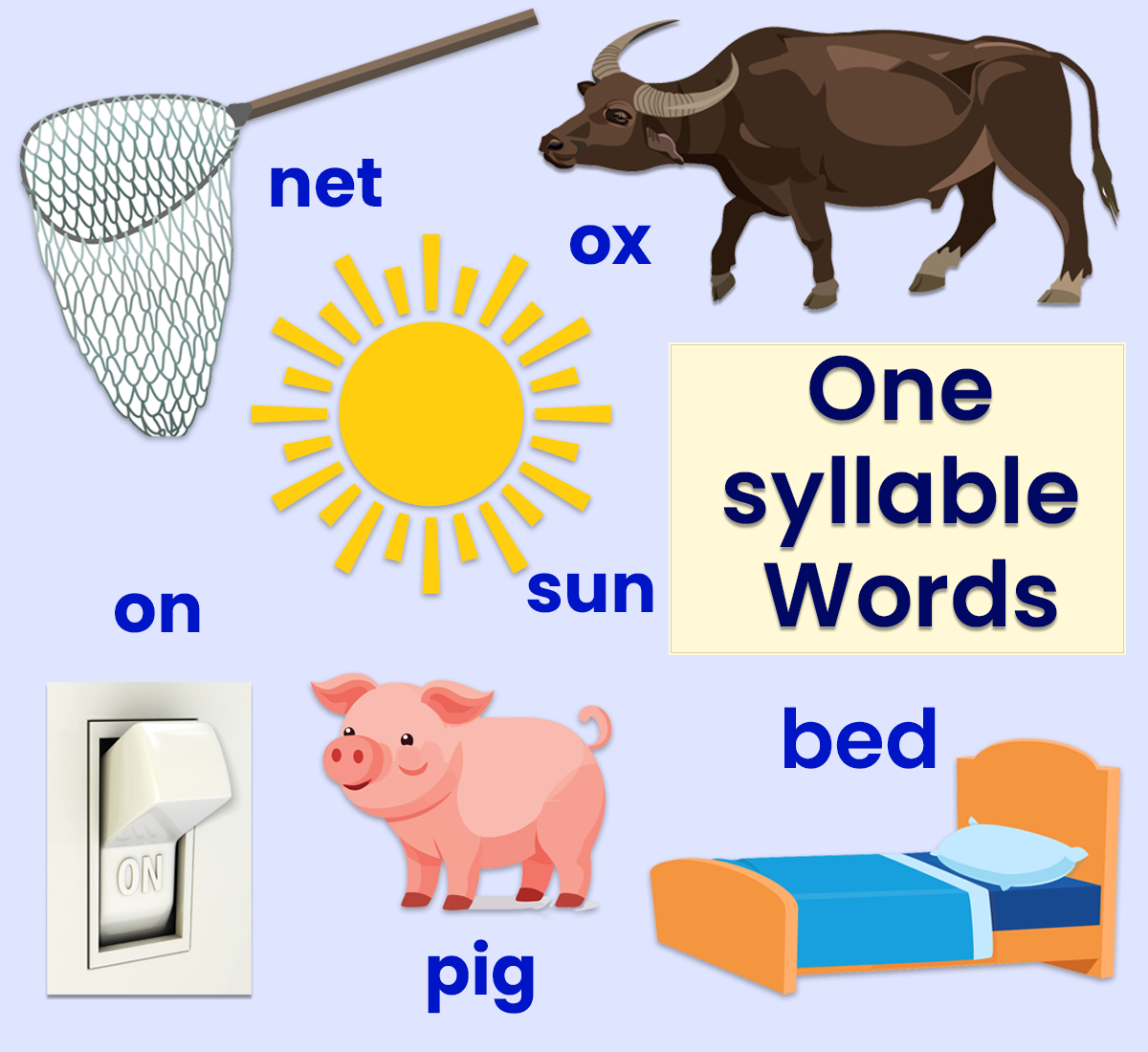
One-syllable words are a key building block for early reading. This free printable list is organized alphabetically to help simplify sounding out words with your child.
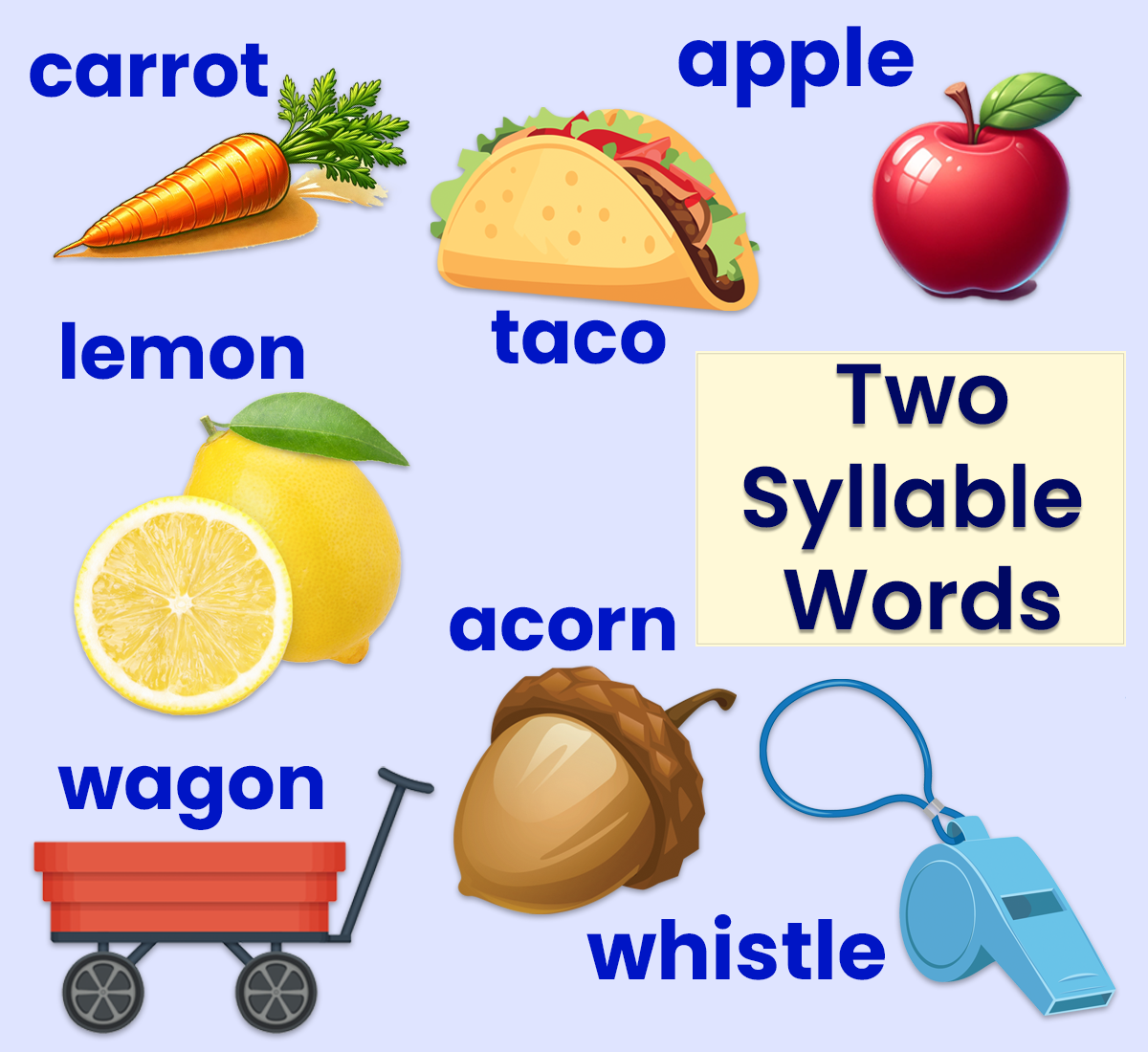
Two-syllable words help to create a bridge between simple vocabulary words and more complex, multi-syllable words as children’s language skills grow.
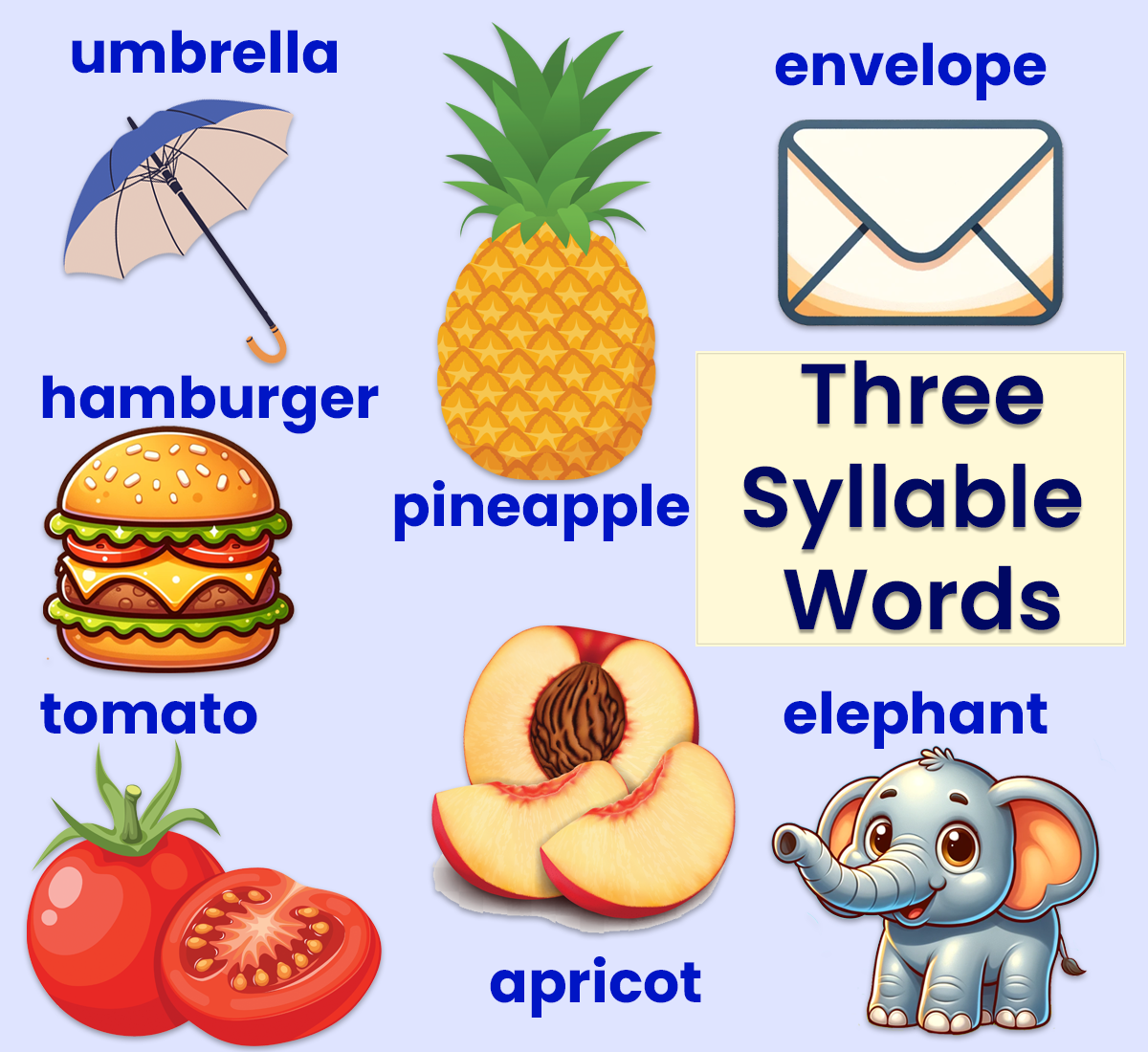
This printable list of three-syllable words is designed to build off of our one- and two-syllable word lists, helping children improve their ability to break longer words into smaller parts while also building vocabulary and spelling skills.

Free Printable Syllable Worksheets
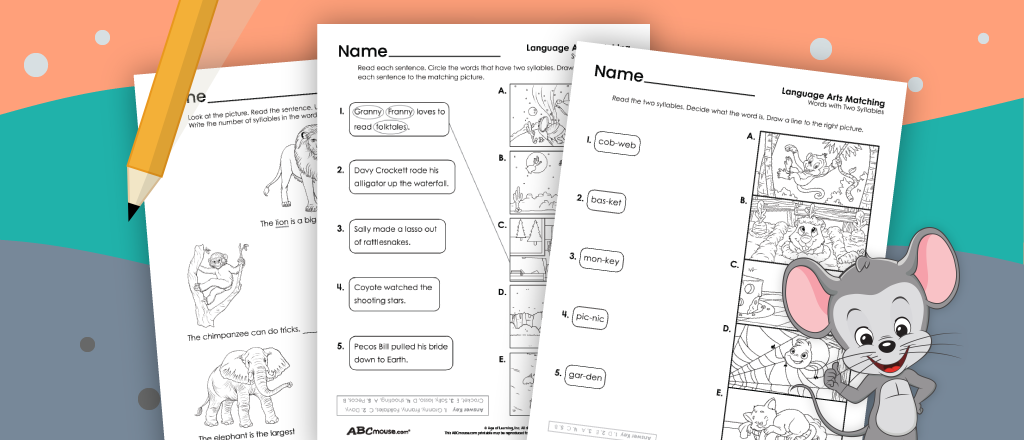
These free syllable worksheets offer fun, varied activities—like fill-in-the-blanks and crosswords—to help children learn how to break words into syllables.

Free Syllable Games for Kids

Wetlands Syllable Search
Carla needs help to complete her list of wetlands plants and animals. Put the correct syllables together to form their names.

Bongo’s Bongo Beats
Join Bongo in a game listening to animal names and working to count the number of syllables in each one.
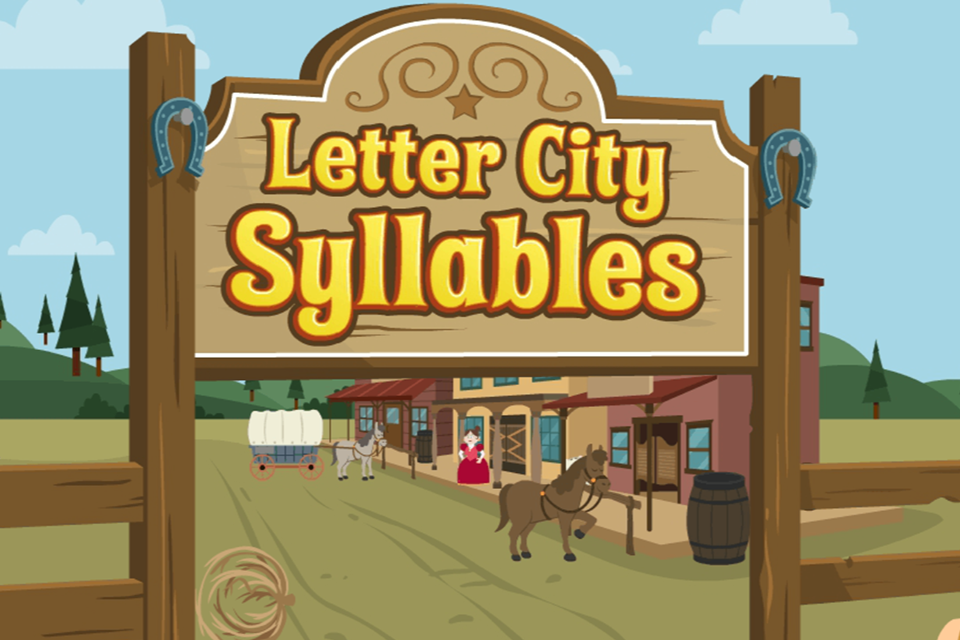
Letter City Syllables
Join Prospector Paul and his mule Strauss in Letter City, where they’re building two-syllable words to tell the story of their trip.
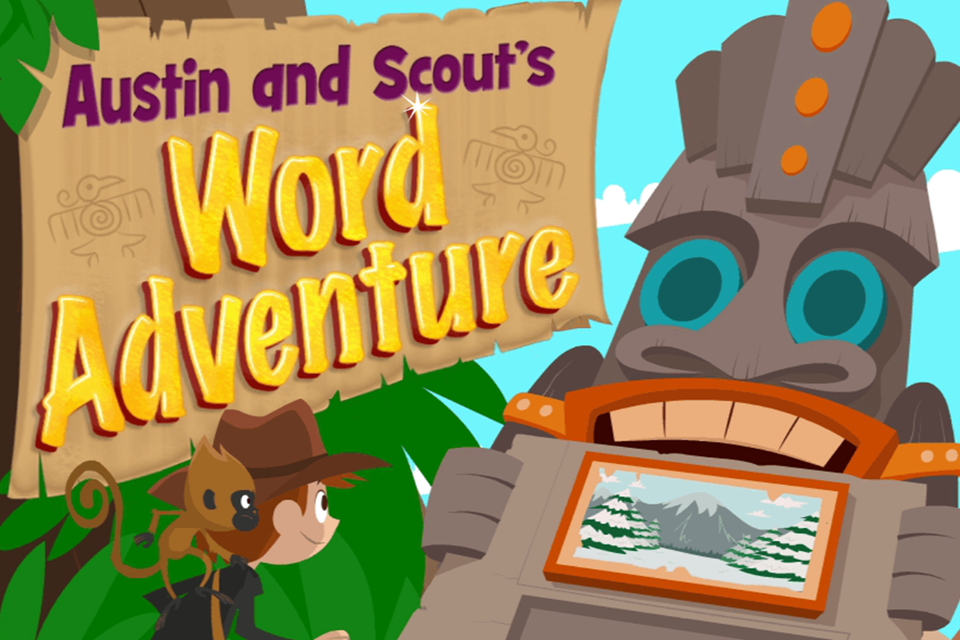
Austin and Scout’s Word Adventure
Help Austin and Scout find the lost city by putting together the correct pieces of two-syllable words.

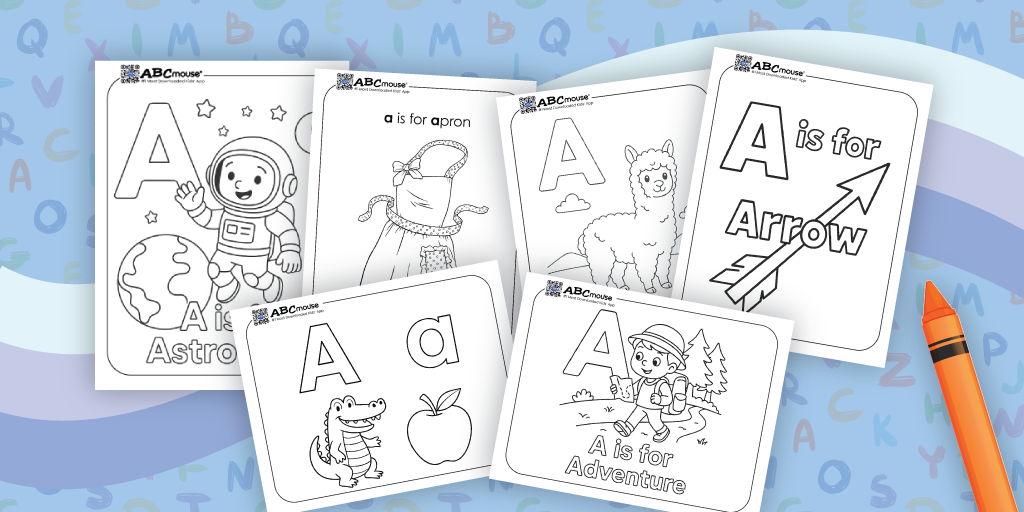
Letter A Coloring Pages for Kids (FREE Printables)
Add some creativity and fun to learning the first letter of the alphabet with these letter A coloring pages! Each coloring sheet spotlights the letter A and many include a letter A object or cute character to help kids connect the letter shape with its sound.
Print them out to have on hand for a simple way to work on letter recognition–they’re a great way to kick off learning the alphabet!
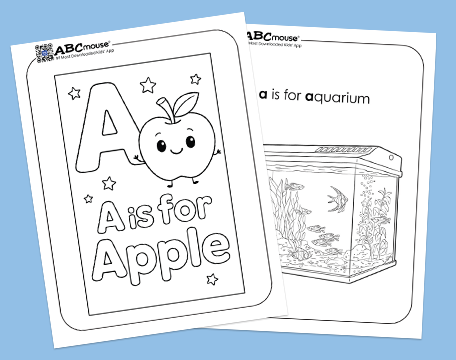

Overview of the Free Printable Letter A Coloring Pages
Pick your favorites from the letter A coloring pages below, or download the complete set using the button above. These pages feature both the long A sound (/ā/) and the short A sound (/ǎ/) and include kid-friendly images to add even more fun to learning. Be sure to check out the letter A activities at the bottom!
Fun Activities for Learning the Letter A!
Recommended for: Toddlers, Preschoolers, & Kindergarteners
⭐ Create a Letter A Sensory Bin
Add an inch or two of dried rice, beans, or oatmeal to a shallow plastic bin or box. Then, bury letter A magnets or blocks in the bin, along with small toys or objects that start with the letter A. Help your child pronounce the letter A sound as they find each item. Learn more about creating an alphabet sensory bin here.
⭐ Free Online Letter A Tracing Games

ABCmouse offers hundred of free educational games for kids. Use our Rainbow Tracing game as an interactive way for your child to practice making the shape of the letter A.
⭐ Letter A Stamping
Grab an apple, some paint, and paper for this activity. Begin by slicing the apple in half and adding some paint to a paper plate. Have your child dip the apple gently into the paint and then onto a sheet of paper, leaving an apple stamp on it. Then, work with your child to write A is for Apple onto the paper. You can use a spoon to carve shapes into your apple to create more fun stamps!
More Free Printable Coloring Pages
-
Letter B Coloring Pages (Free Printables!)
Fun letter B coloring pages and activities to help kids explore letter sounds and words—free printables from ABCmouse.
-
Letter A Coloring Pages (Free Printables!)
Free printable letter A coloring pages with fun characters and activities for early alphabet learning.
-
Zoo Animal Coloring Pages for Kids (Free Printables!)
Free printable zoo animal coloring pages and activities to spark kids’ creativity at home, school, or before a zoo trip.
-
Letter C Coloring Pages (Free Printables!)
Free letter C coloring pages with fun images and activities to help kids connect the letter C with its sounds and shape.
-
Summer Coloring Pages for Kids (FREE Printables)
Dive into spring with our free printable coloring pages for kids! Featuring tulips, St. Patrick’s Day, Earth Day, Easter, butterflies, and Mother’s Day themes. Spark creativity…
-
25+ Zoo Themed Activities and Games for Kids
Zoo games, crafts, and coloring pages spark learning fun for kids who love animals and hands-on activities—online or at the zoo!

Summer Learning Activities with ABCmouse
See how ABCmouse keeps kids learning all summer long with games, activities, and lessons.
Summer is filled with new adventures and a focus on play and exploration. Keep the emphasis on fun even when it comes to learning this summer, adding in game-based educational activities that children can do on their own. This can help prevent the notorious “summer slide,” which refers to the learning loss (especially in reading and math) that can occur without a few months of instructional time.
Prevent summer slide
Researchers found that children who engaged with ABCmouse over the summer, completing at least 208 learning activities, demonstrated significant gains, showing progress equivalent to one month of instructional time.
Keep Kids Learning This Summer
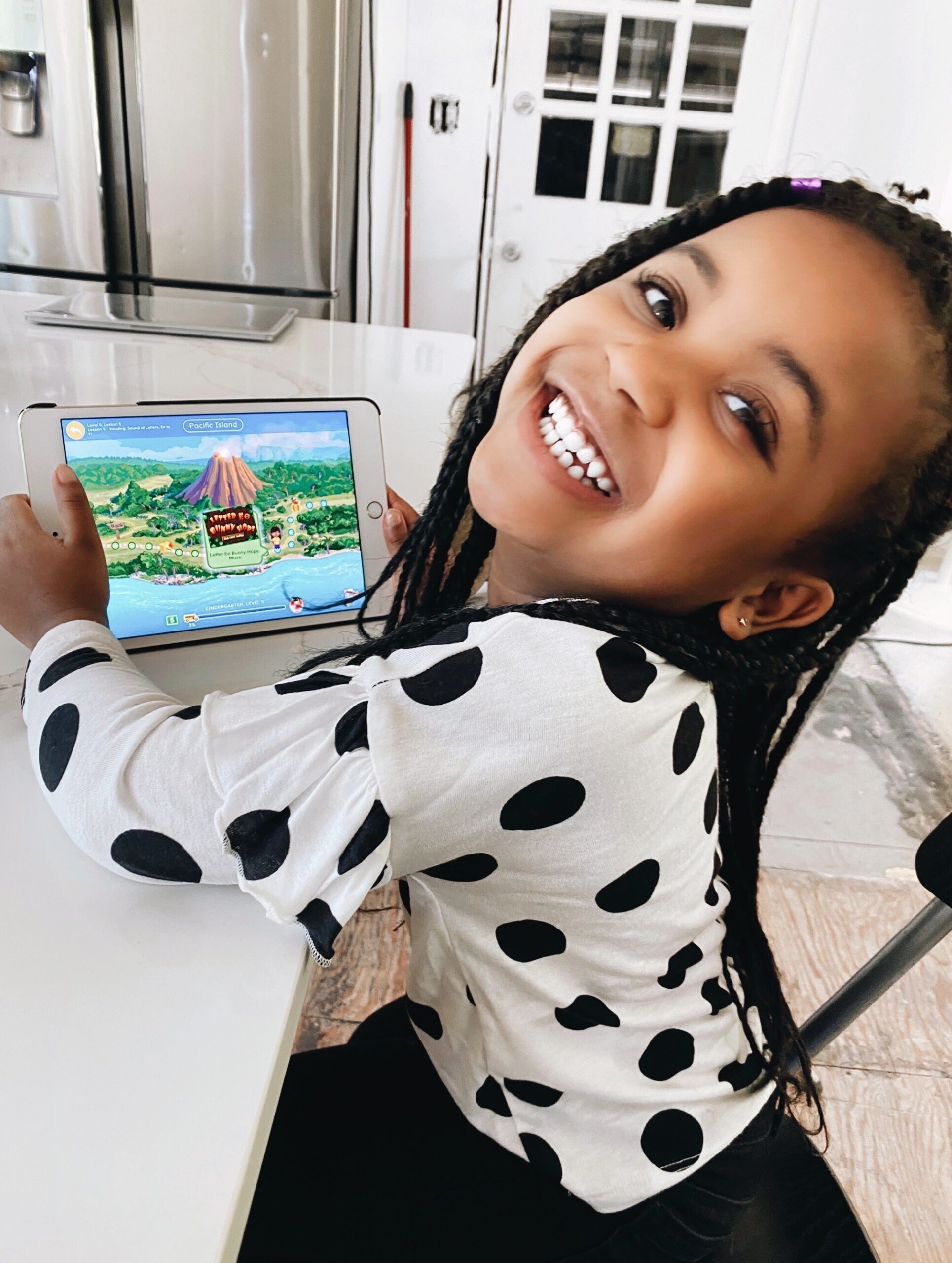
Each day of learning with ABCmouse brings more lessons, activities, and games to try. Kids can follow their personalized learning path, choose what they’d like to learn, explore within the safety of the app, or follow a list of activities planned by an adult.
Kids can enjoys activities like:
- Hundreds of educational games
- Over 400 digital books
- Online puzzles
- Catchy songs and engaging lessons
- Printable worksheets and coloring pages
While kids enjoy the games, lessons, books, and more, they also love the fun, motivating reward system, engaging with their adopted pets or the classroom aquarium, and exploring the town center, farm, or zoo.
A Day of Summer Learning with ABCmouse
ABCmouse is expertly designed for children ages 2–8, and the app provides hundreds of activities, books, games, songs, puzzles, worksheets, and more for each grade level.
The following lists provide examples of what a day of summer learning looks like for a kindergartener using ABCmouse, but preschoolers and first and second graders will find the same variety of activities.
Summer Learning Games for Kindergarteners
Here are a few examples of the hundreds of educational games your child can experience while learning with ABCmouse this summer:
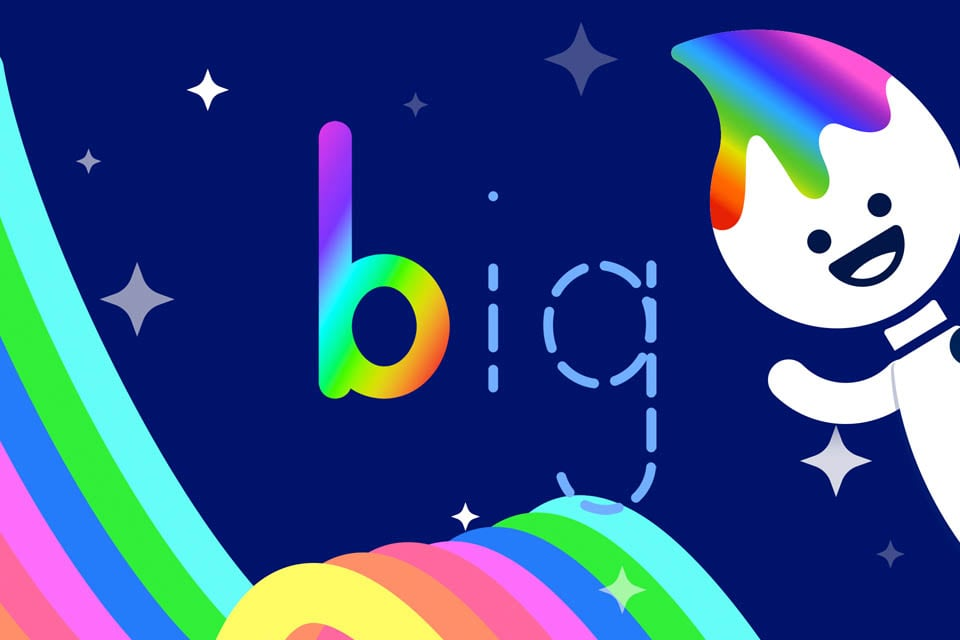
Practice reading, spelling, and writing high-frequency words with a fun rainbow tracing activity! This game helps kids recognize sight words, build fine motor skills, and strengthen early literacy.
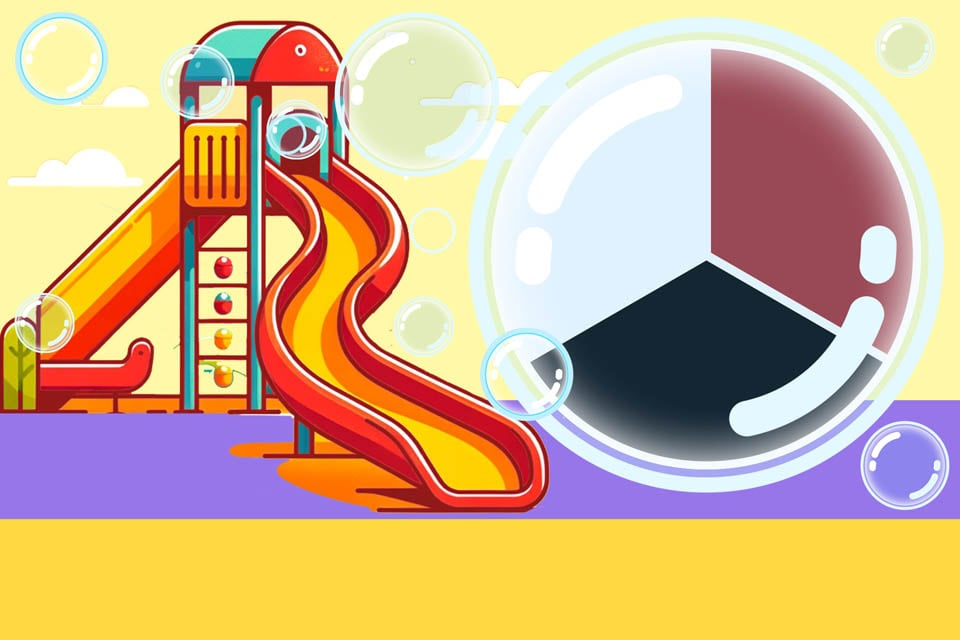
Black, White, and Brown Bubble Blaster
Blast the bubbles that are black, white, or brown! This quick and exciting game helps kids sharpen their color recognition skills through playful practice.
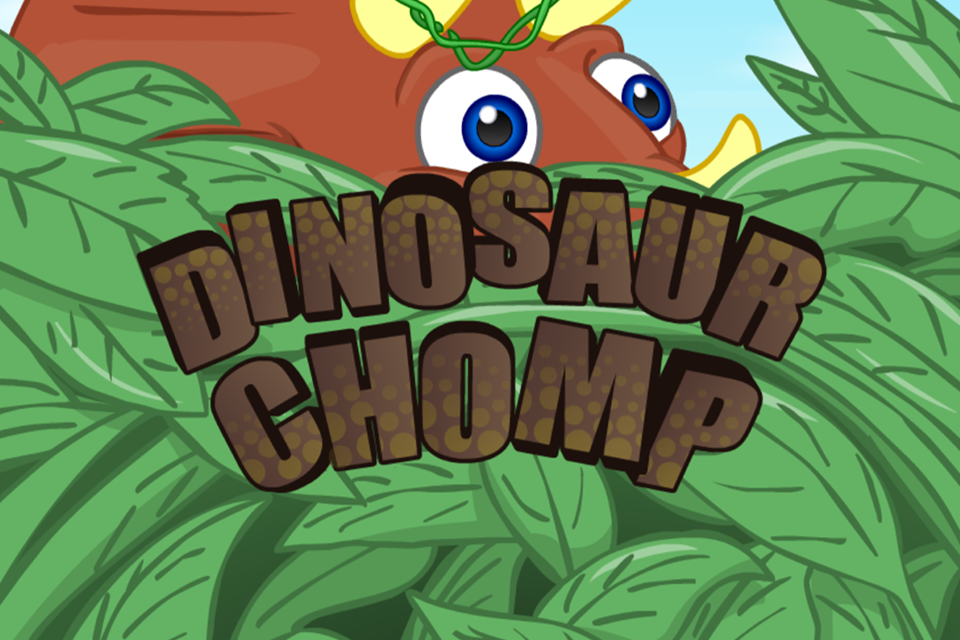
Kids can practice their counting skills in this math game, identifying which leaf has a different number of water drops on it before feeding it to the baby dinosaur.
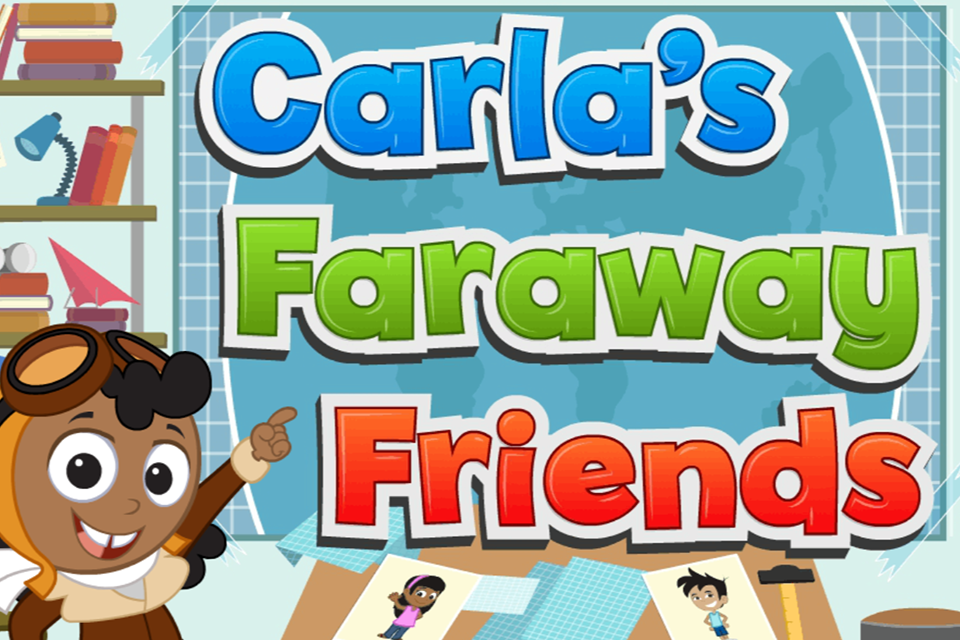
In this more advanced game, kids work on vocabulary, reading, and the concept of similarities and differences while learning about Carla’s friends from around the country.
So much to do this summer with ABCmouse!
The app includes a classroom filled with learning activities and games, a motivating reward system, and so much more for your child to enjoy. While using the app, kids can
- Spend their earned tickets at the Shopping Center
- Decorate their bedroom
- Change the look of their avatar
- Watch a short song or video in the Movie Theater
- Learn about animals at the Farm or Zoo
- Care for their aquarium or adopted pet

Go to the shopping center

Adopt a pet
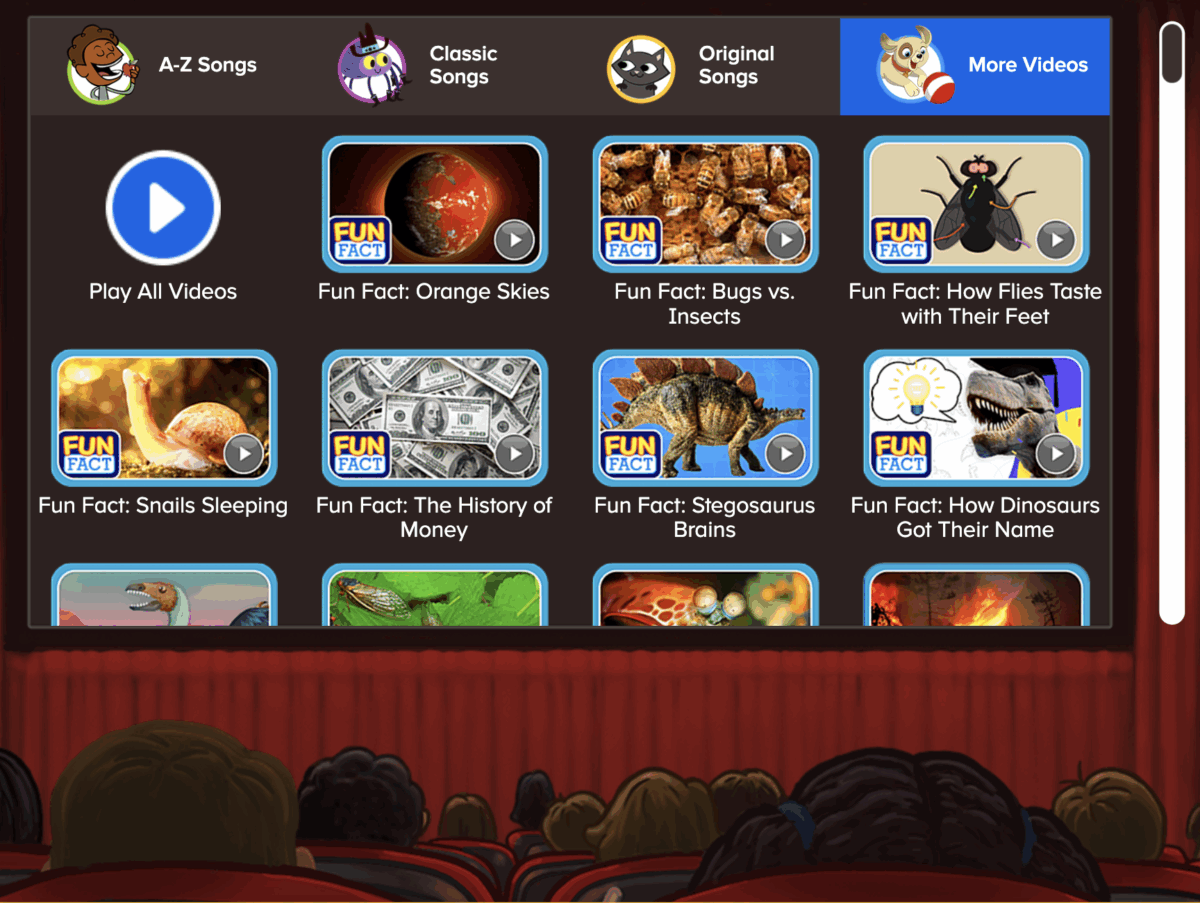
See what’s playing at the movie theater

Explore the farm
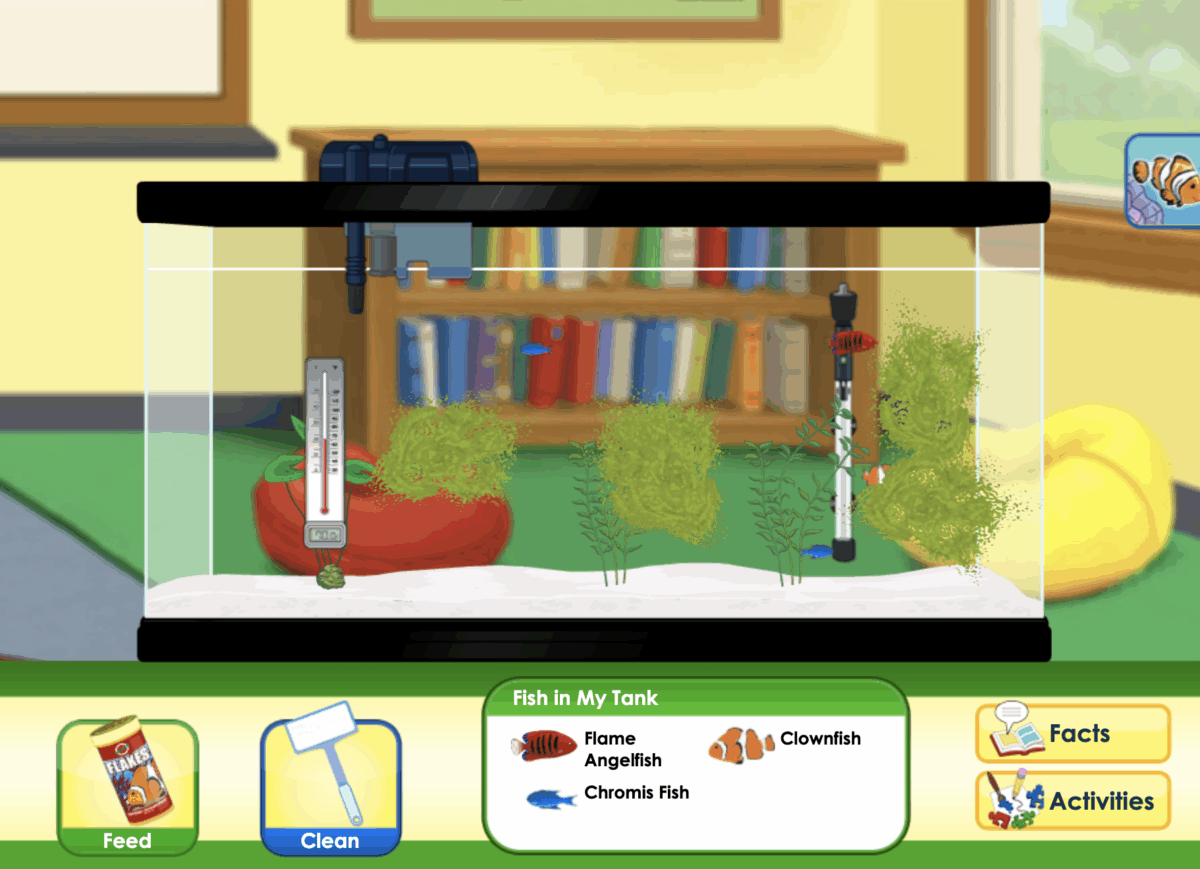
Care for your aquarium

Visit the zoo
Songs and Lessons for Kindergarteners
Fill summer learning with fun songs and videos to help keep kids engaged with learning. The ABCmouse app is loaded with videos and songs designed to teach and entertain.
Explore the Grand Canyon
This 10-minute video takes children on a journey to the Grand Canyon, sharing facts while ABC and 123 lead them on an adventure!
Letter A Song
Discover songs for every letter of the alphabet, focusing on each letter’s name and sounds. Each songs is perfect for dancing and singing along.
Fly with Me Song
Kids can learn about animals and insects that fly while singing and dancing along with this songs that’s sure to be a favorite.
Learn the Days of the Week
Children practice with the days of the week and learning that a week includes seven days in this catchy tune.
Summer Reading for Kindergarteners
Your ABCmouse subscription provides access to over 400 digital books, including read aloud books for nonreaders, read along books for children developing literacy skills, and leveled readers for children reading independently.
The Boy Who Cried Wolf
Kids can sit in as Miracle reads this classic fable aloud with help from her robot friend.

Read Along Books
Children can pick from a library of books and follow along as they’re read aloud. This example, titled Dan and Jan, uses rhyming to help children learn sound patterns in words.

Pick from Categories or Search the Library
Select books based on topics your child enjoys or search the library for specific titles. You can also focus on specific topics, like the alphabet.

Visit the Library
The ABCmouse library is always waiting for your child, filled with books for them to enjoy anytime!
Get more reading resources…
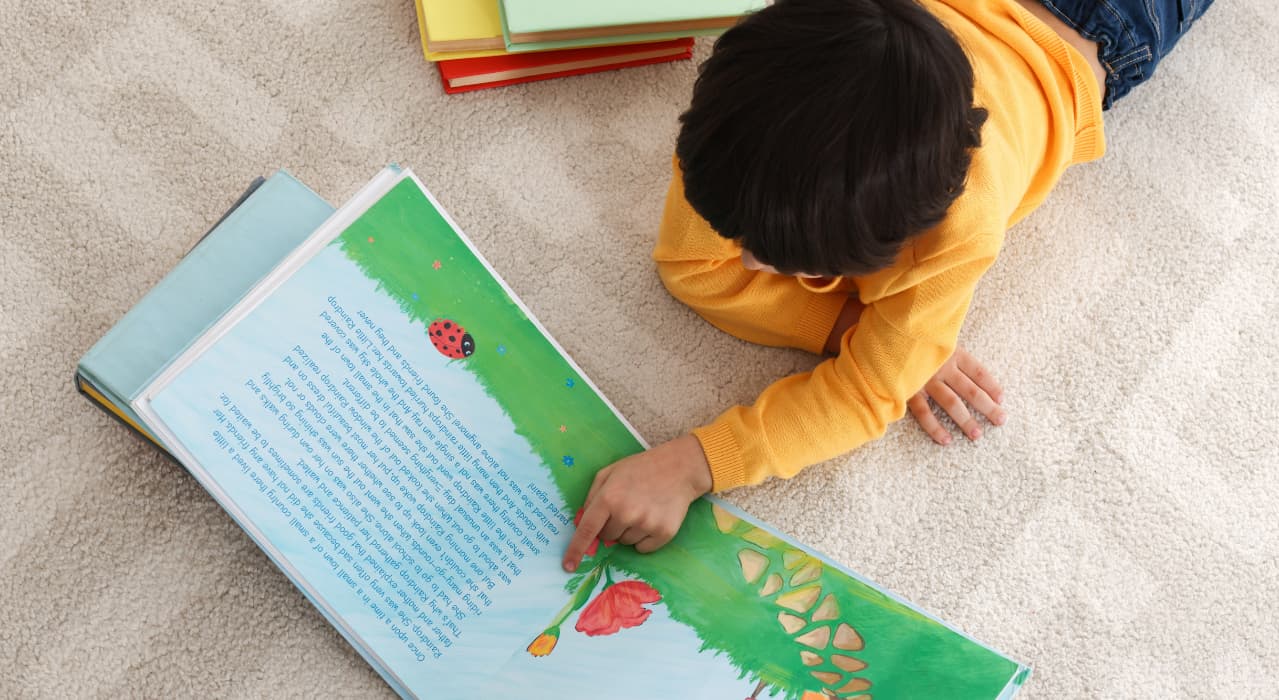
Reading Lists
Pick from books outside of the app with our Summer Reading List for Kids and Best Books for Kindergartners.
Printable Activities for Kindergarteners
Along with hundreds of online learning games, educational songs and videos, and digital books, your child can also enjoy free printable worksheets and coloring pages.
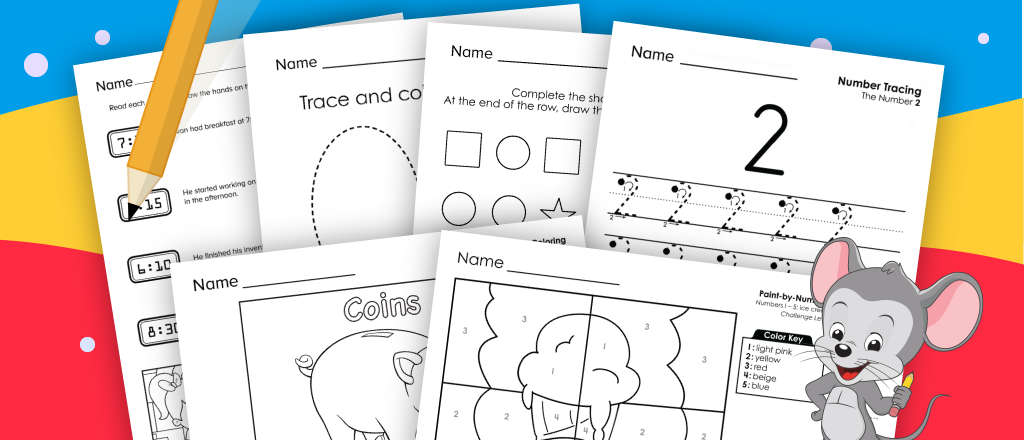
From numbers to shapes and so much more, the ABCmouse app features loads of math worksheets for children in preschool through second grade.
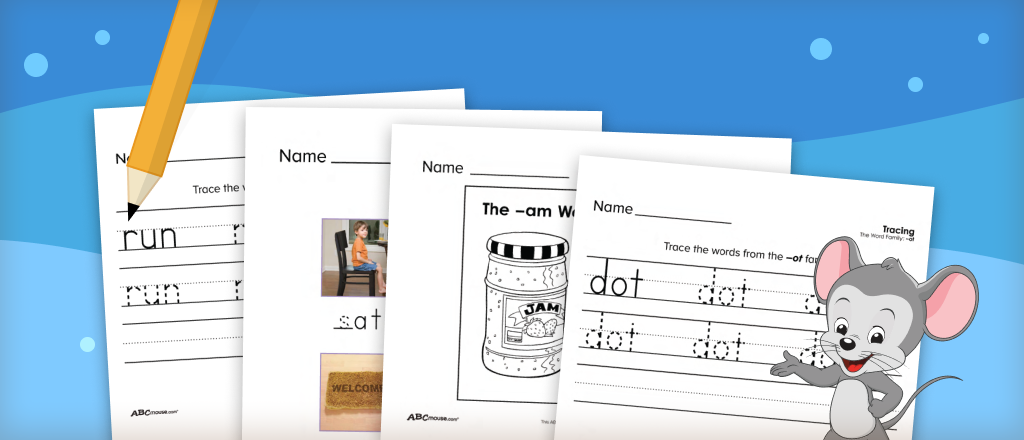
Kindergarten Word Family Worksheets
Practice with CVC words as each worksheet features a family of words that start with a consonant and end with the same two letters (such as -en or -ig).
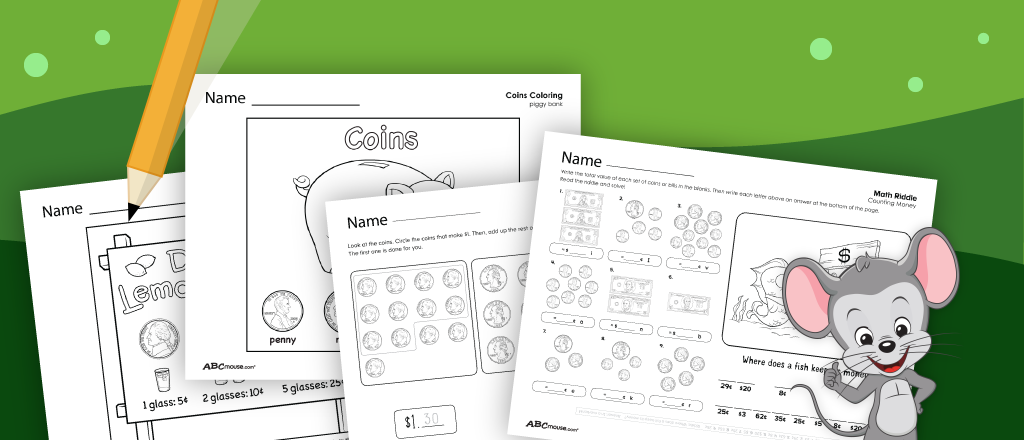
Learn the names of each type of coin and start learning their value with this collection of printables.
More summer worksheets for kids…
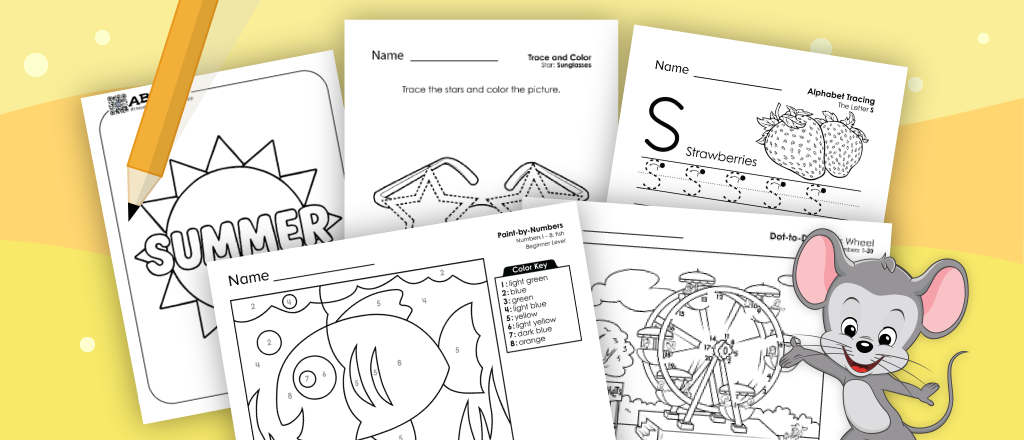
These worksheets provide a great way to keep kids learning over the summer and organized for kids in preschool through second grade.
How Much Time Does My Child Need to Spend Learning this Summer?
ABCmouse fits easily into your daily routine and can help your child learn in just 15 minutes a day. Use it during quiet time, after meals, or as part of a morning learning session.
Kids can explore the app independently, or you can sit with them to introduce new concepts, then follow up with hands-on activities that reinforce what they’ve learned. However you choose to use it, ABCmouse makes learning simple and flexible.


50 Summer Activities for Kids to Keep Them Busy at Home
Share
Fill the long days of summer with loads of activities that kids can do at home. From backyard fun to crafts and simple cooking ideas, there are options to suit almost every child!
Most kids can’t wait for the start of summer and a long school break. Inevitably, though, it won’t be long until parents hear, “I’m booooored! What are we gonna do today?” That’s why you need this list of fun summer activities for kids at home. You’ll find enough creative ideas here to keep kids occupied and enjoying themselves all season long!
Food/Cooking Summer Activities for Kids
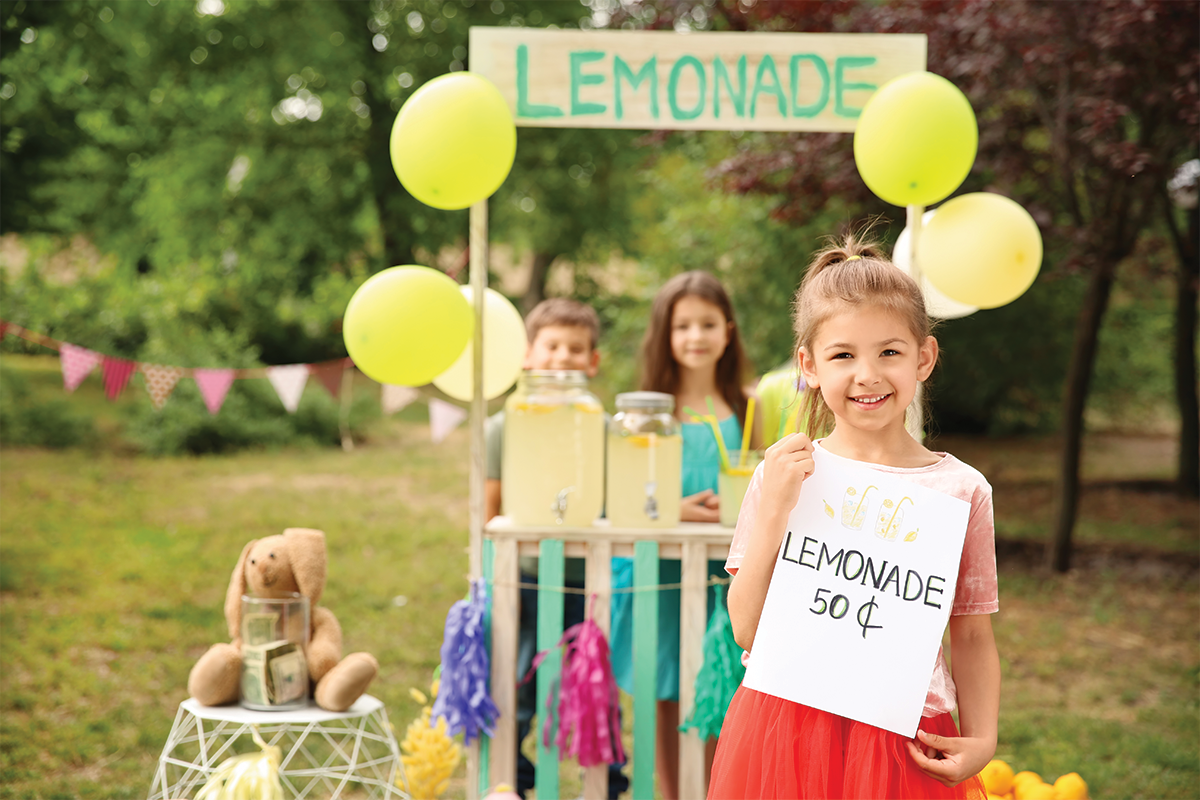
Lemonade Stand
This activity is an absolute classic! For an added challenge (or side-by-side taste comparison), try making homemade lemonade with freshly-squeezed lemons.
Then give kids some cardboard boxes to decorate so they can set up a stand. Whether they sell to friends and neighbors for real money or just pretend to sell to each other, they’ll have an old-fashioned summer blast.
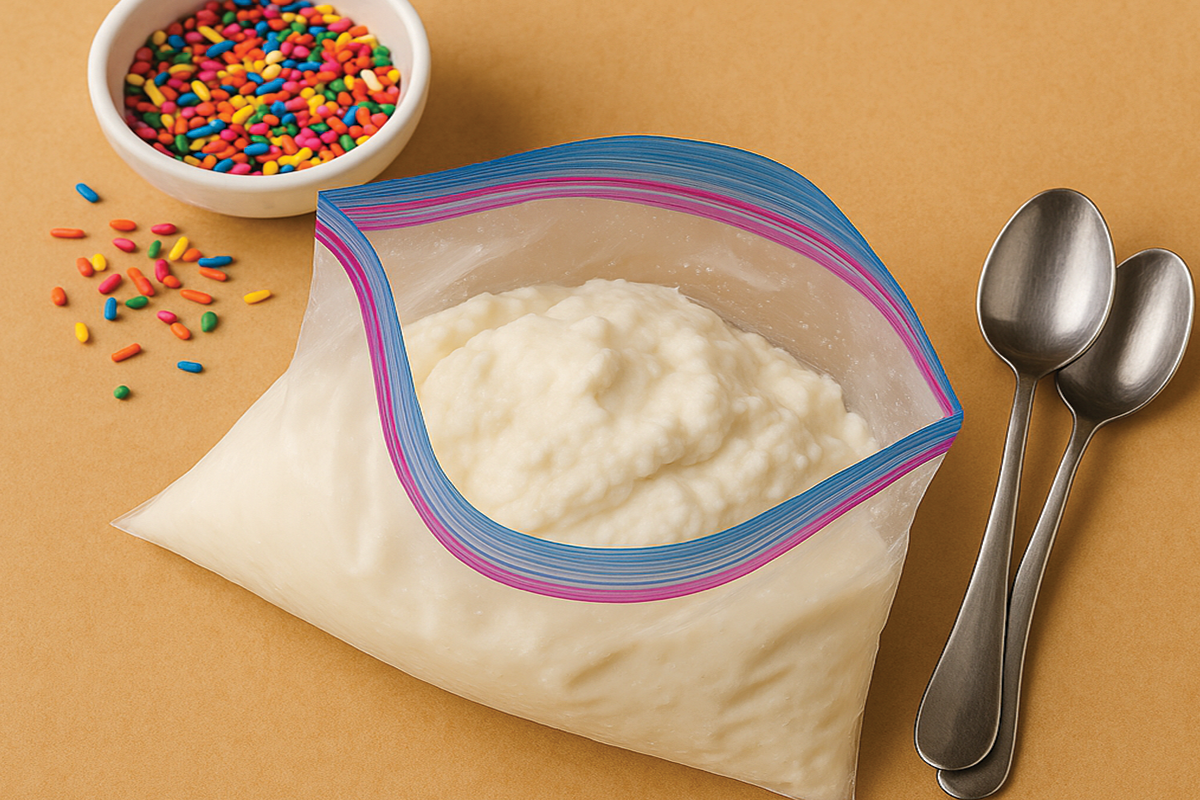
Ice Cream in a Bag
Use just a few supplies to make DIY ice cream, no machine required.
- In a 1-quart resealable bag, combine ½ cup half-and-half, 1 tablespoon sugar, and ¼ teaspoon vanilla. Seal the bag, pushing out excess air as you do.
- Add 3 cups of crushed ice and ⅓ cup of rock salt to a 1-gallon resealable bag. Nestle the smaller bag with the ice cream ingredients inside it, and seal the larger bag.
- Now shake, shake, shake! Shake and squeeze the bag for 10-15 minutes. (It definitely helps to have a few friends or family members take turns during this step.)
- Open the bags carefully to check progress. When it looks thick and creamy, it’s time to dine!
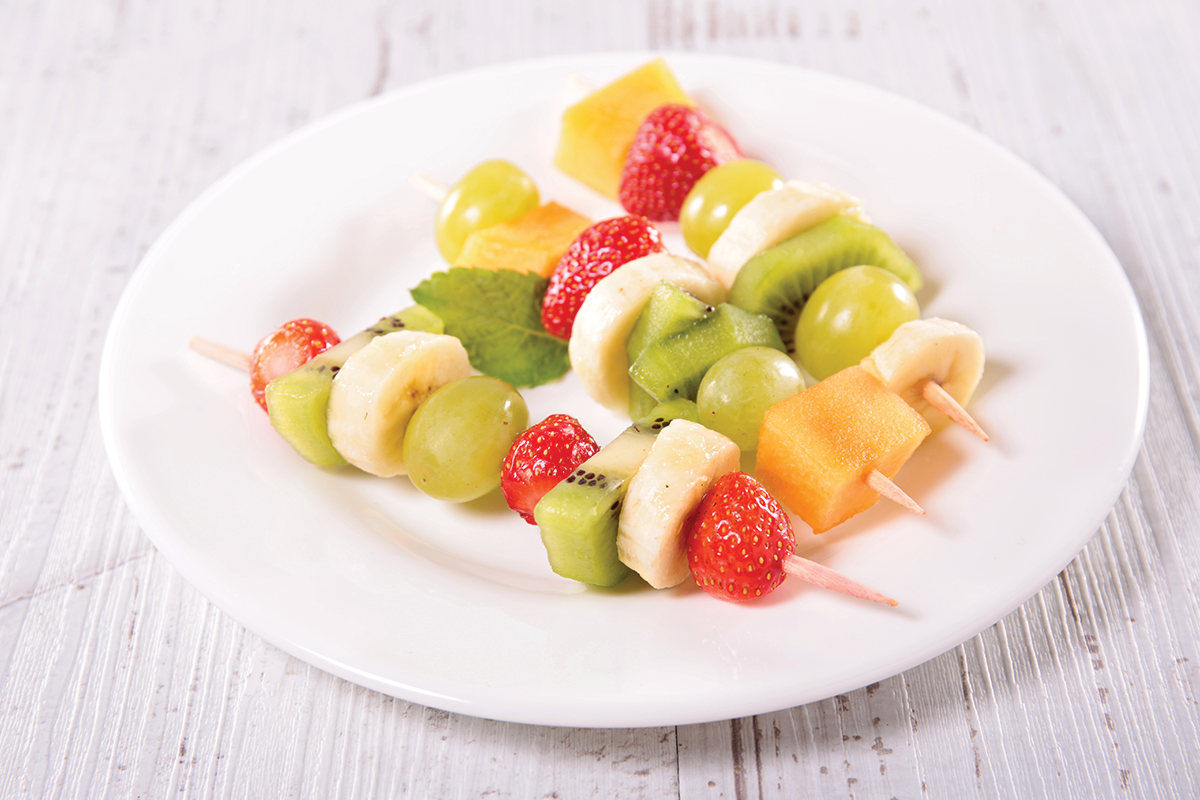
Fruit Kabobs
Cut up chunks of whatever fruit your family loves best: strawberries, bananas, grapes, watermelon, pineapple, etc. Provide long wooden skewers, then invite kids to create their own kabobs, mixing the fruits however they like and being careful with the pointy ends of the skewers.
These make a great healthy snack, although you might consider indulging by dipping the kabobs in melted chocolate every once in a while!
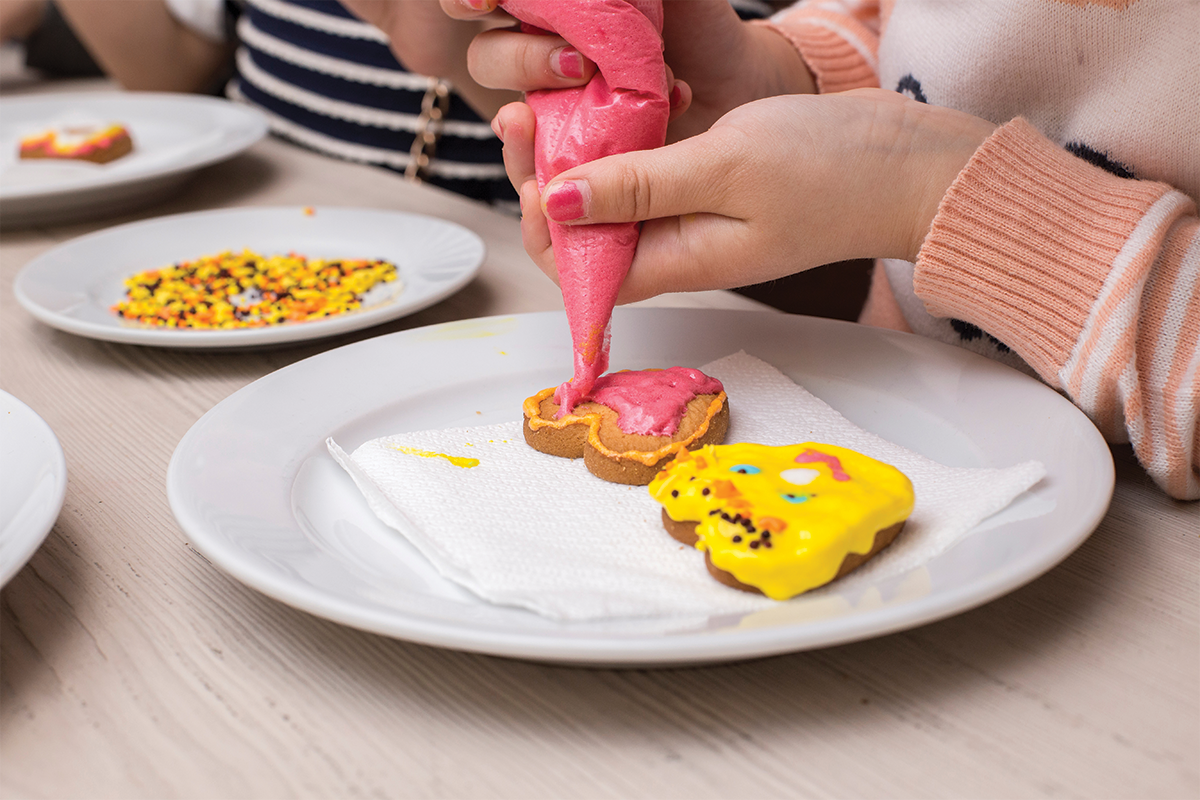
Cookie Decorating
Bake plain sugar cookies (or buy them pre-made). Give kids bags of colored frosting with the corners snipped off, along with sprinkles, chocolate chips, and other cookie decorating goodies.
Let each child decorate their own cookie for a treat, and make some extras to share with family and friends.
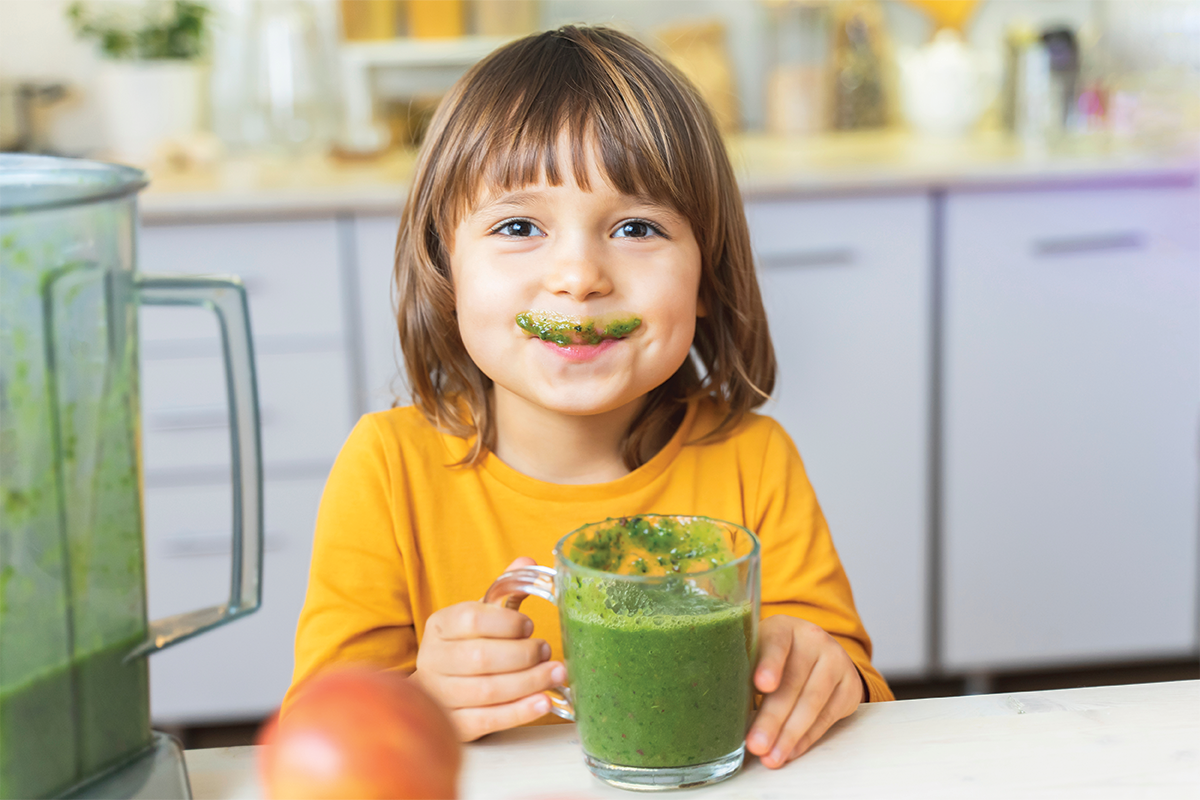
Homemade Smoothies
Smoothies are so easy to make: combine 1 cup of the liquid of your choice, such as any type of milk or juice, with 1 cup crushed ice.
Then, add in any other ingredients you like: frozen fruit, nut butter, honey, spinach, carrots, rolled oats … the list goes on! Let kids experiment to find their own favorite recipe.
Older kids can learn to safely use a blender on their own, while younger ones will need some adult help with this activity.
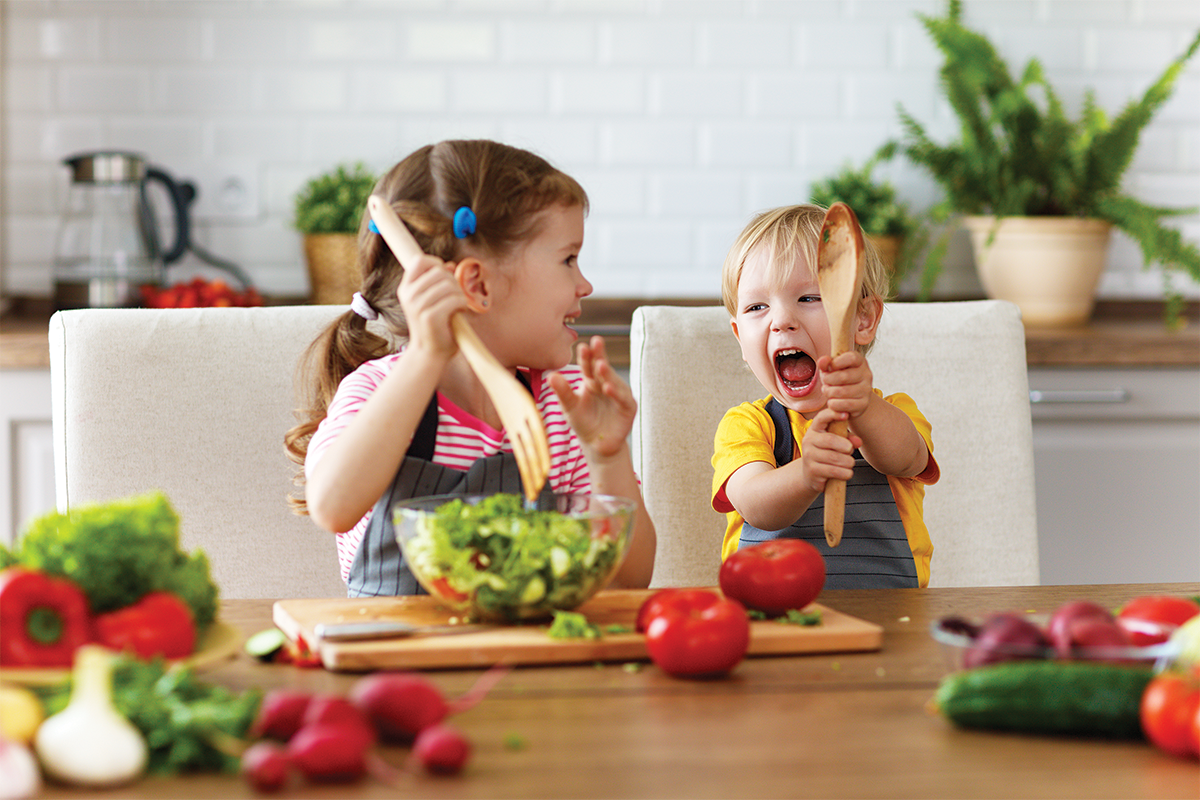
DIY Salad Bar
Harvest veggies from the garden or visit a produce stand together to pick out lots of colorful veggies and your favorite kinds of lettuce.
Kids can help wash and cut up the produce, laying it all out in separate dishes. Provide big bowls and your favorite salad dressings, then invite everyone to enjoy your at-home salad bar!
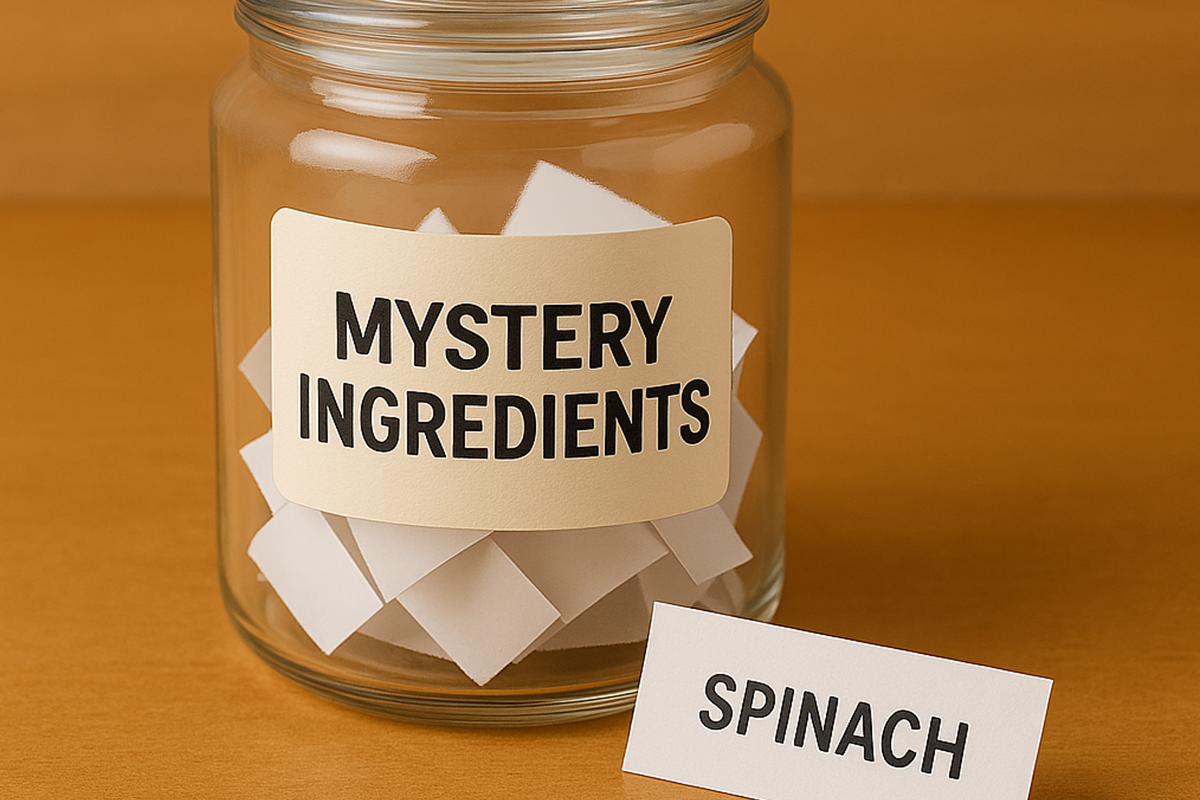
Mystery Ingredient
Write a selection of “mystery ingredients” on slips of paper and put them in a jar. Invite your child to draw one out, revealing that day’s choice.
Then, challenge your child to help you come up with a recipe or dish that uses that ingredient, and make it for everyone to enjoy. Here are some mystery ingredient possibilities: nut butter, honey, soy sauce, cornbread mix, spinach, pineapple slices, pickles, etc.
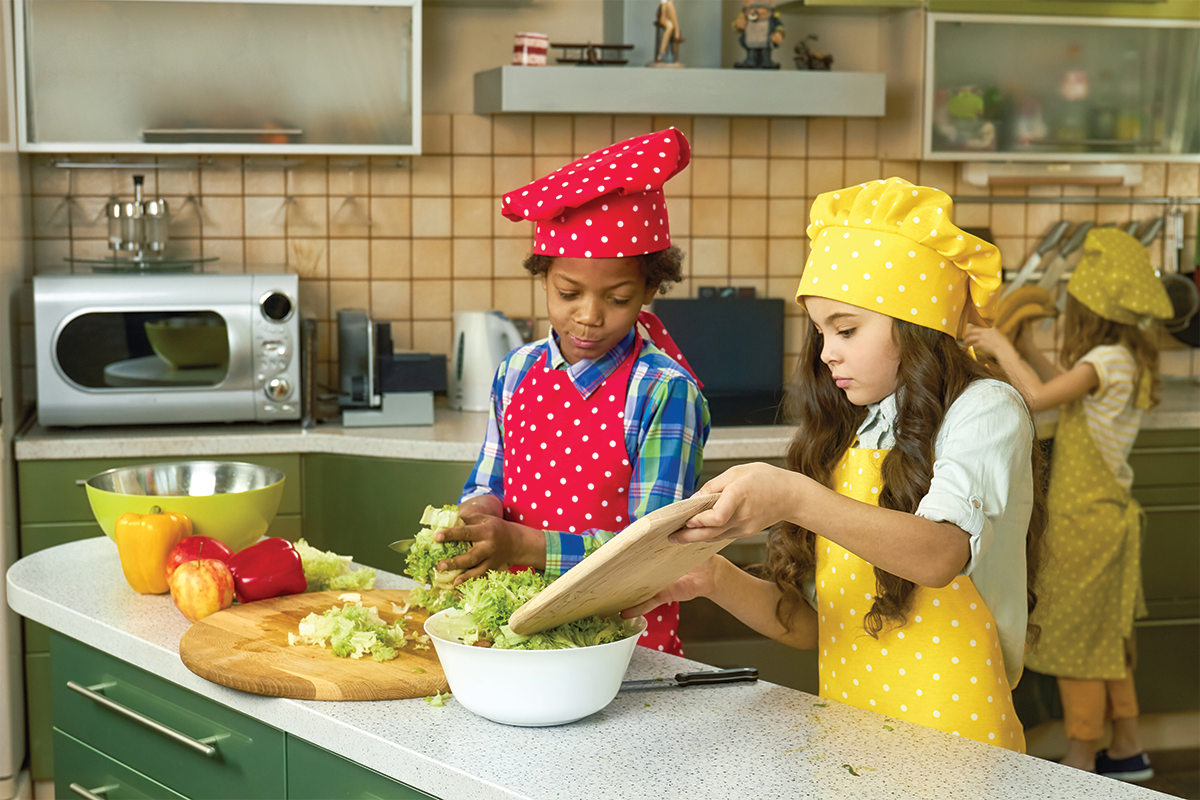
Kids Cooking Show
If your child really loves to spend time in the kitchen, invite them to put on their own cooking show!
As they prepare a recipe, they can talk to the audience, explaining what they’re doing. You can even film them with your phone and share the video with their friends.
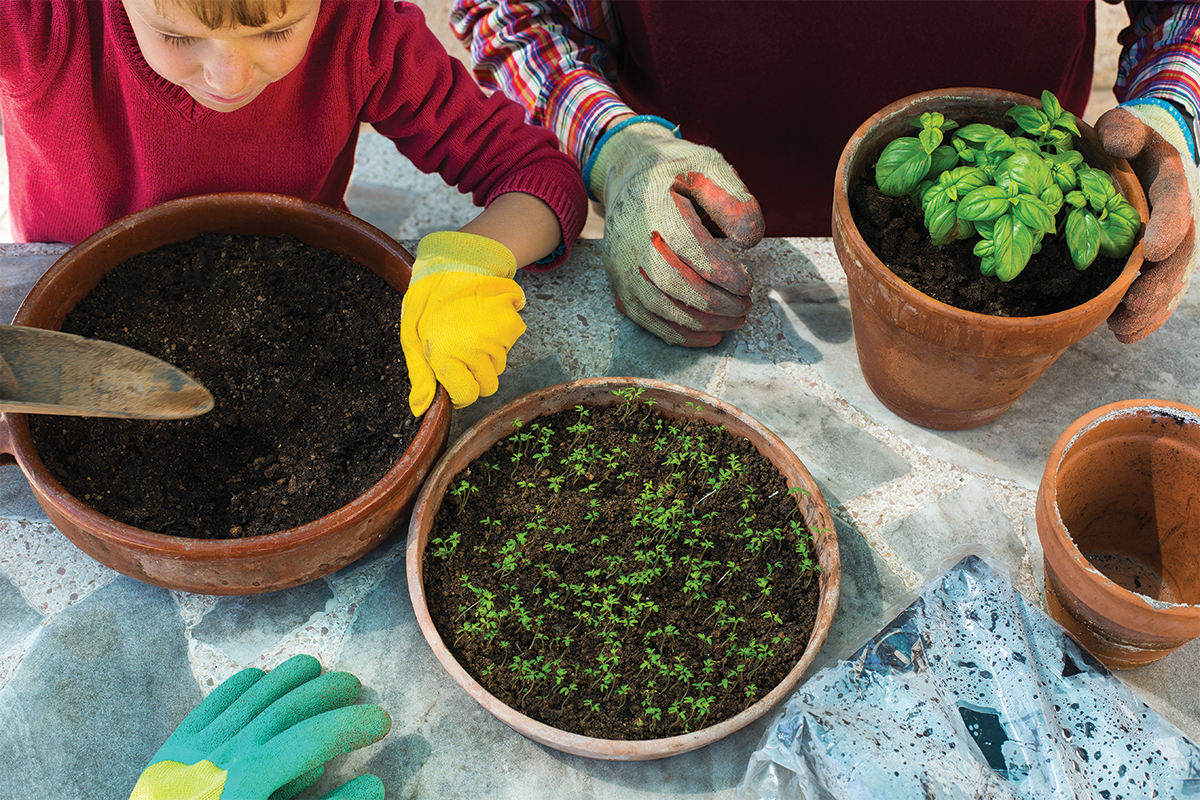
Herb Garden
As long as you have a sunny windowsill, you can grow your own herbs. Let kids pick out some seeds (options like basil, dill, chives, parsley, and oregano are easy to grow).
Buy some small pots and label stakes or signs for each one. Then, plant the seeds, watch them grow, and enjoy adding fresh herbs to the dishes you make together all summer long.
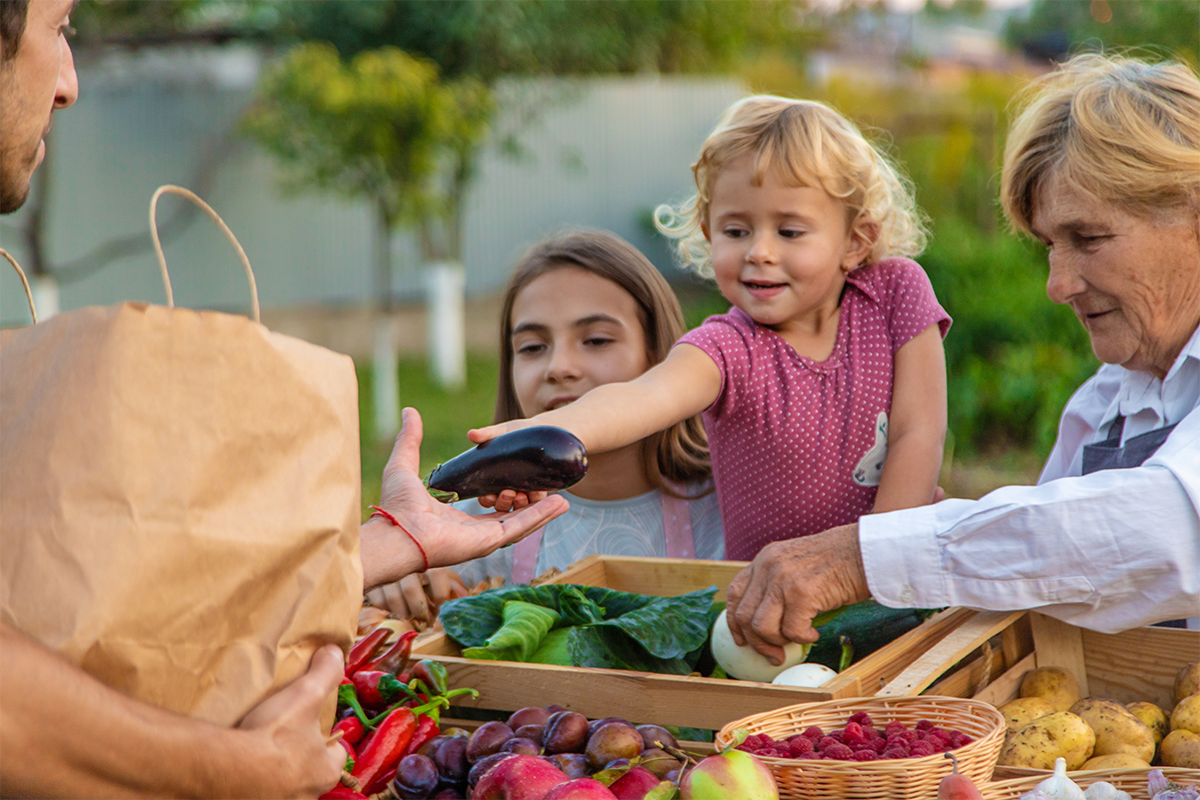
Farmer’s Market
Visit a farmer’s market together, then encourage your child to set up their own market at home.
They can offer toy or hand-drawn fruits and veggies, sculpt offerings from playdough or clay, or even sell real fresh produce from your own garden to neighbors (with permission first, of course)!
Outdoor Summer Activities for Kids
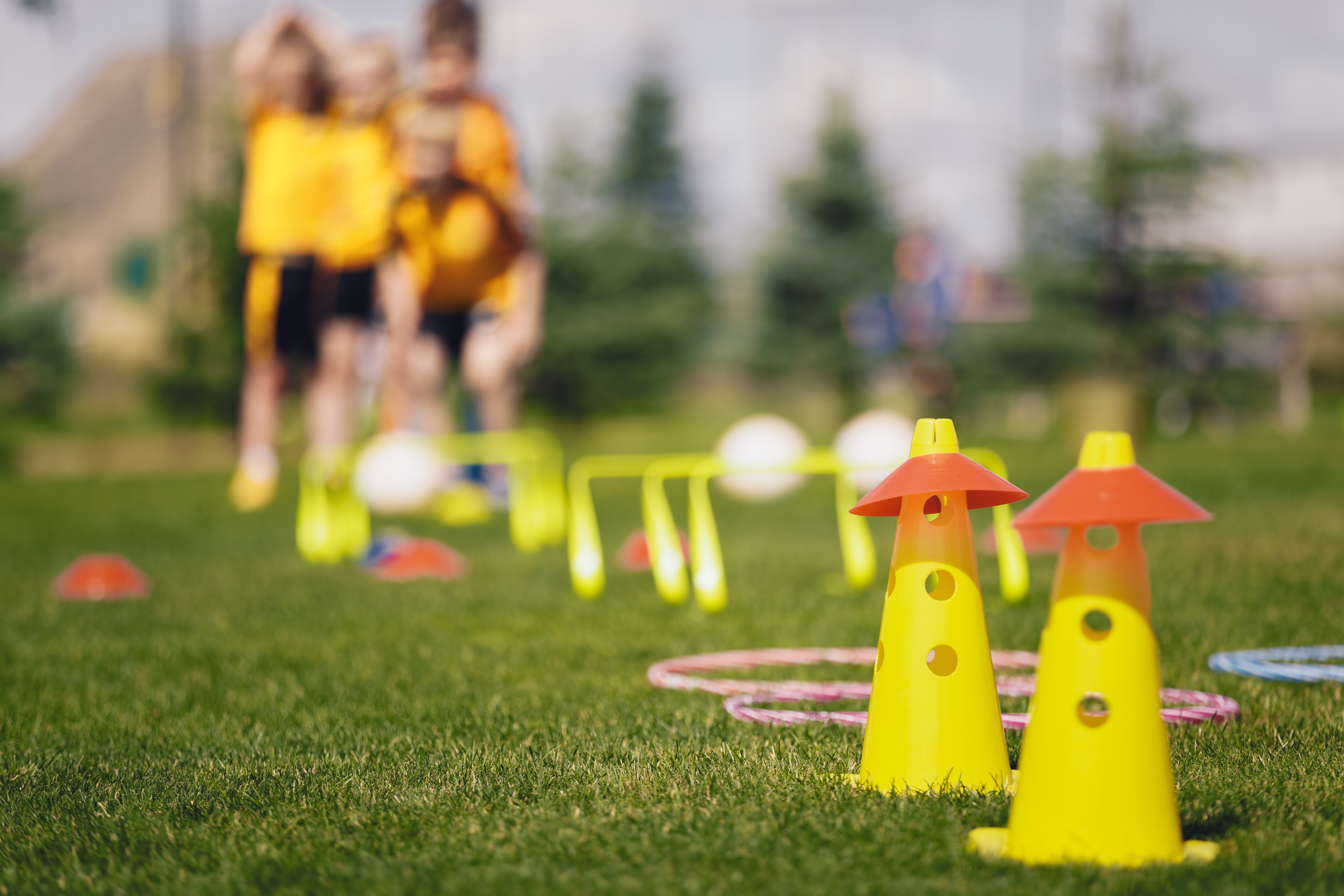
Obstacle Course
Here’s another classic summer activity, one that’s only limited by your imagination! Obstacle courses tend to include physical elements, of course, but you can incorporate other challenges too.
Consider adding stations where racers must stop and write out the alphabet backward, sing all the verses of a favorite song, or answer questions on a few flashcards before continuing. This gives all kinds of kids a chance to shine.
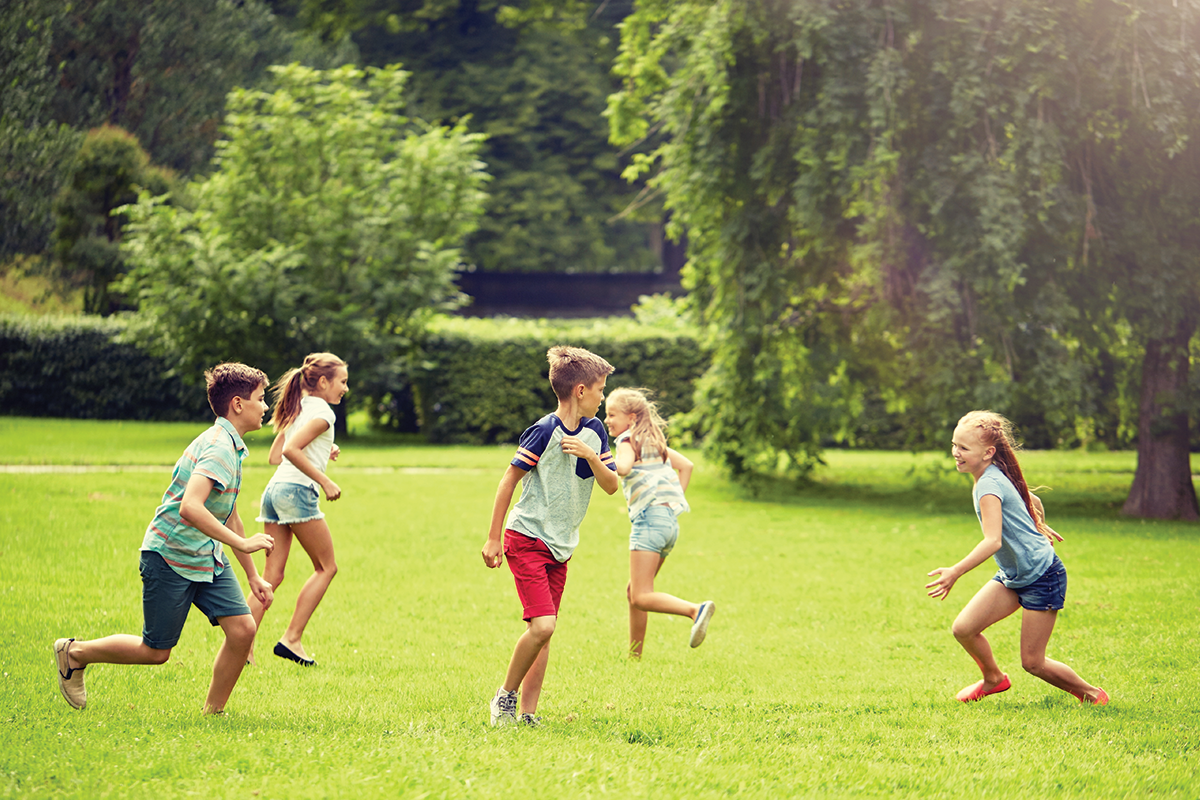
Outdoor Games
This is the season for epic games of Spud, freeze tag, sardines, and follow-the-leader!
Learn how to play all these games and many more here, with options for little ones, groups and teams, and more.
Check out our article Nature Activities for Preschoolers for 50 more outdoor ideas.
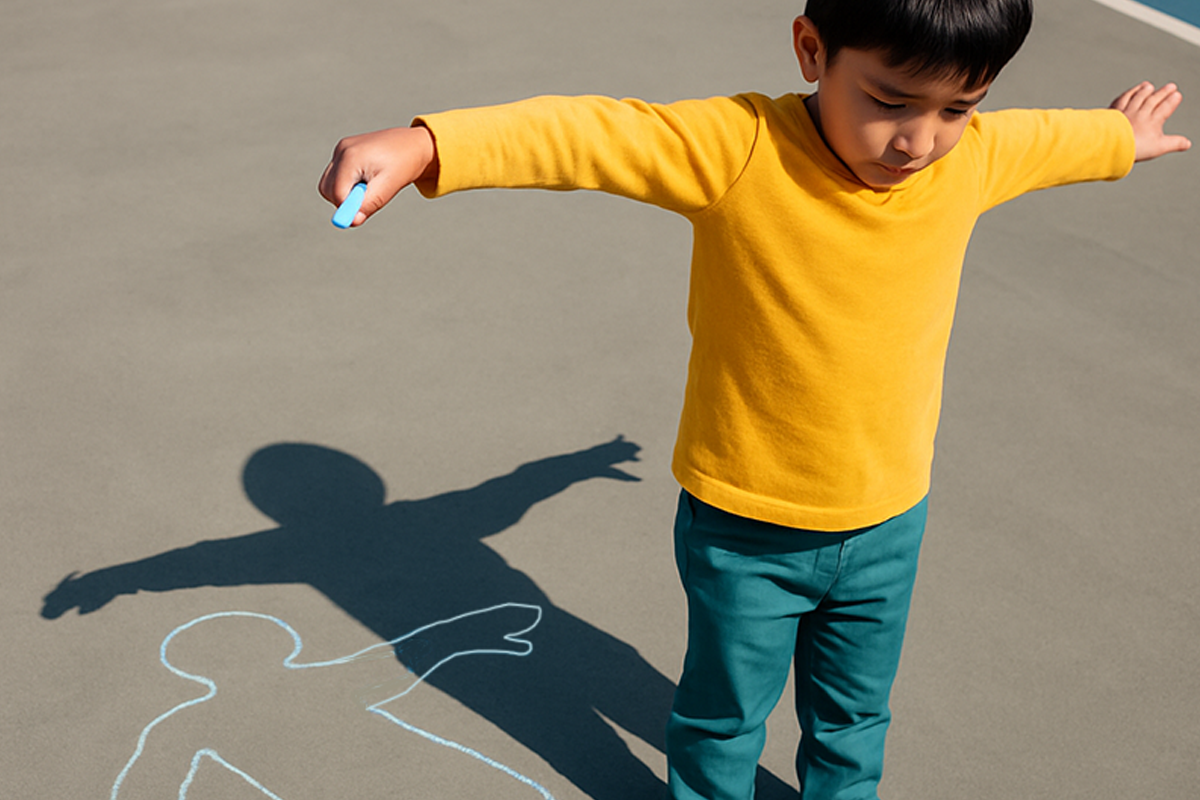
Shadow Tracing
You’ll need a bright sunny day and sidewalk chalk for this one. Take turns holding funny poses while a partner traces your shadow. This is especially fun to do several times throughout the day.
Hold the same pose each time and trace each shadow in a different color. At the end, you’ll have a rainbow array reflecting your shadow as it changes throughout the day.
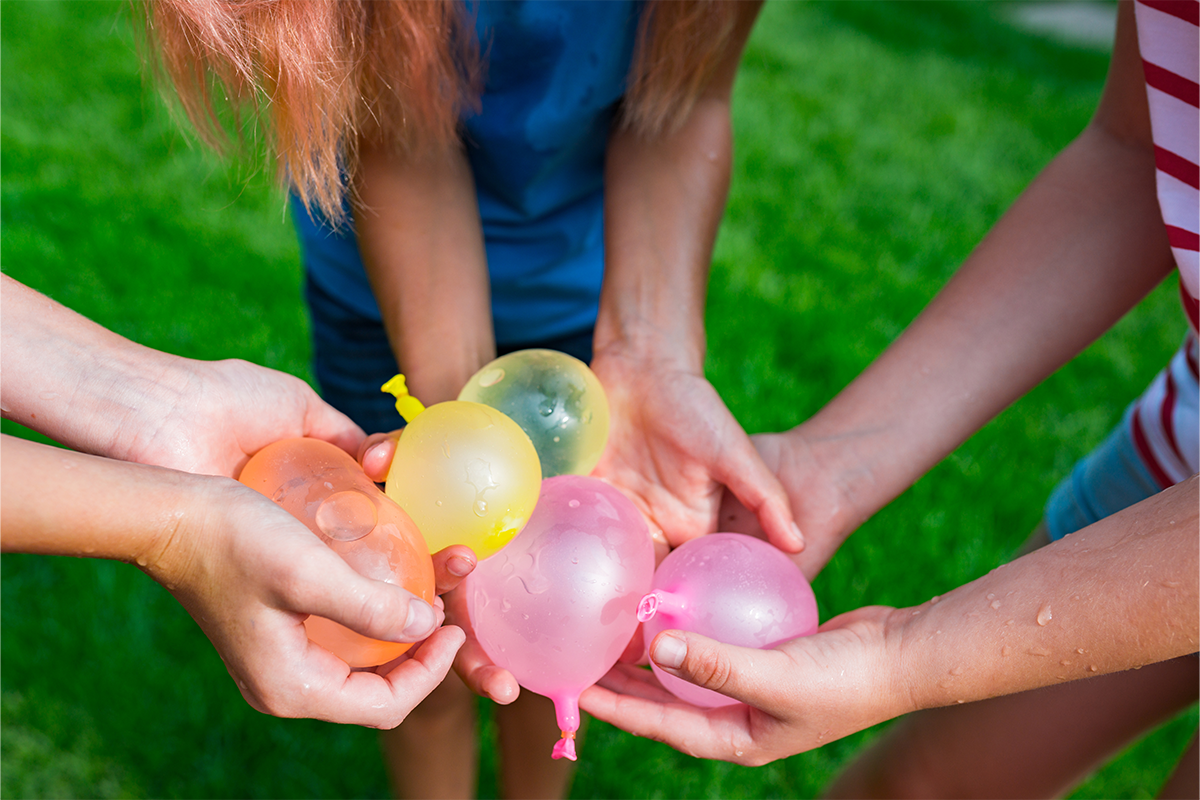
Water Balloon Games
What kid doesn’t love a chance to play with water balloons?
Try the balloon toss: pairs of kids start out standing fairly close together, tossing their balloon from one to the other. After each toss, kids take a big step backward. Eventually, someone will miss their catch and get seriously wet!
Other ideas: water balloon piñata, water balloon dodgeball, or a water balloon throwing challenge: who can throw their balloon the farthest without it popping?
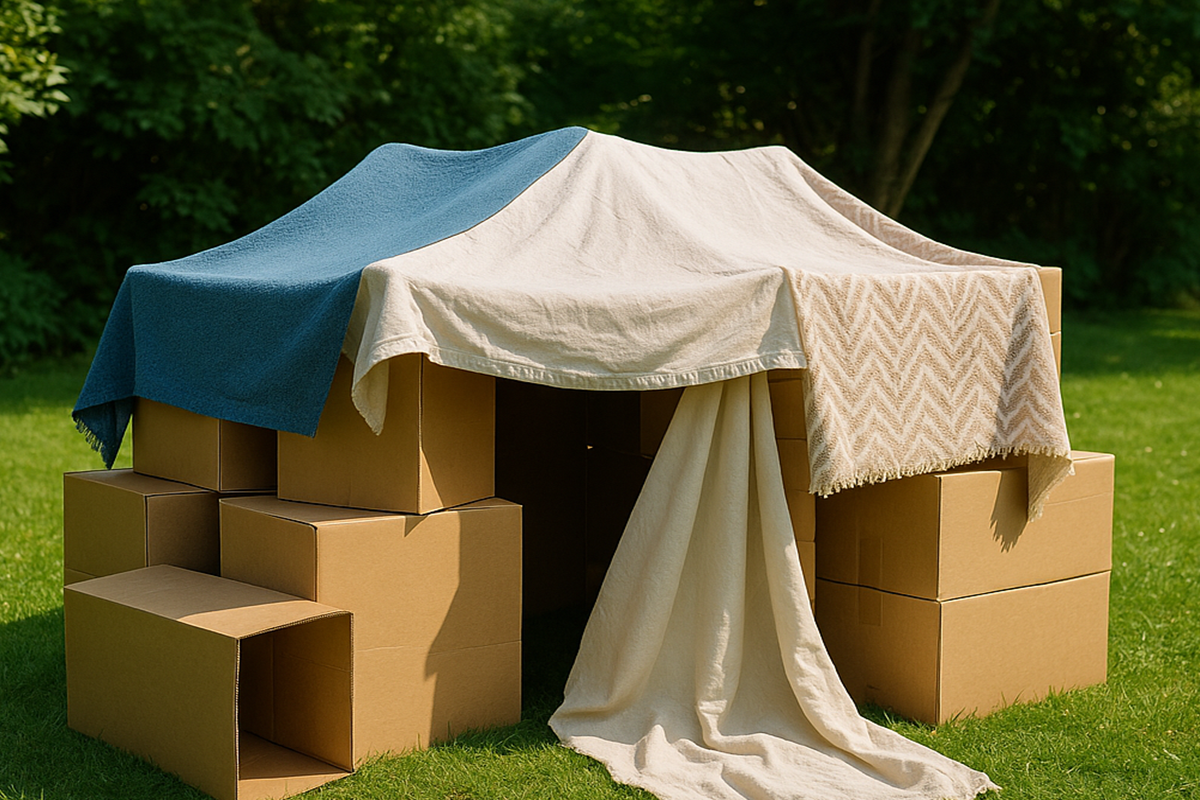
Backyard Fort
Haul out the old sheets and blankets and round up all the cardboard boxes you’ve got: it’s time to build the ultimate outdoor fort! (Just remember to watch for rain—a soggy fort isn’t quite as much fun.)

Toy Boat Race
If you’ve got a pool (even a kiddie pool) or access to another water source, toy boat races are so much fun!
You can use boats already on hand, or try building your own from materials like straws, wood craft sticks, twigs, bark, foil, and more. Of course, adults should be close by to keep an eye on children playing near water.
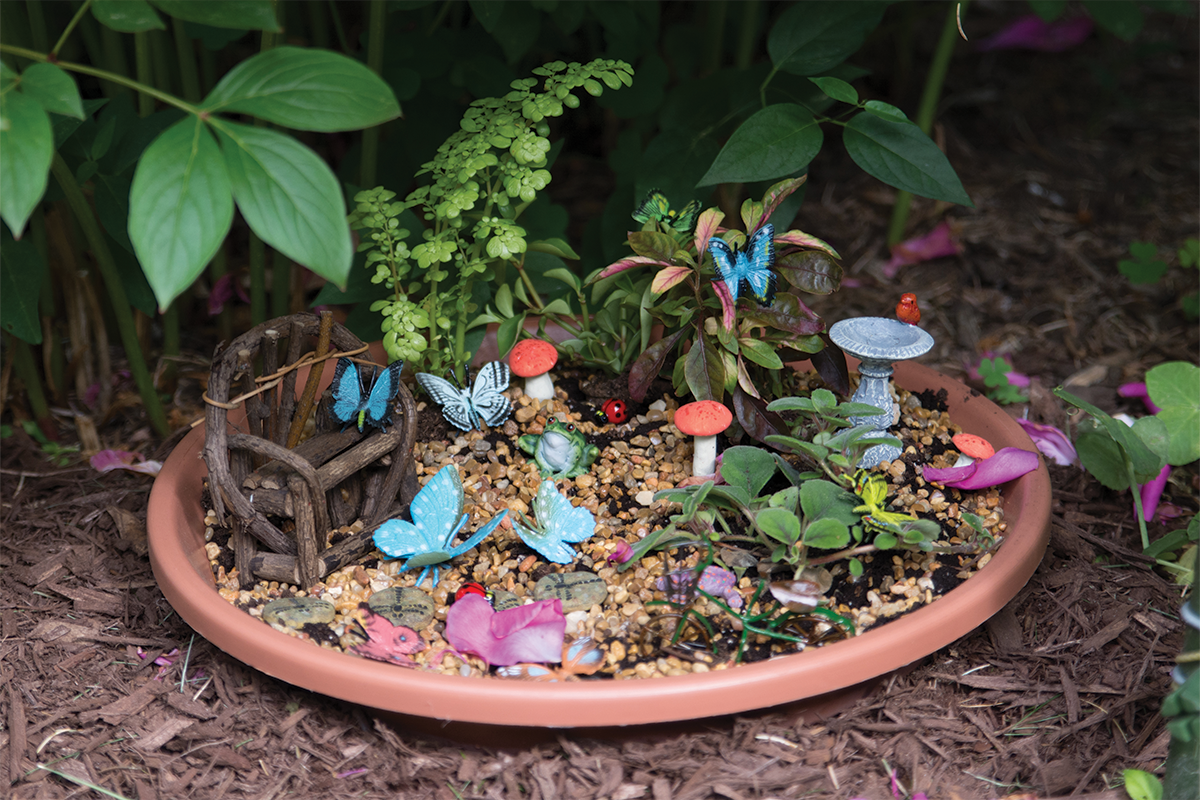
Mini Garden
Also known as a fairy garden, a mini garden incorporates easy-care succulents with tiny accessories (fit for a fairy!).
You’ll find lots of mini fairy garden accessories for sale in the summer, or you can get creative and make your own. Old dollhouse furniture and accessories can also work in fairy gardens.
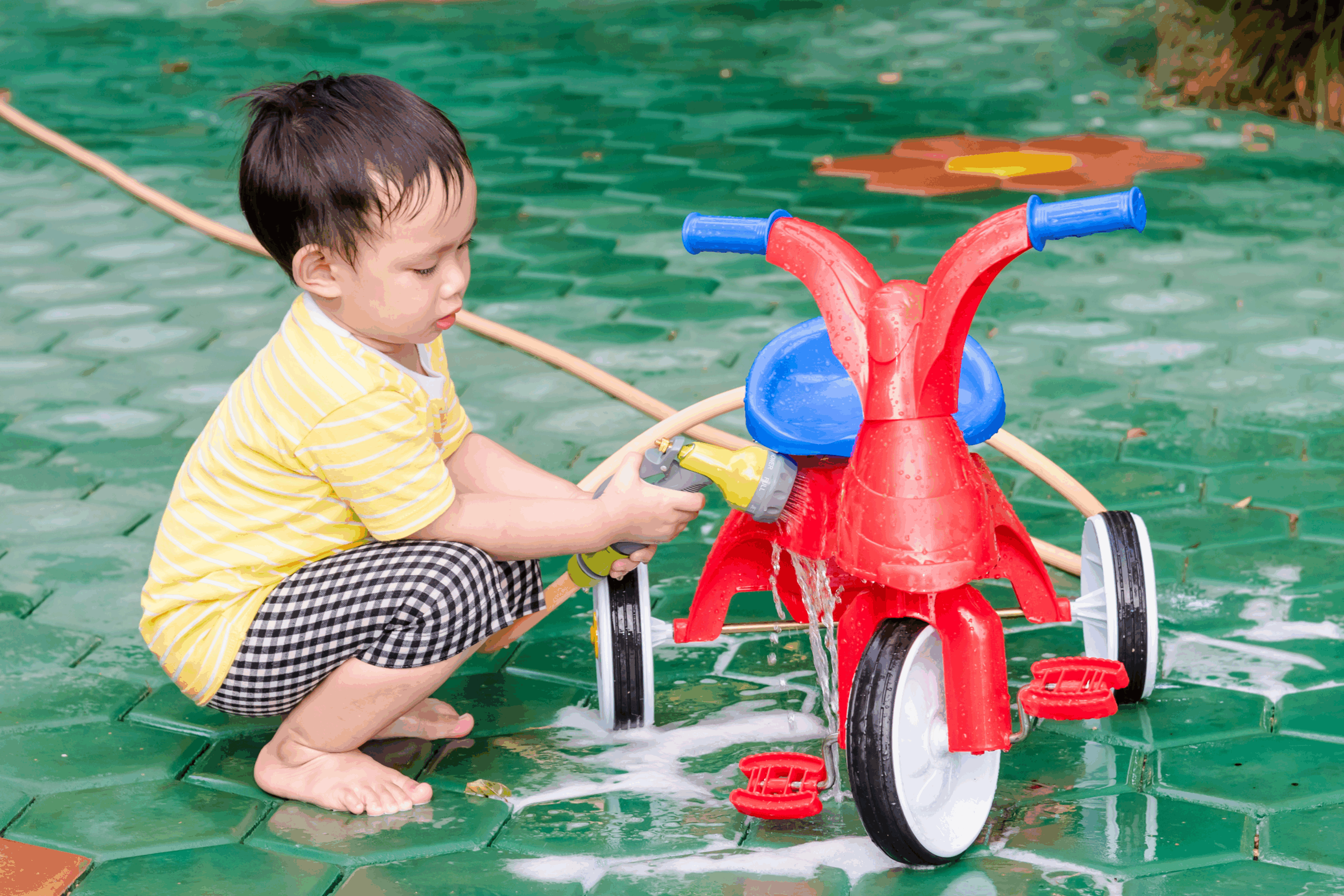
Bike Wash
Give kids some big sponges, buckets, gentle dish soap, and towels so they can set up their own neighborhood bike wash station.
You can even teach older kids how to wax the metal fittings. Once everyone has a nice shiny bike, decorate them with flowers and streamers and hold a bike parade!

Spray Bottle Tag
Fill spray bottles with water mixed with a few drops of washable paint (optional) in different colors.
Dress in old white t-shirts, then start the game! Give every player a different color, and see how long it takes each person to tag everybody else.
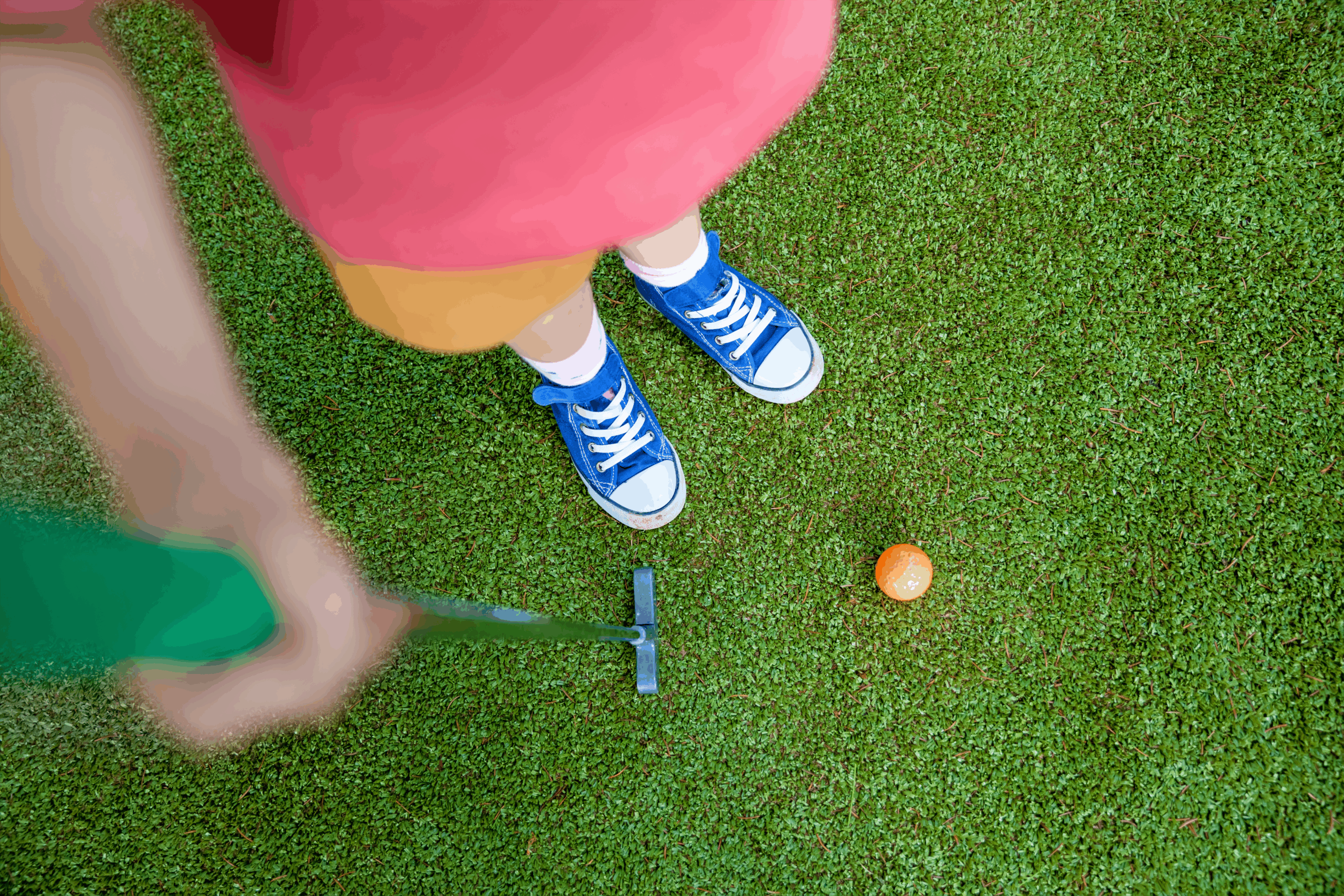
Backyard Mini-Golf
Visiting the putt-putt course is fun, but the costs can add up.
Pick up an inexpensive toy golf set and invite kids to create their own creative mini-golf holes for the family to play together at home instead.
Creative/Art Summer Activities for Kids
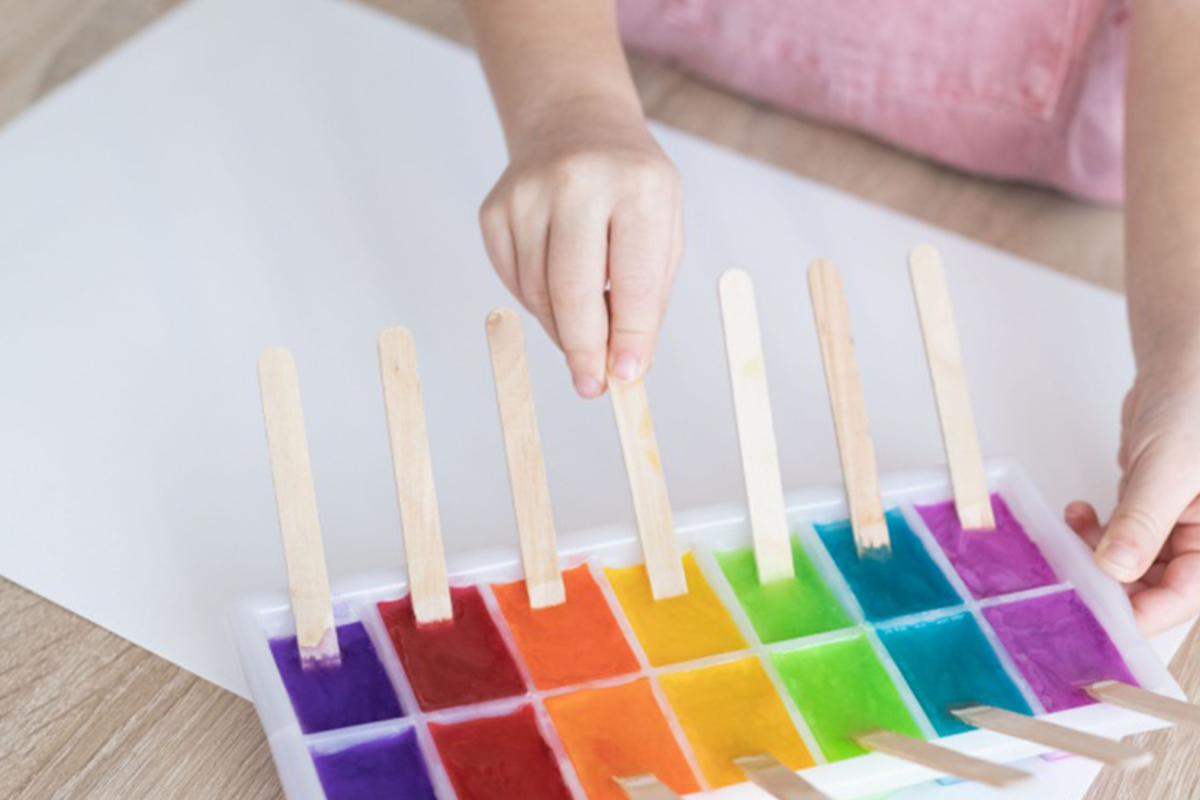
Ice Painting
Freeze a variety of colored ice cubes on wood craft sticks. Grab some blank paper and head outside on a warm day, then use the frozen paint “brushes” to create watercolor masterpieces as they melt. Learn more about this summer activity for kids here and check out our other summer craft ideas here.
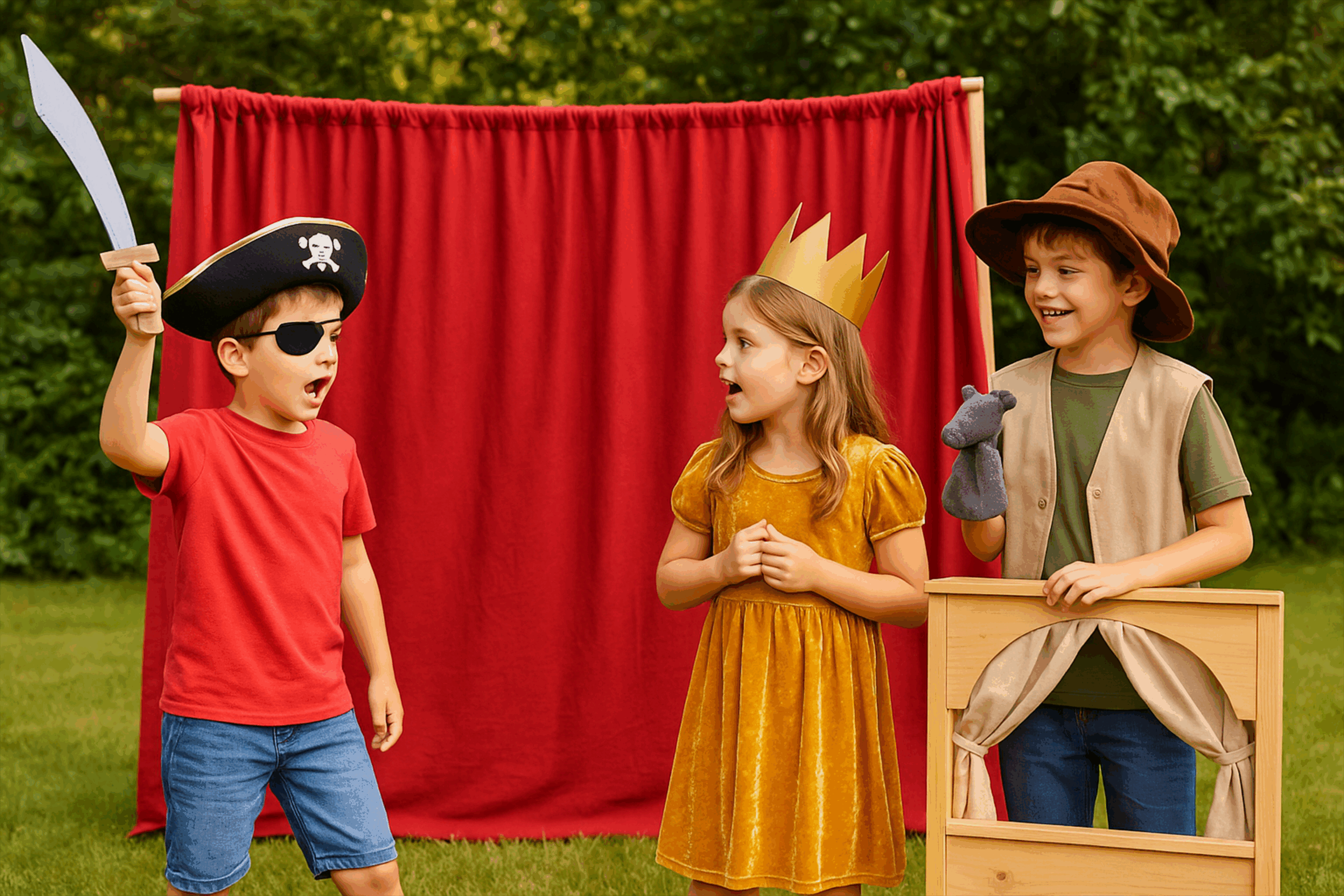
Backyard Theater
Gather a few friends and put on a show to rival the best performances in town! Kids can make up their own skits or adapt one of their favorite summer stories into a play or puppet show for friends and family.
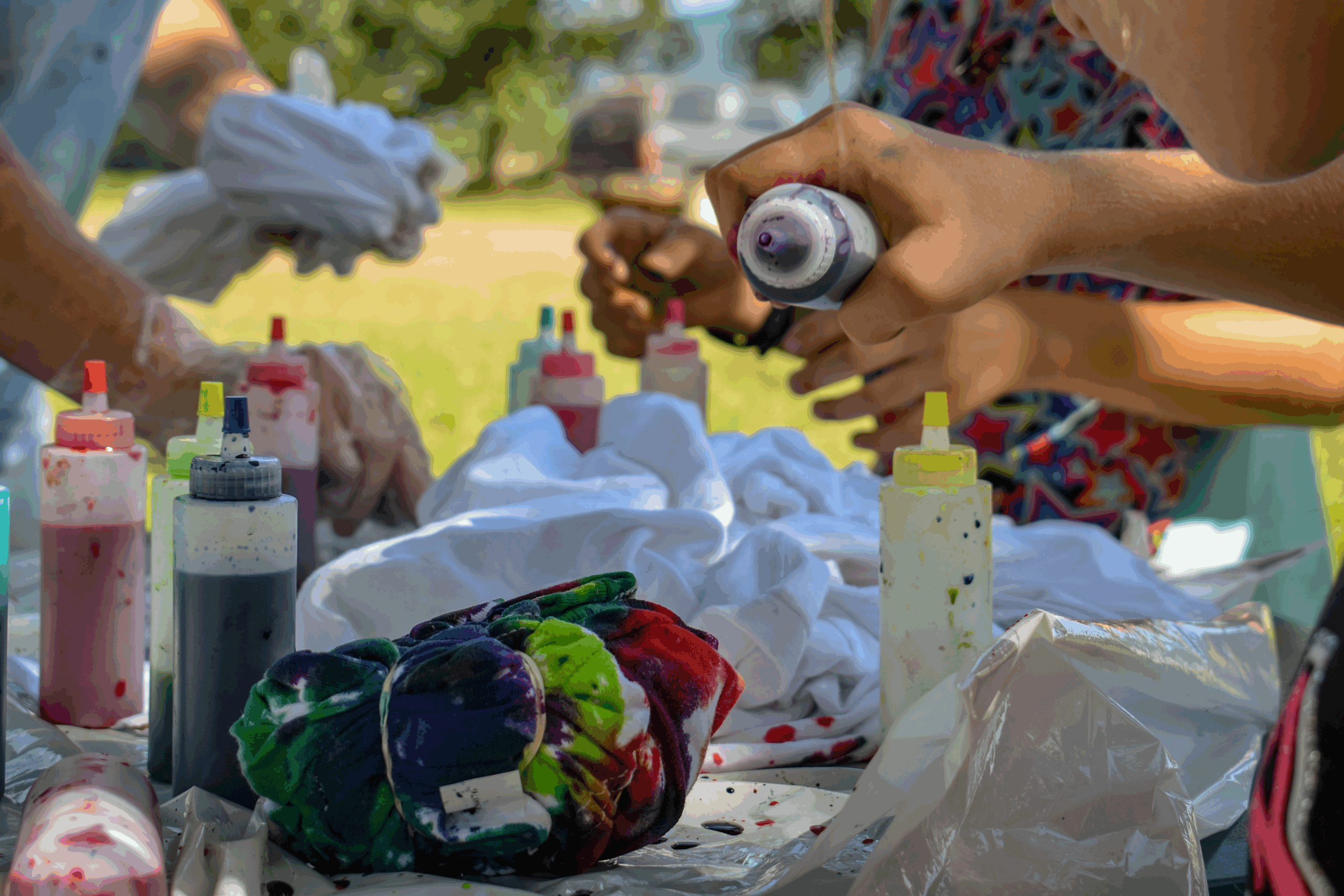
Tie Dye
This is a beloved activity that’s perfect for summer. It can get a bit messy, so that makes it the perfect craft to do outdoors.
Tip: If you’ve already got too many tie-dyed t-shirts, consider dying beach towels, hair bands, or socks instead.
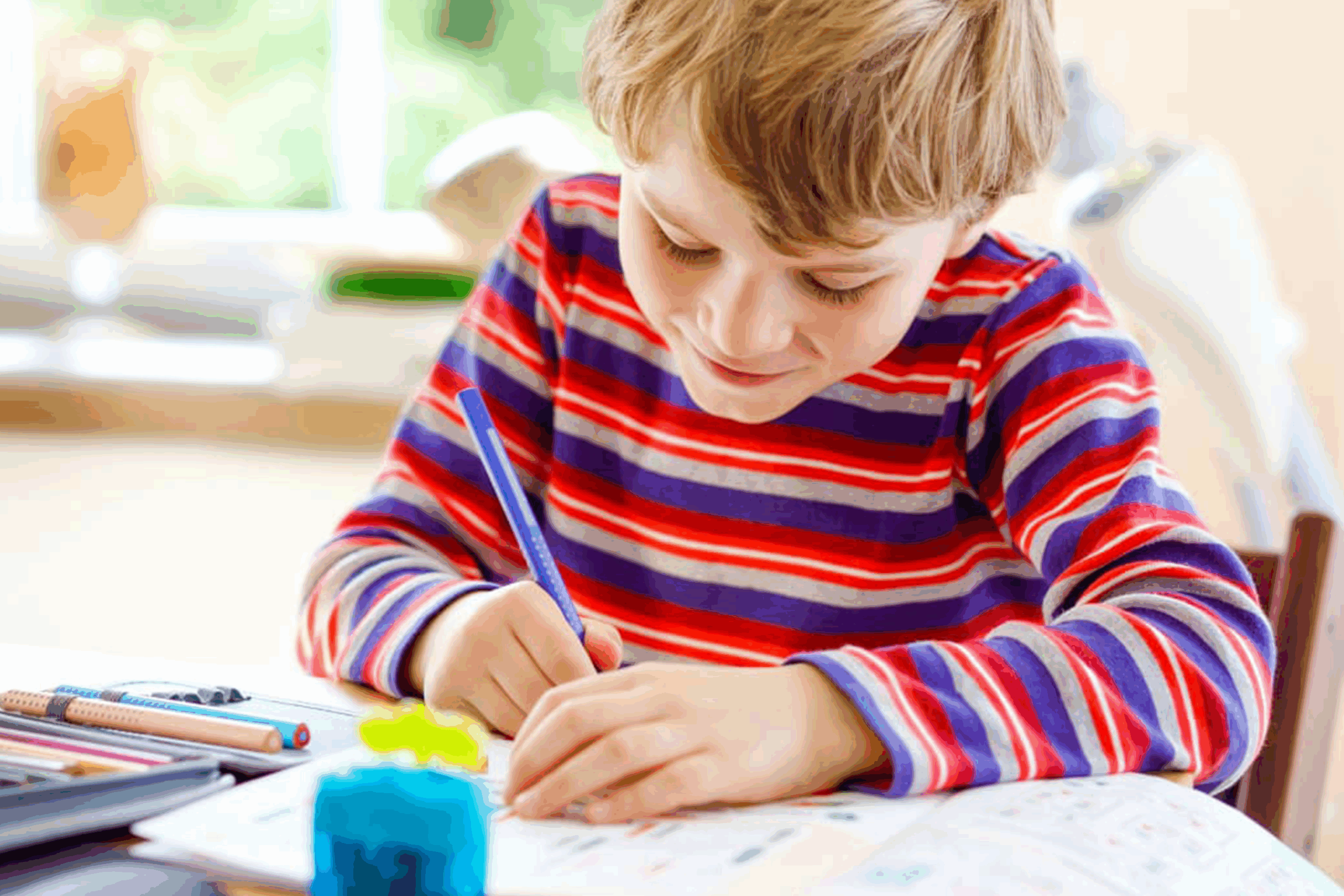
Summer Poems
Invite young authors to compose their own poems about the sunny season. They can illustrate them and collect them together in a homemade book, or invite friends and family to join them in reciting their favorite summer poetry. Use this list of rhyming words to help get them started!
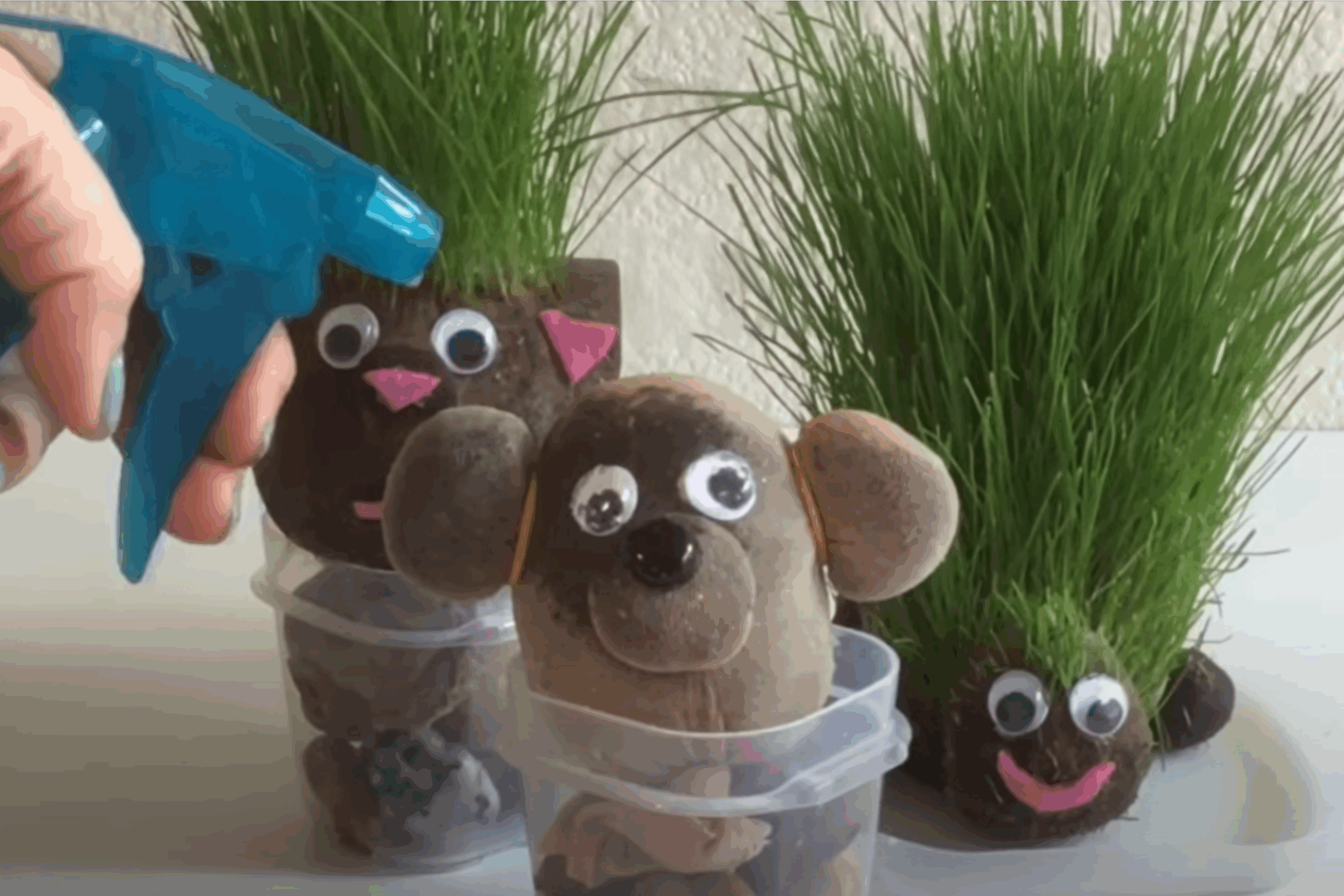
Silly Plant Hair
Kids love to plant things and watch them grow. Turn this activity into art by pasting a photo or drawing a picture of your face on a paper cup. Then, plant grass seeds inside, and watch the crazy hair sprout! Learn more about this creative summertime activity for kids here.
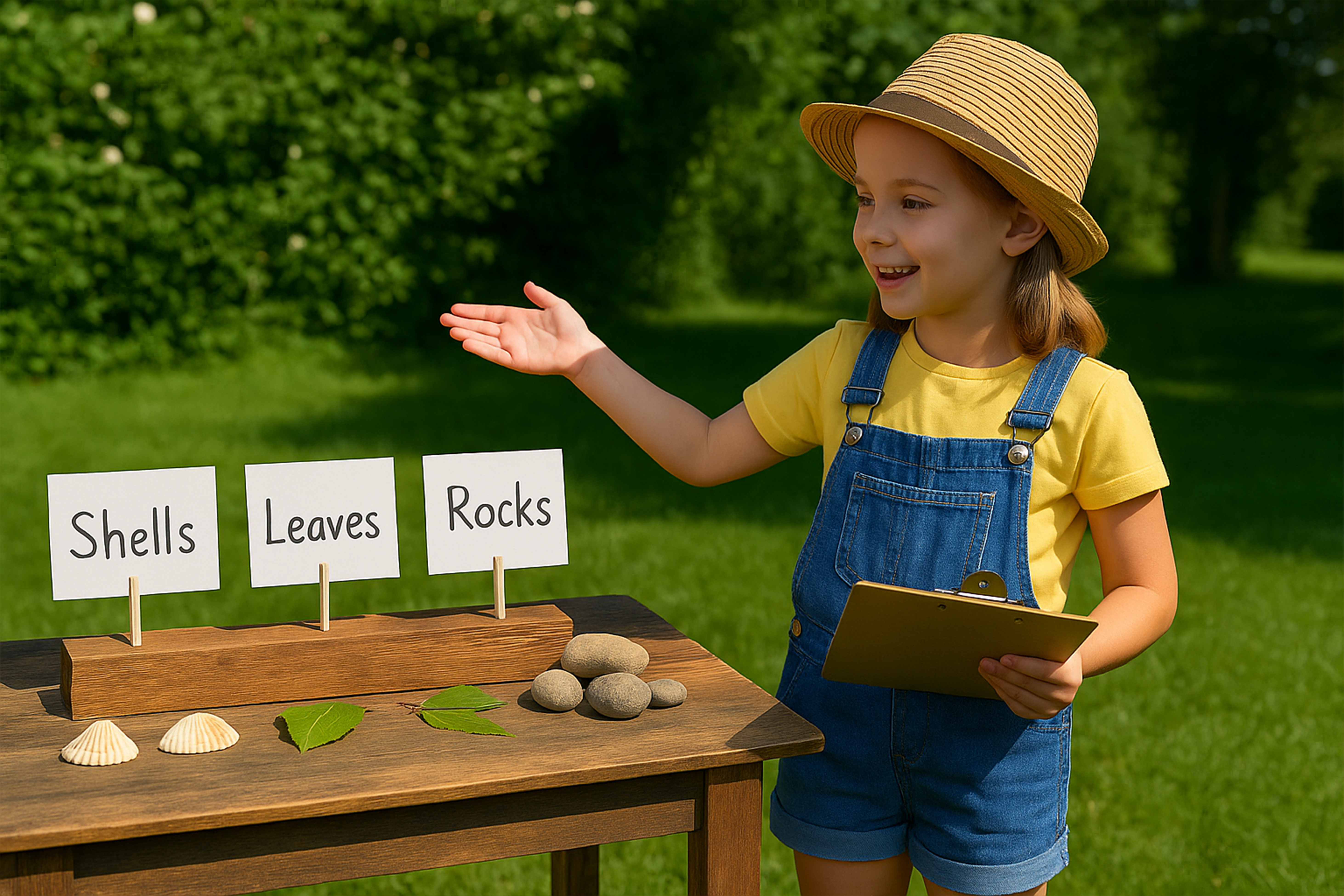
Backyard Museum
This is the perfect season to get out and explore, gathering interesting rocks, leaves, shells, and more. Turn each into an “exhibit” in the backyard, complete with explanatory signs. Then kids can act as tour guides to show others all their treasures.
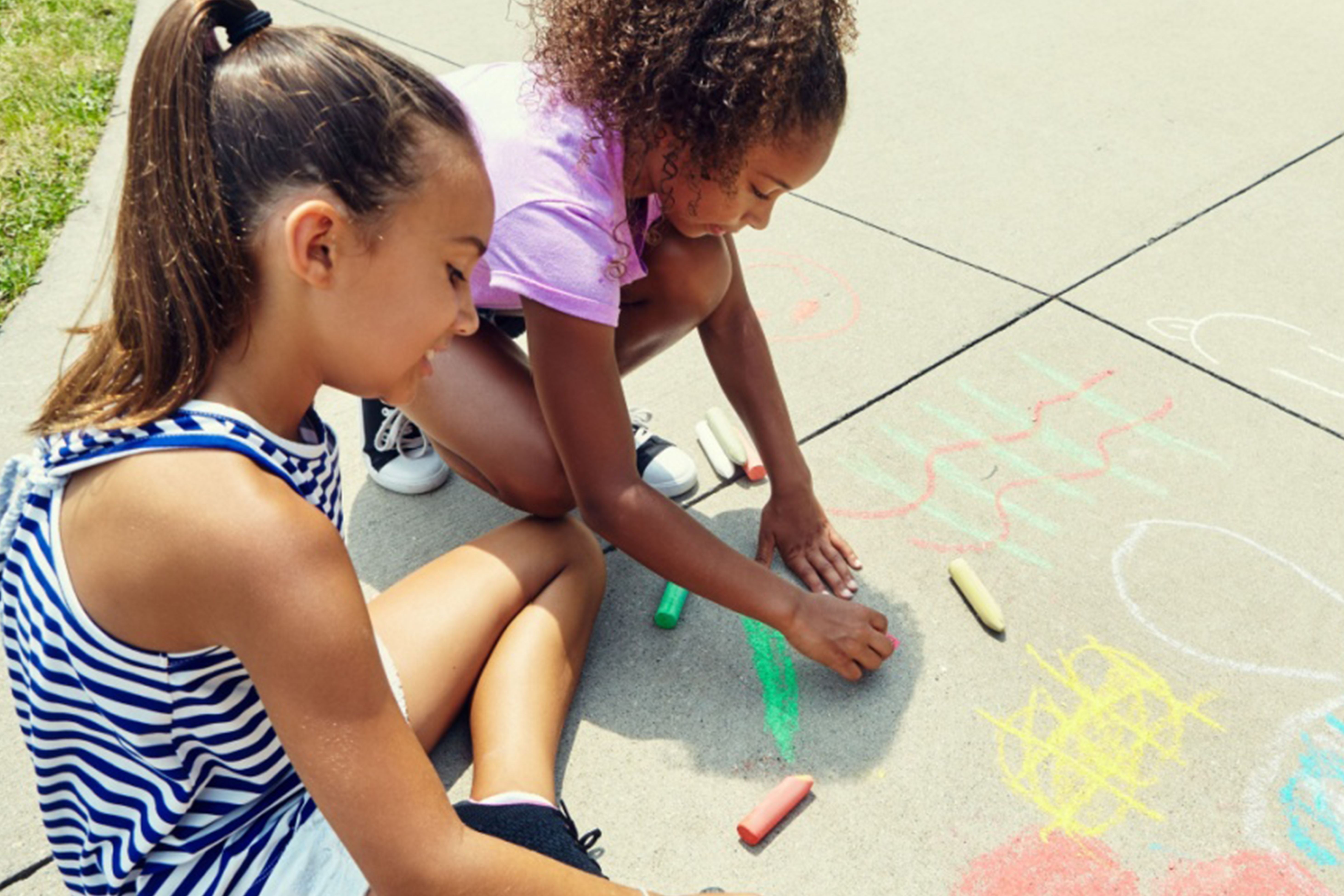
Sidewalk Chalk Murals
Is it even summer if you don’t spend time drawing with sidewalk chalk? Find a big driveway, a brick wall, or a playground, then plan out and draw an enormous mural together.
For inspiration, look for a local chalk art festival near you to visit as a family.
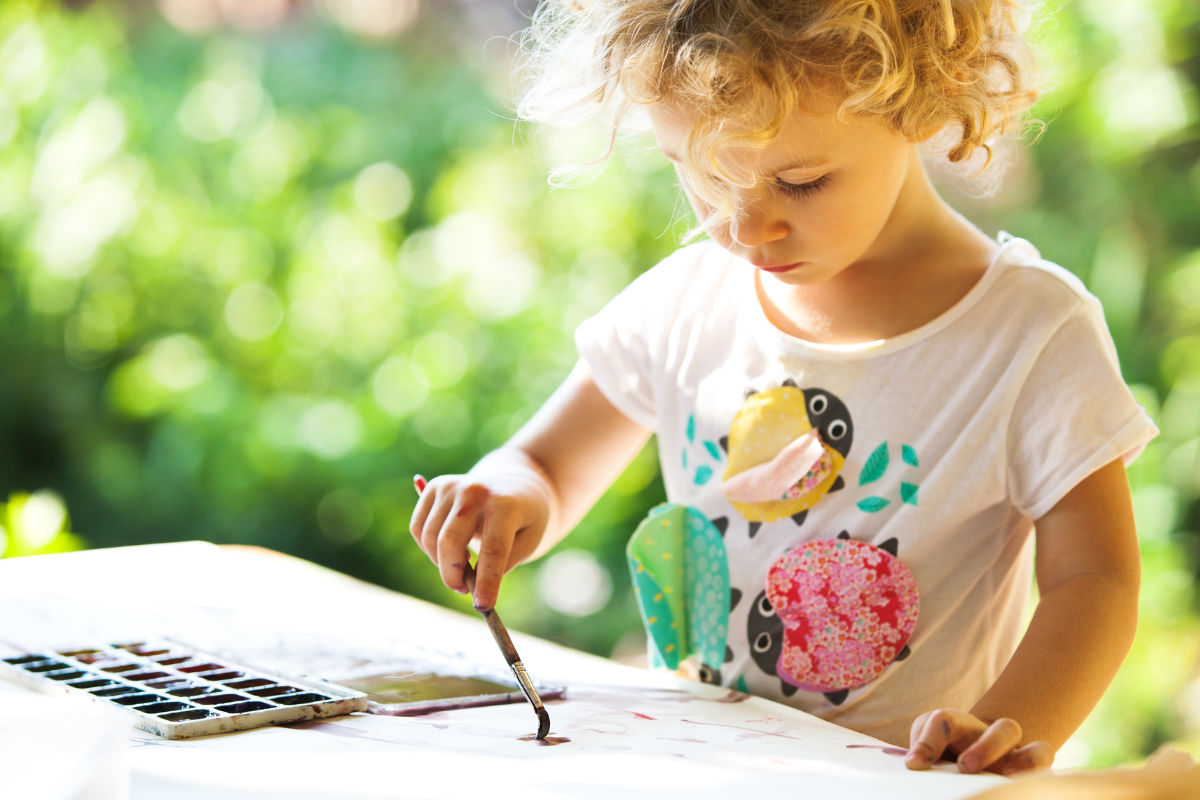
Nature Painting
Choose a beautiful spot in nature, then set kids up with easels or sturdy-backed sketchbooks and some watercolors.
Whether they try to capture exactly what they see or create impressionist-style paintings instead, this is a fun and creative way to encourage young ones to study the world around them. Get more info on this activity idea here.
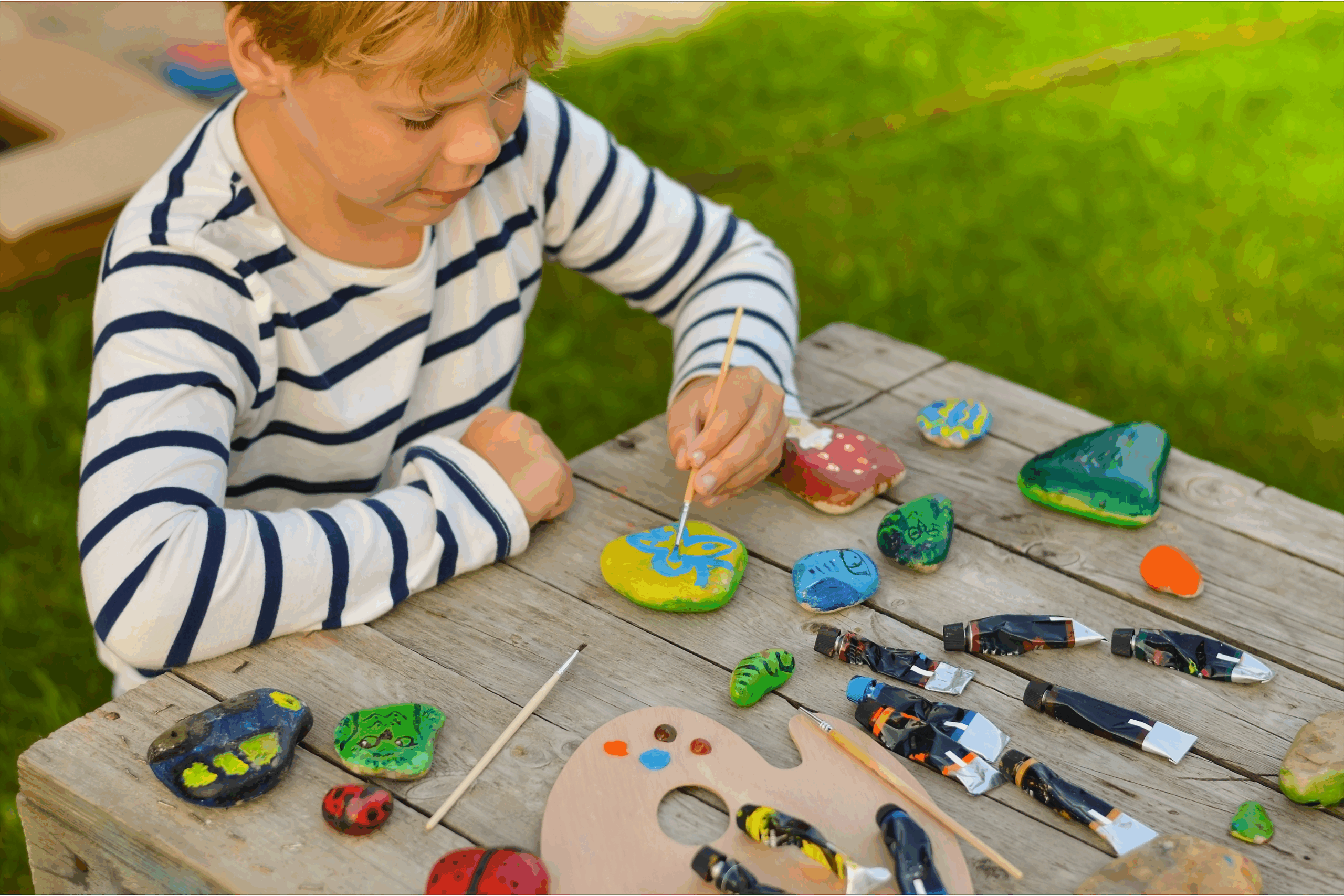
Rock Painting
Buy some smooth river rocks and use acrylic paints to decorate them however you like. Then, leave the painted rocks around town or at the playground to surprise and delight others in your neighborhood!
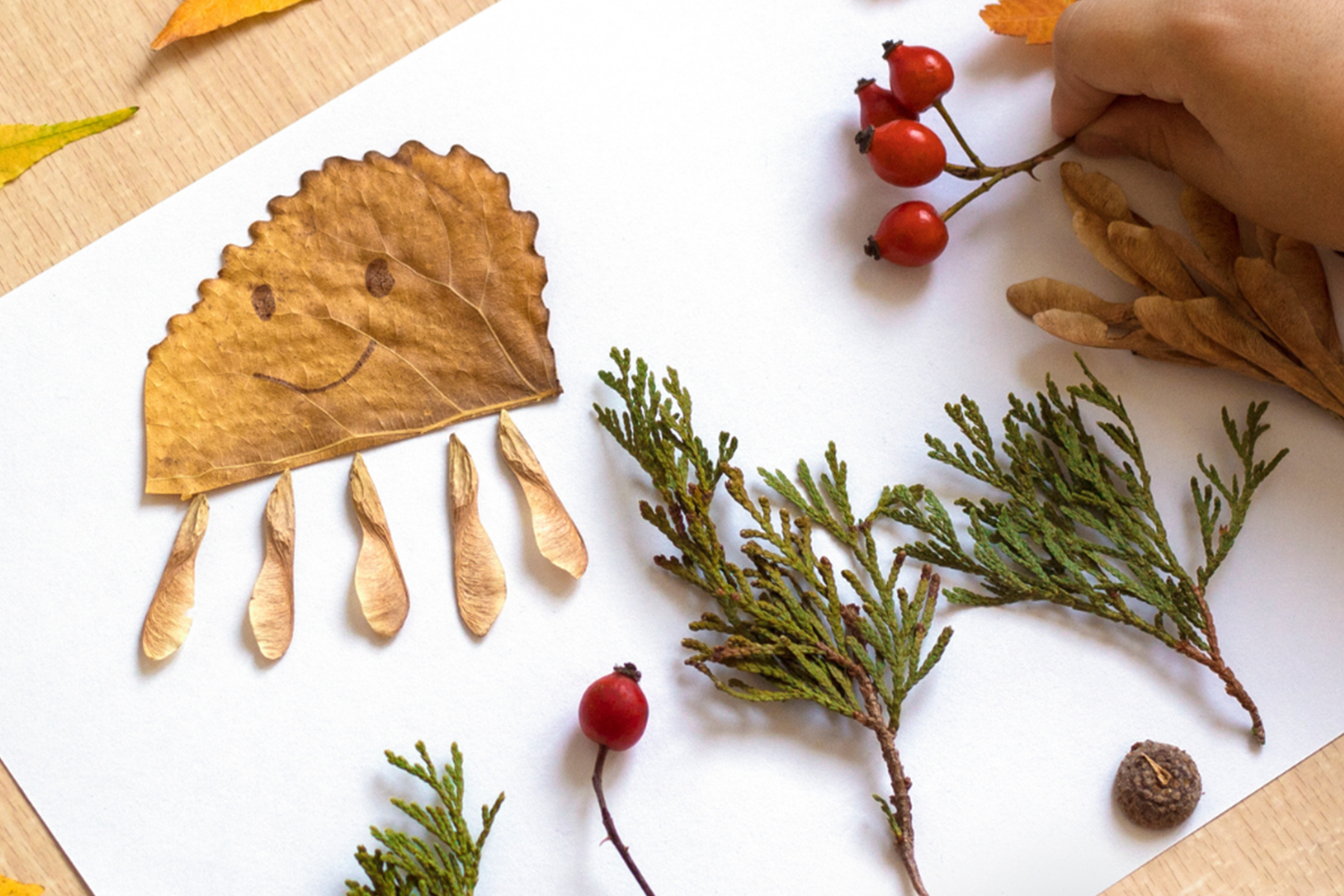
Nature Collage
Take a nature stroll and collect items like leaves, sticks, wildflowers … whatever catches your eye. Back at home, spend some time arranging the objects in interesting patterns, then glue them down to make a summer nature collage.
Try this creative idea from our Instagram page!
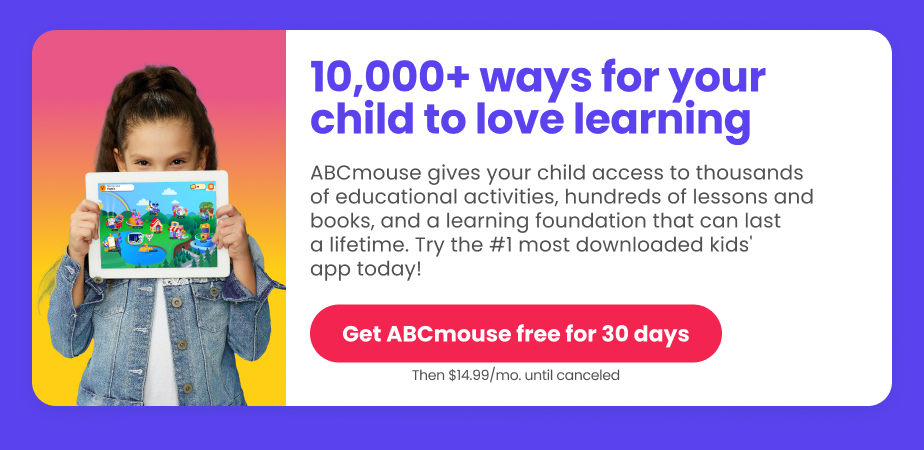
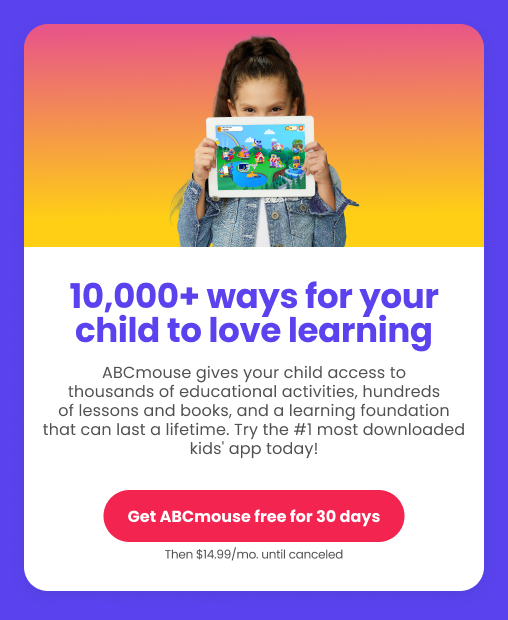
Quiet and Calming Summer Activities for Kids
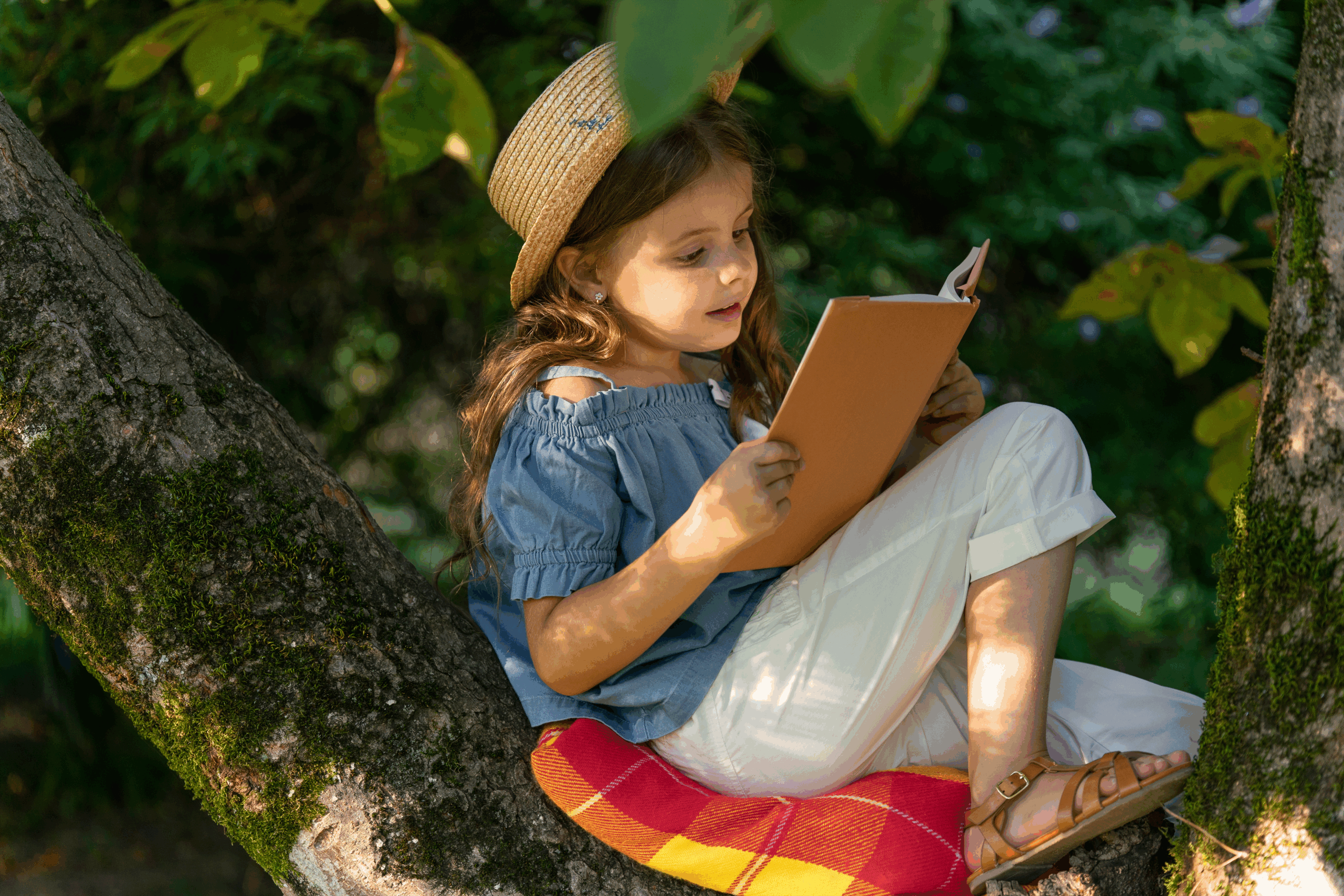
Outdoor Reading Nook
Take one of our top summer reads for kids outside and find a comfy place to read. A few of our favorite spots: under a big leafy tree, sitting in the kiddie pool on a hot summer day (protect those pages!), or in a backyard tent with a flashlight.
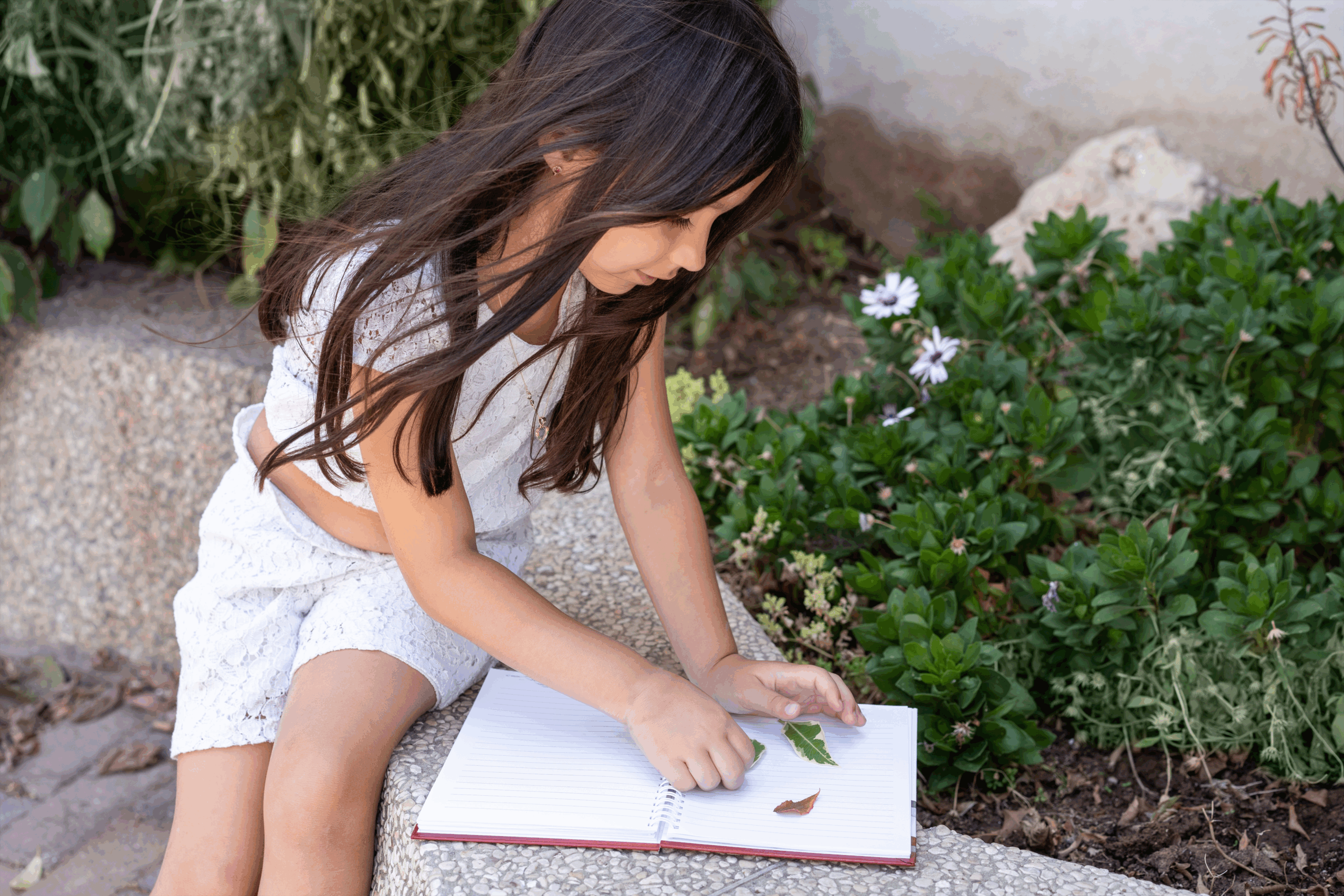
Nature Journal
Spend a few peaceful minutes each day drawing or writing about what you see in nature. Note the colors of the leaves, the clouds and weather, the flowers in blooms, or the birds and butterflies. At the end of the season, you’ll have a beautiful record of the whole summer!

Cloud-Watching
Lying on your back watching clouds might be one of the most calming activities there is. Have fun pointing out shapes and watching them change over time. You can even try sketching some of your sightings, or recreating them later with cotton balls and glue.

Stargazing
Give kids the treat of staying up past their bedtime to check out the planets and constellations visible in the summer. Use a basic pair of binoculars to see what details you can spot on the moon!
Tip: The Perseid meteor shower peaks in August, putting on an incredible nighttime show.
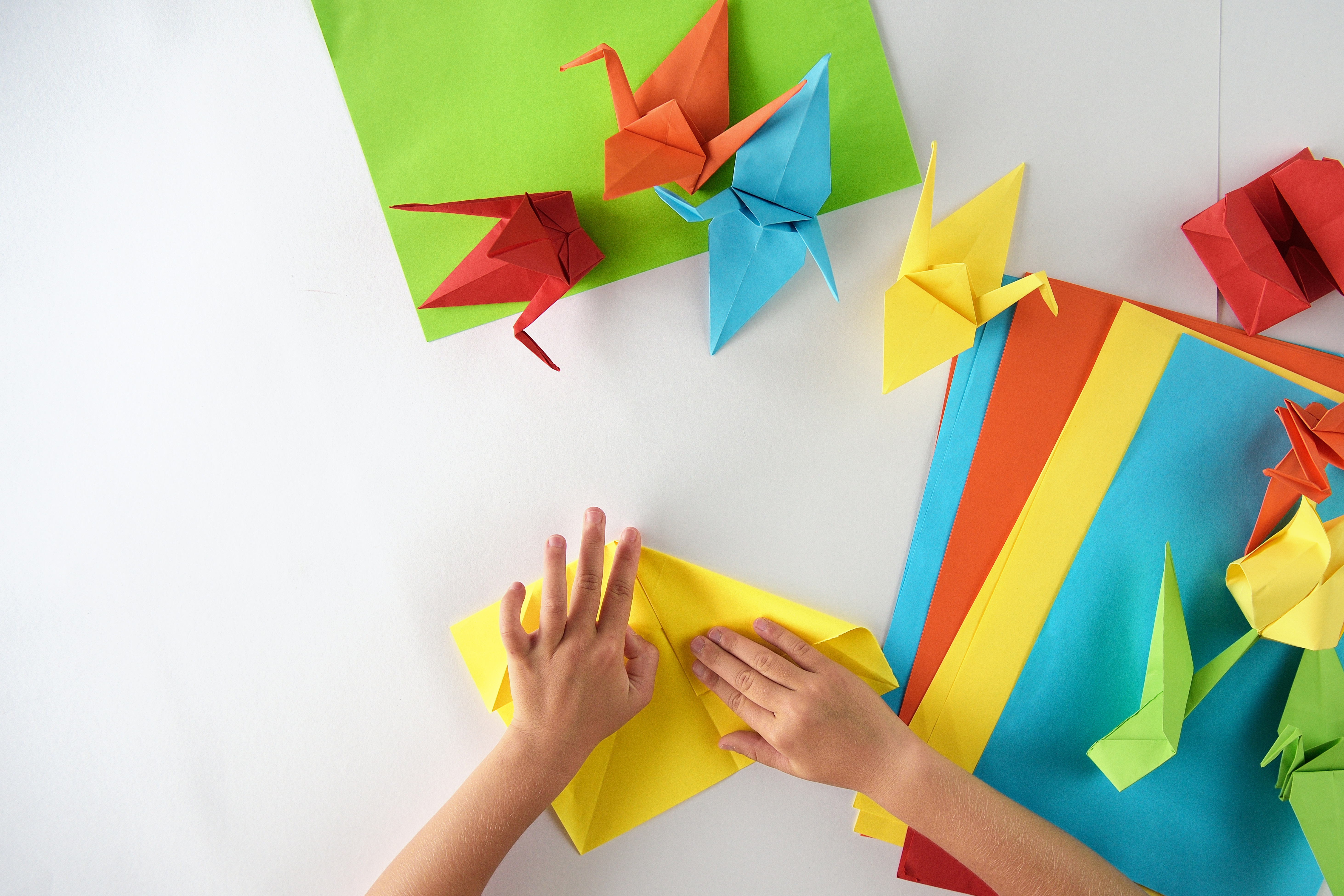
Origami
The web is full of easy origami tutorials for kids and adults alike. You can buy special origami paper or just use whatever you have on hand. You could even consider trying to fold 1000 paper cranes together as a family this summer!
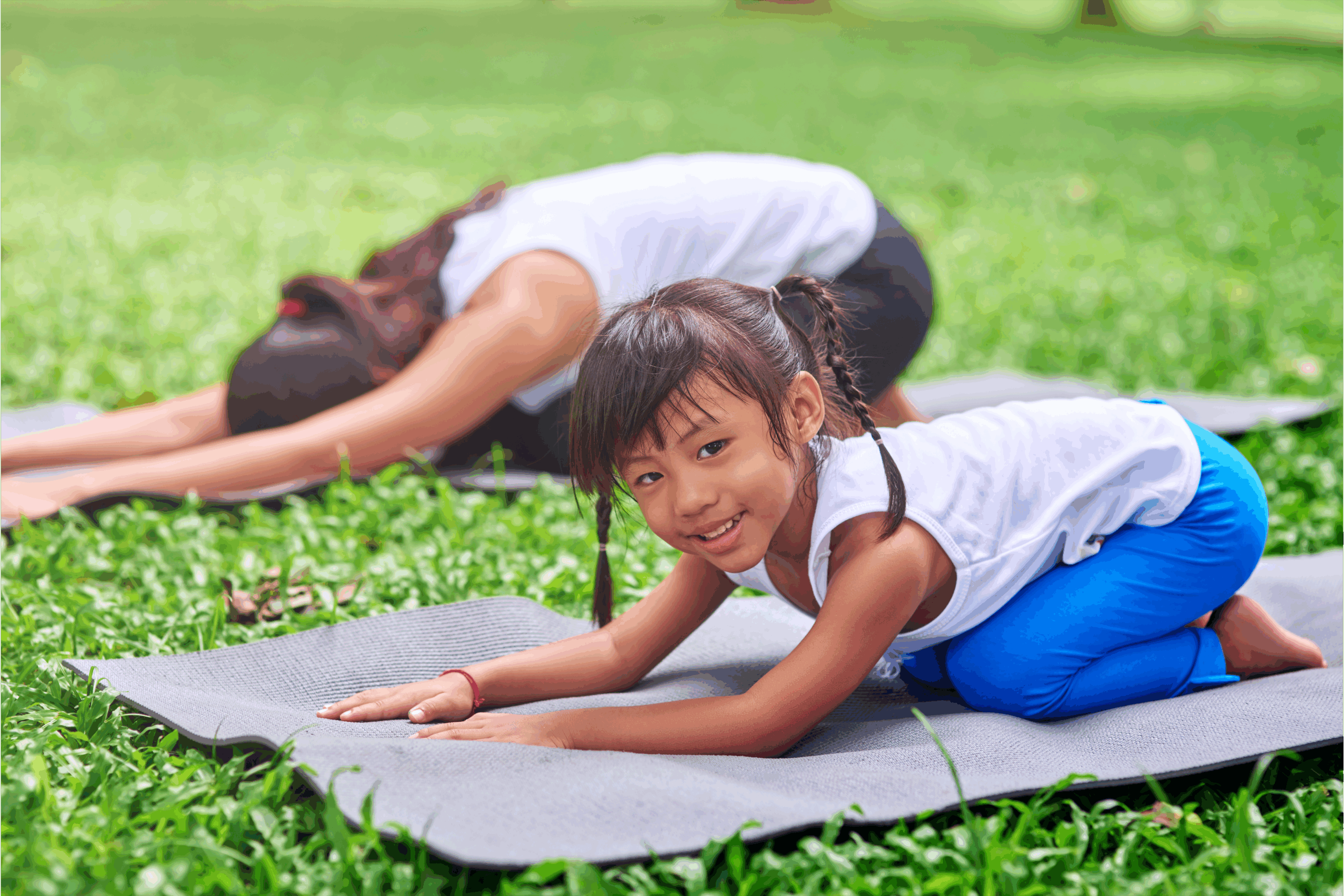
Outdoor Yoga
This meditative stretching activity is even more soothing and relaxing when you try it outdoors in nature. Even little kids can easily master simple poses like downward-facing dog, cat pose, and star pose.
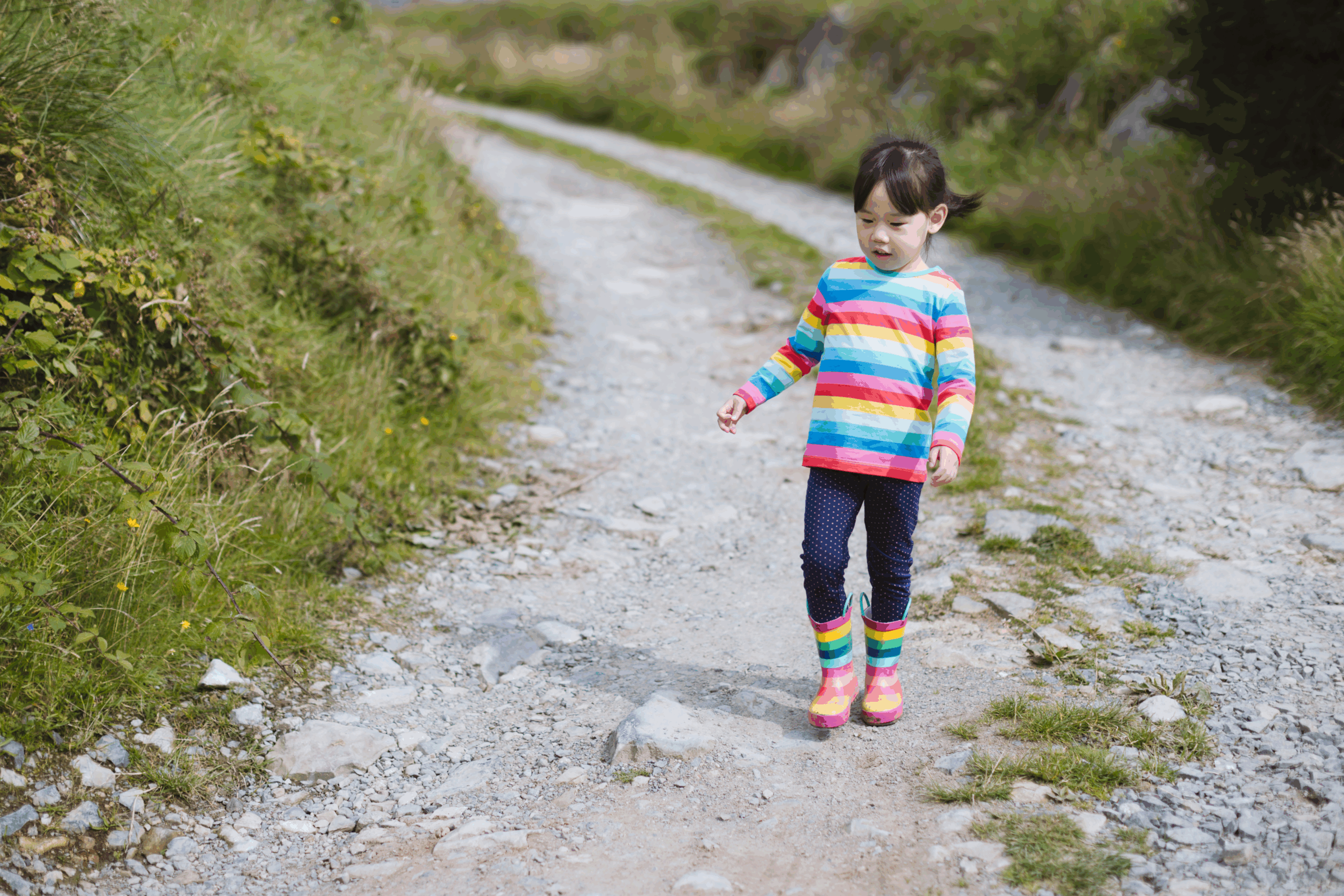
Listening Walk
Take a walk using your ears more than your eyes. Discuss the sounds you hear, noting just how many there really are when you stop to truly listen.

Bird Watching
Hang a bird feeder and watch for visitors to your yard. Learn to identify the common birds that drop by using free tools like Merlin Bird ID.
Kids will love using the sound ID feature, which identifies birds by listening for their calls!

Sidewalk Sensory Walk
Use chalk to create your own sensory walk along a sidewalk, driveway, or playground.
Include different ways to move along sections of the path (hopping on one foot, backwards, etc.), plus spots to stop for different activities, like touching your toes, smelling scents in the air, or listening for birds or just the breeze.
Playdate/Group Summer Activities for Kids
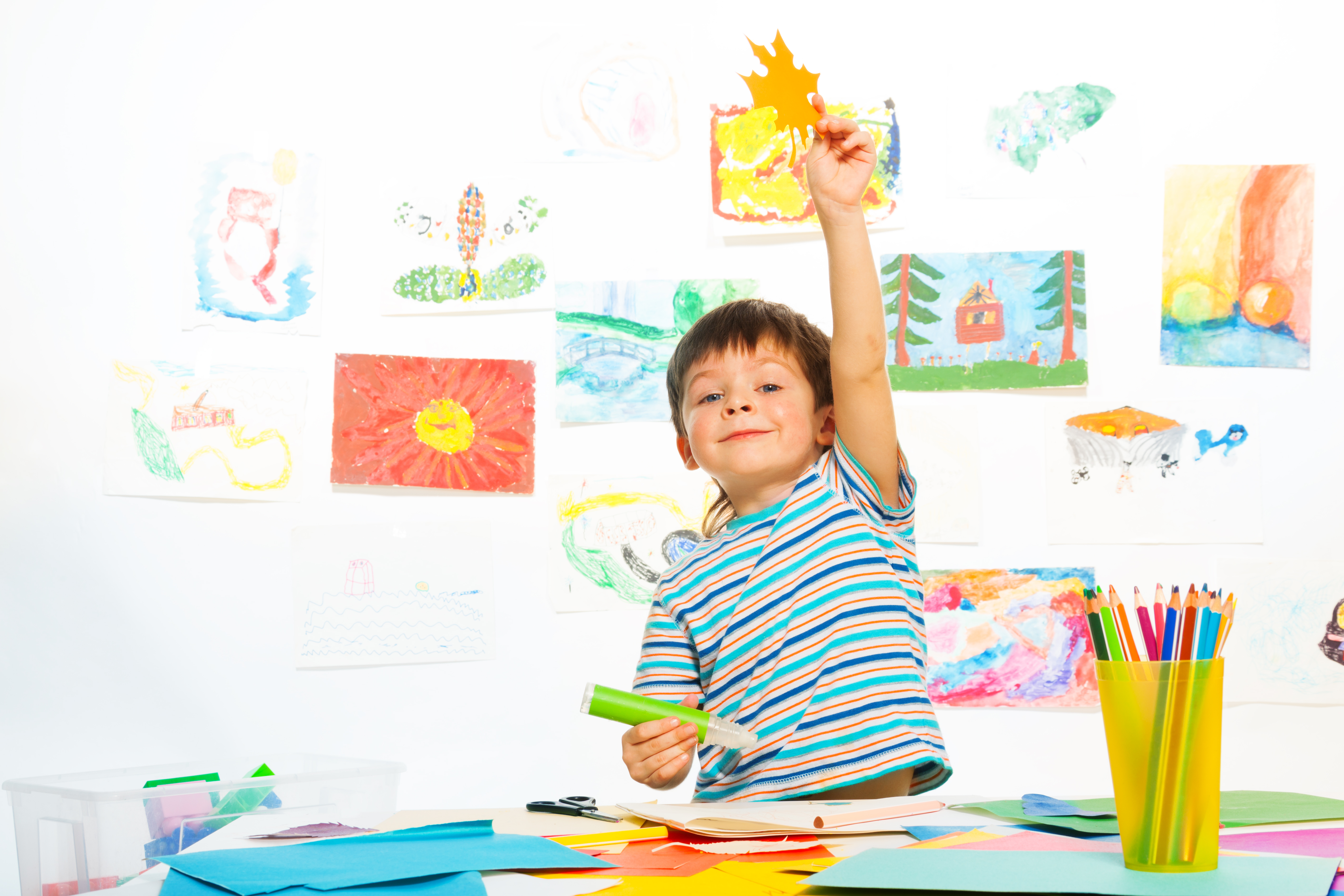
Art Show
Invite everyone to bring a piece of their own artwork to display in a summer art show.
Kids can stand by their masterpieces, proudly explaining their work to others as they tour the displays.
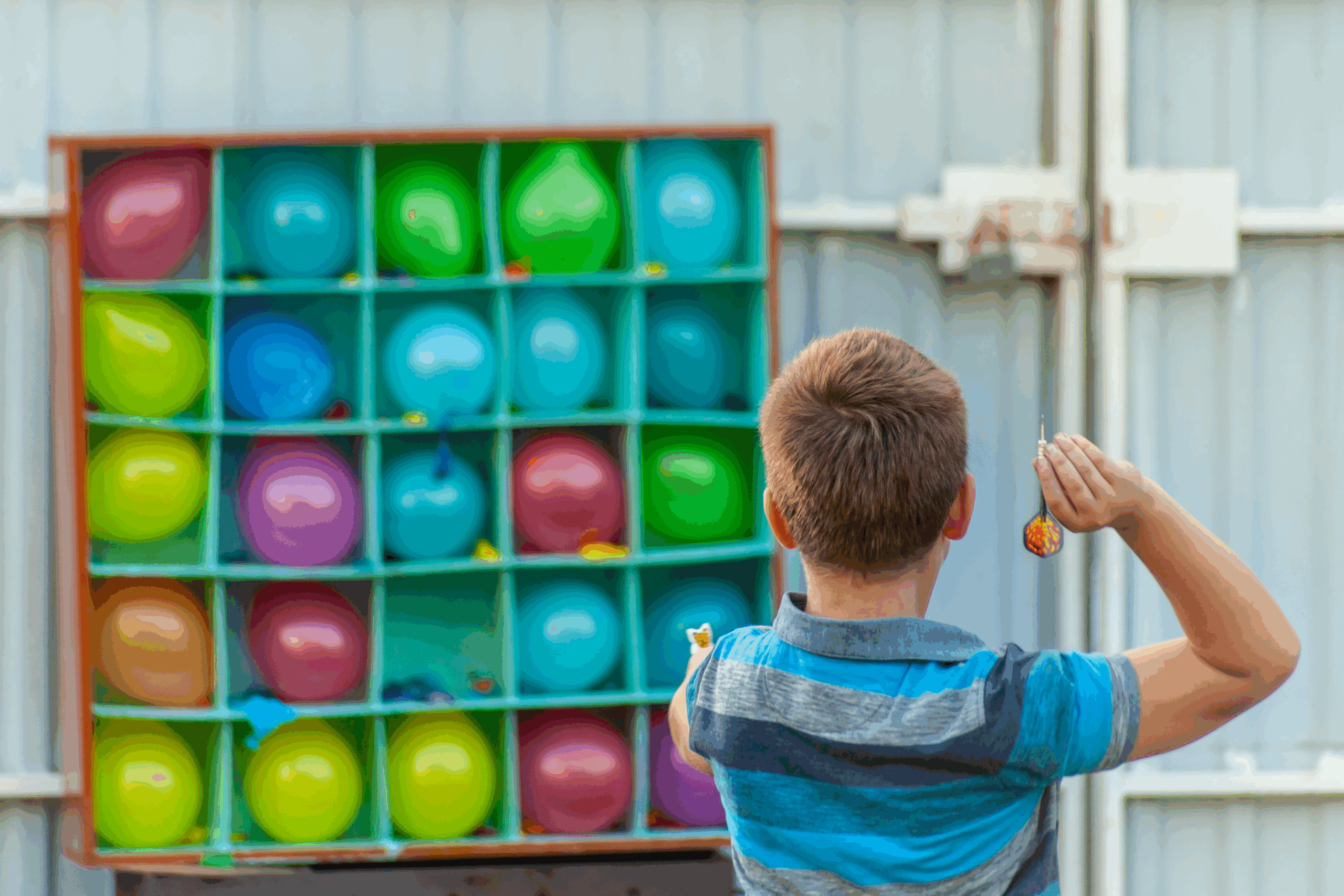
Backyard Carnival
Carnivals and fairs are a favorite summer activity, but you don’t have to wait for one to come to your town—make your own instead.
Kids will have a blast making their own DIY ring toss, balloon pop, cake walk, bean bag throw, and other booths. Pick up some inexpensive prizes and invite others to step right up!
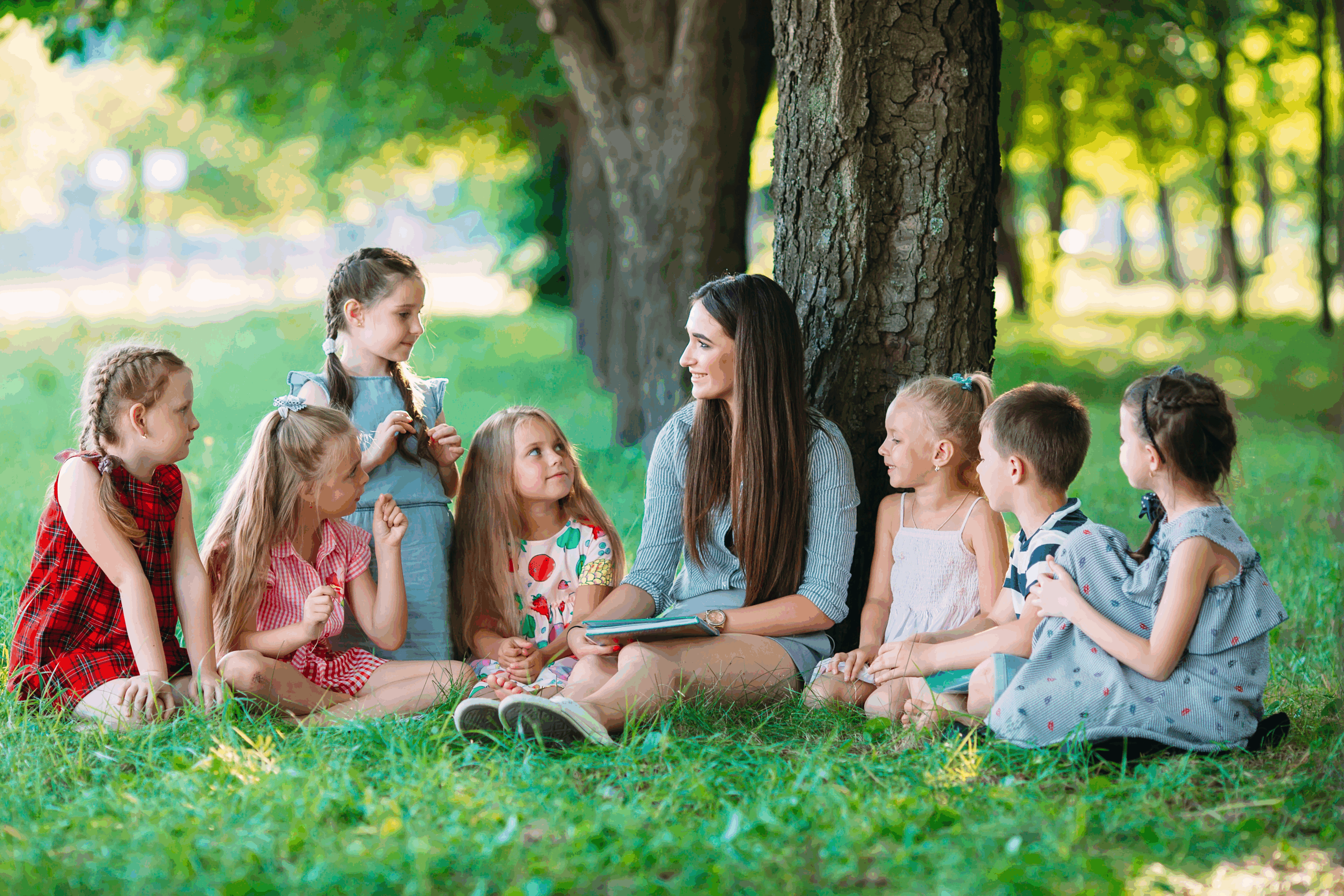
All-Ages Storytime
Ask older children to choose their favorite books to read to the younger ones in the group.
Finish with an adult-led storytime so every kid gets a chance to kick back and enjoy the tales.
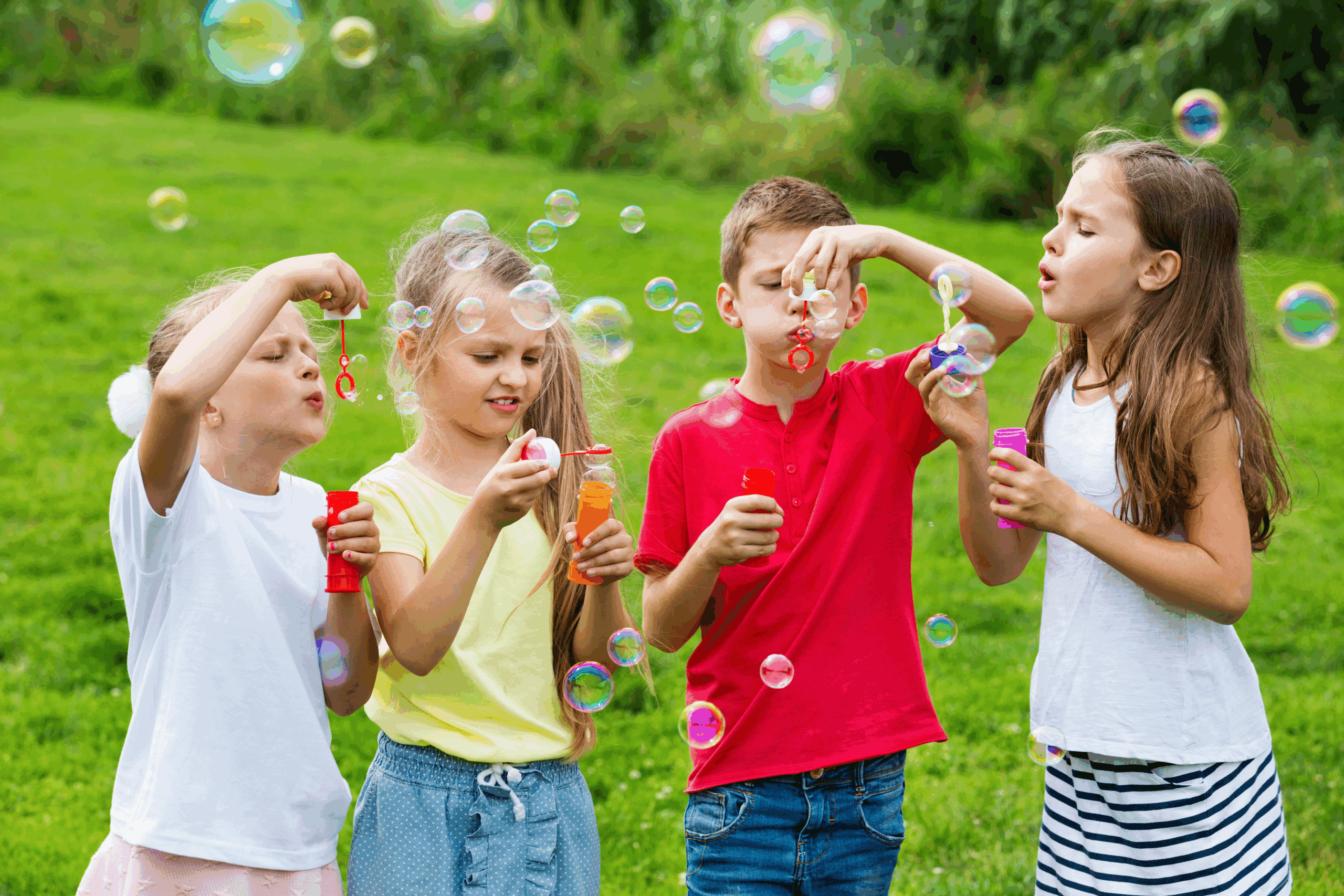
Bubble Blowing Party
Blowing bubbles by yourself is fun, but when you get a whole group together, the fun multiplies!
Make this activity even more better with a bubble machine and music for the ultimate bubble dance party.
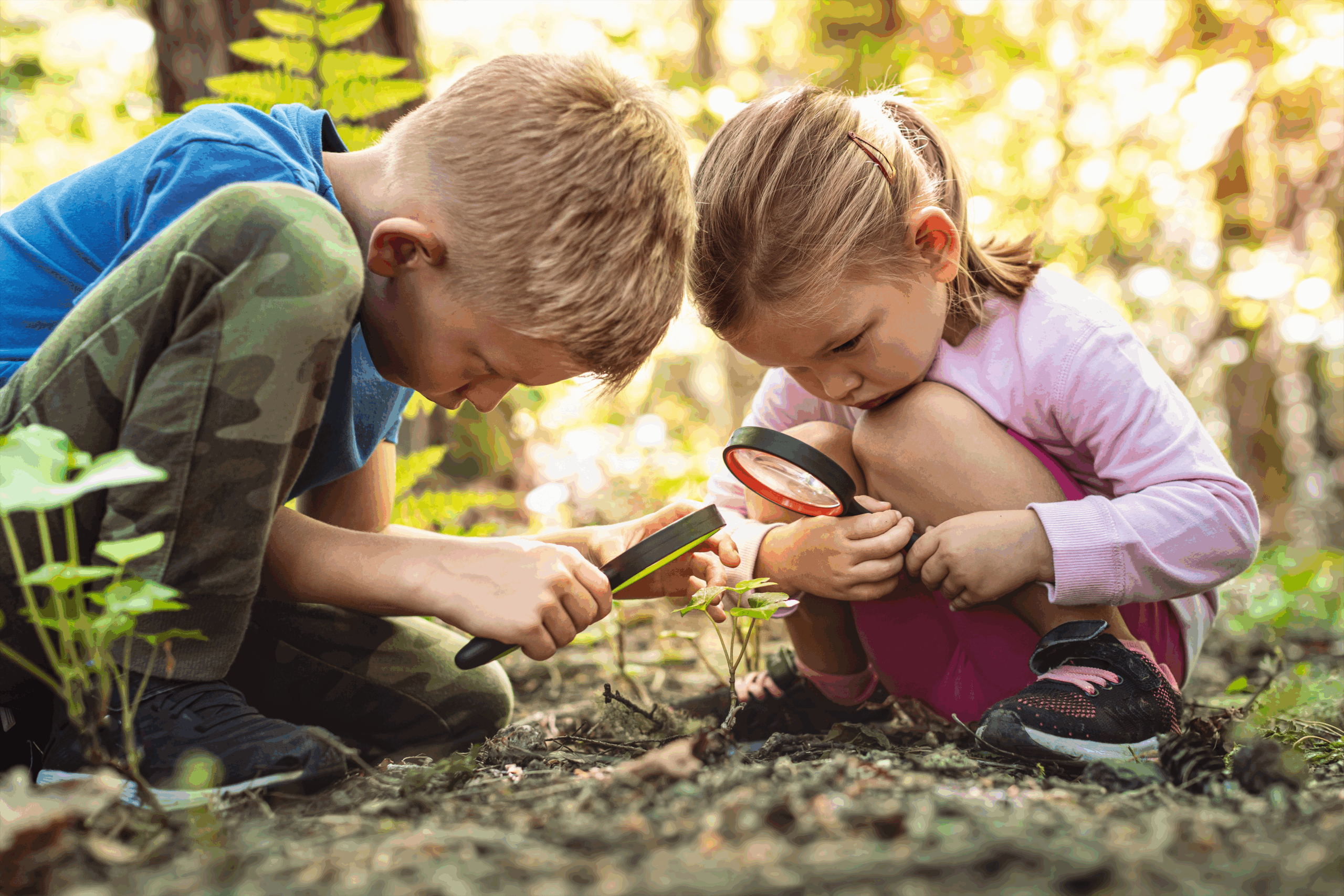
Scavenger Hunt
Kids of all ages love a good hunt. Create a list of items, break the group into teams, and see who can finish the list first (or bring back the most items in a set amount of time).
You can offer prizes, or simply compete for bragging rights.
Tip: Even though it’s not Earth Day, our Earth Day scavenger hunt still works great as an easy way to get started.
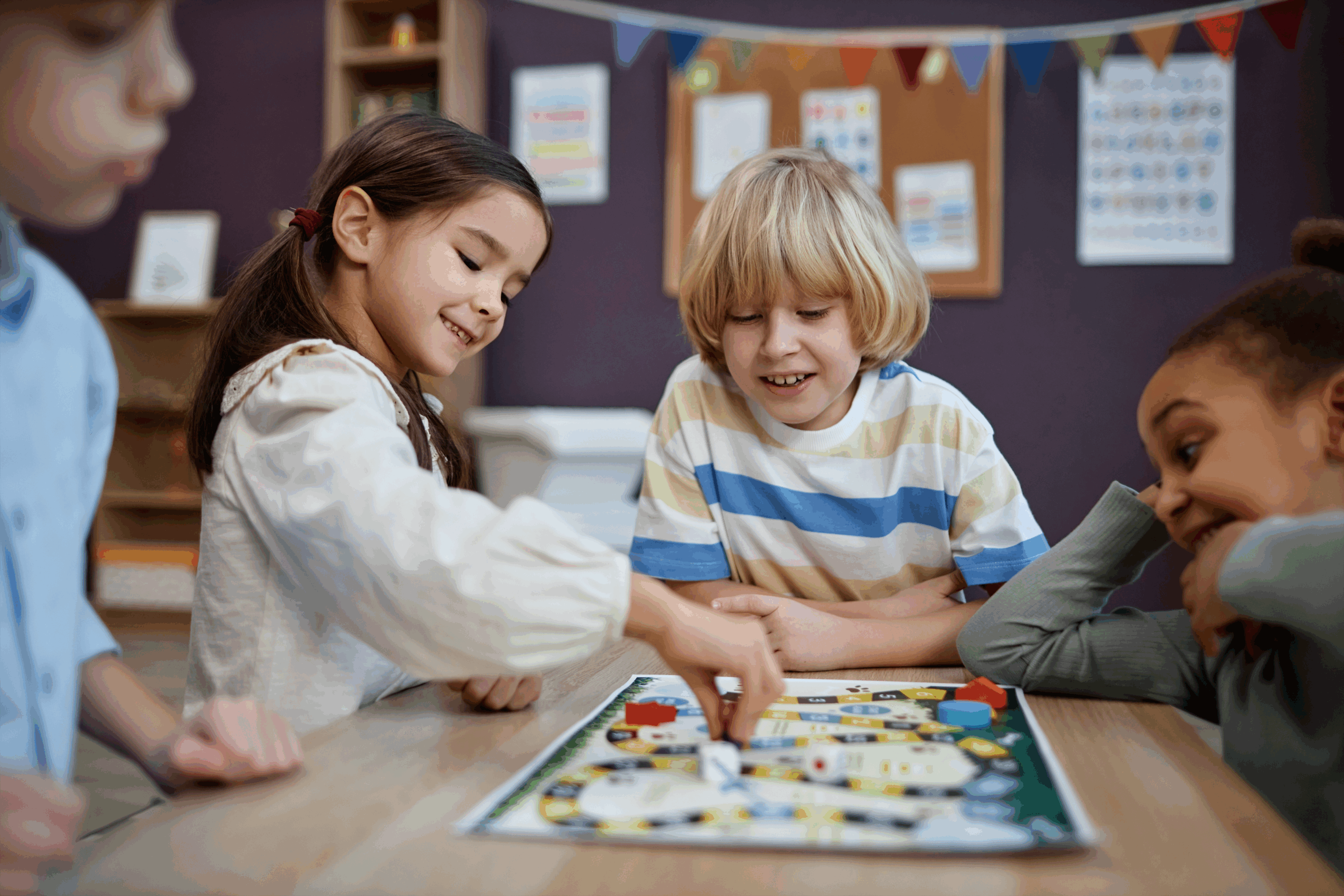
Board Game Tournament
Even summer has rainy days. Fortunately, those are perfect for board game tournaments.
Pick a handful of favorites and rotate kids among them. If you like, you can award points to the winners, keeping track as you go along and crowning champions at the end.

Backyard Olympics
Decide on your events, keeping it simple and inclusive.
(Not all events need to be physical; include a puzzle contest or rhyming challenge amongst your running and jumping games.)
Divide the group into teams and assign each a country. Kids can make flags and learn national anthems as they compete for gold, silver, and bronze.
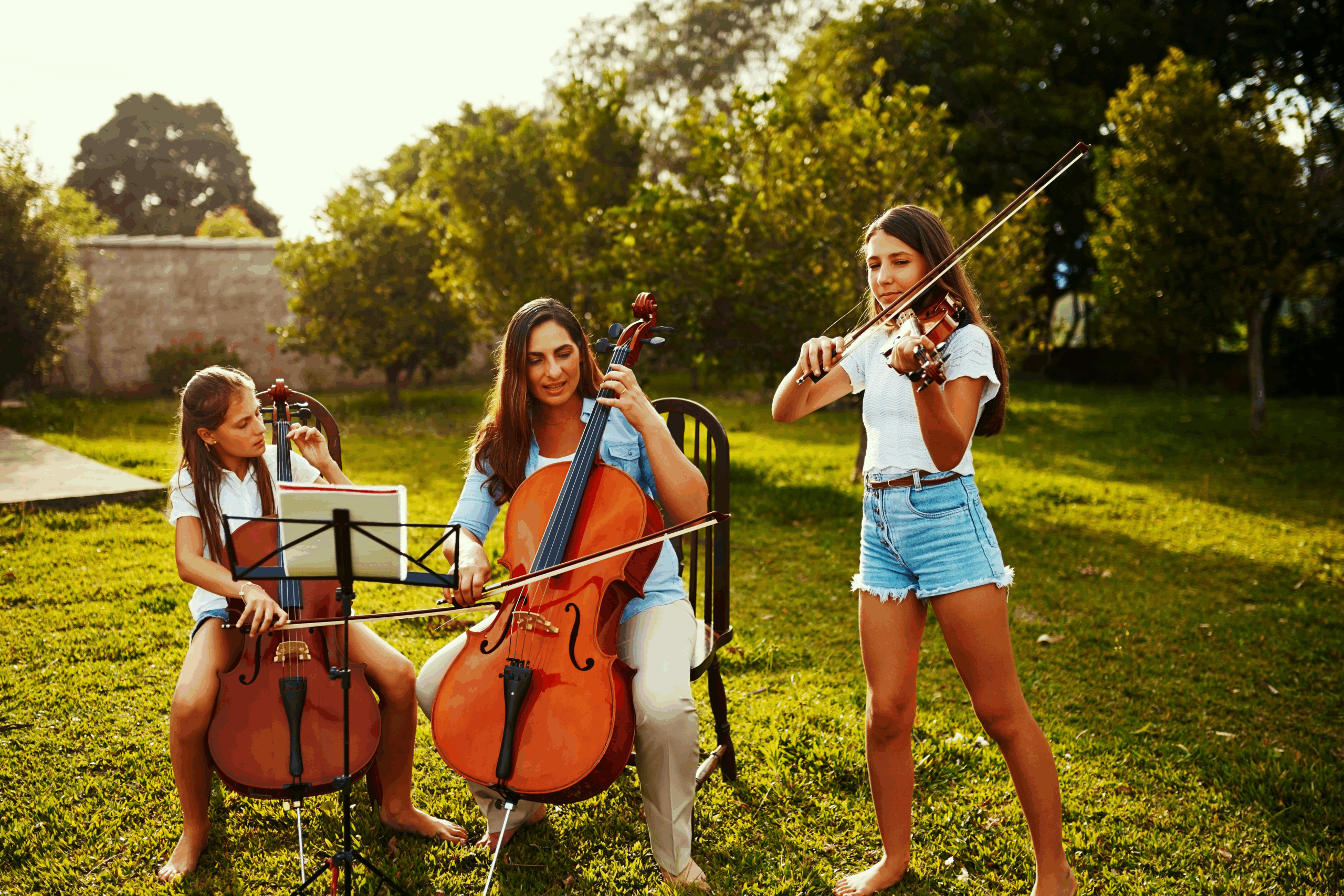
Talent Show
Everybody—yes, EVERYBODY!—has got talent. Hold a talent show that encourages participation from everyone, even if their talent is something silly like reciting the alphabet backward while standing on one foot!
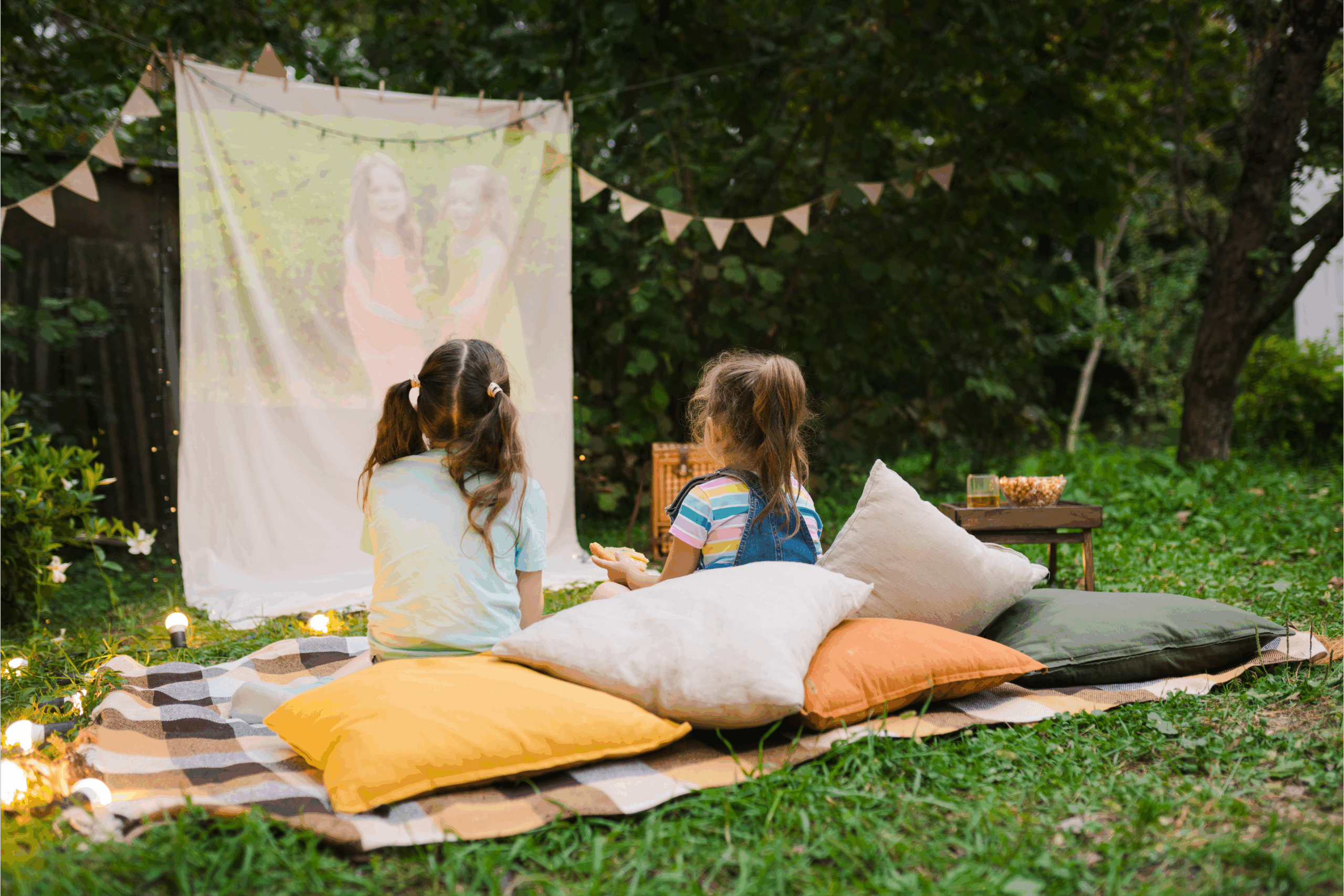
Outdoor Movie Night
With a big white sheet and an inexpensive projector, you can hold a neighborhood movie night in your own backyard.
Pop some popcorn and stock up on sweet treats, then spread out some blankets and watch a flick under the stars.
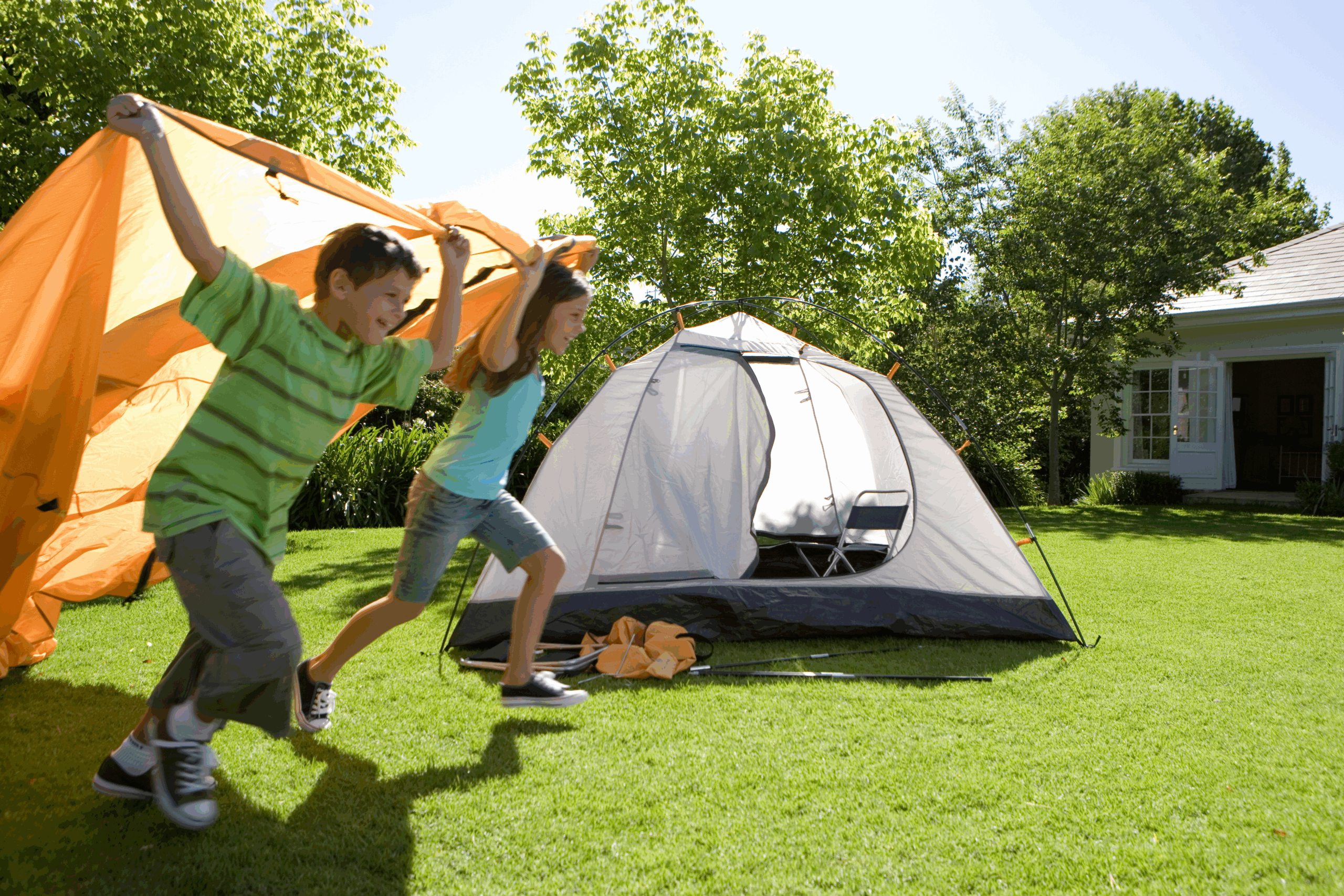
Daytime Camp Out
Some kids might be a little too small for an overnight camp out, so hold one during the day instead!
Set up tents, roast marshmallows, tell campfire stories, and then take an afternoon nap under the canvas. This is just as much fun as an overnight but comes with the perk of fewer mosquitos!
-
Letter B Coloring Pages (Free Printables!)
Fun letter B coloring pages and activities to help kids explore letter sounds and words—free printables from ABCmouse.
-
Letter A Coloring Pages (Free Printables!)
Free printable letter A coloring pages with fun characters and activities for early alphabet learning.
-
170+ Summer Bucket List Ideas for Kids
Fun summer bucket list ideas for kids! Explore 170+ activities from water play to crafts, treats, adventures, quiet time, and more.
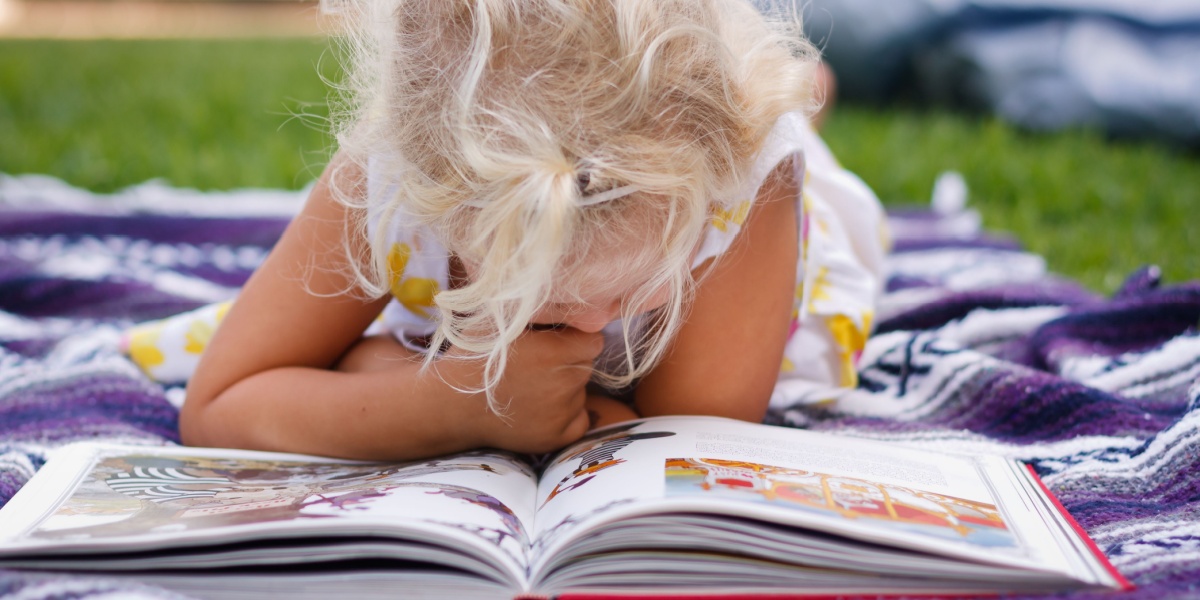
Summer Reading List for Kids
Whether you’re reading in the park, on a sandy beach, or in the air conditioning, this list features great books for kids ages 2 to 8 to read this summer!
Summer is the perfect time to do more reading, especially with books that celebrate the season’s sunshine and experiences! This list of summer-themed books for kids includes stories about beach days, garden fun, nature exploration, and more. Whether you’re relaxing at home or heading out on a family trip, this list of books for kids is a great way to celebrate summer and keep young readers engaged.
For more books to read this summer with kids, try the ABCmouse’s digital library filled with over 400 books–it’s free with your ABCmouse subscription!
Toddler Summer Reading List
Though kids this age might sit through longer books, most do best with reads that are short and sweet. These selections feature a lot of board books, which can endure some rough-and-tumble play but also offer an important introduction to text and illustrations.
- I See Summer by Charles Ghigna, illustrated by Ag Jatkowska
- Mama, Is It Summer Yet? by Nikki McClure
- Baby Loves Summer by Karen Katz
- Mouse’s First Summer by Lauren Thompson, illustrated by Buket Erdogan
- Who’s Hiding at the Beach by Katharine McEwen
- Hello, World! Garden Time by Jill McDonald
- S is for S’mores by Helen Foster James, illustrated by Lita Judge
- Into the Sand Castle by Cindy Jin, illustrated by Allison Black

I See Summer by Charles Ghigna, illustrated by Ag Jatkowska
What do you see when you think of summer? Read this book together, then ask your child what other summer images come to mind.

Mama, Is It Summer Yet? by Nikki McClure
Get little ones excited about the transition from spring to summer with this sweet and calming pick. The repetition of the title phrase will soon have kids chanting along as you read.

Baby Loves Summer by Karen Katz
Lift-the-flap books add an interactive element to reading, helping toddlers to engage in the pages even though they can’t yet read the words. They’ll love peeking behind the flaps of this one to find sunshine, ice cream, and other summer delights!

Mouse’s First Summer by Lauren Thompson, illustrated by Buket Erdogan
This board book version of one of the classic Mouse tales is ideal for little hands. Explore the wonders of the summer season, then check out the rest of the “Mouse’s First” books for other seasons, holidays, and more.

Who’s Hiding at the Beach by Katharine McEwen
Here’s another lift-the-flap book for your toddler’s summer reading list, this one featuring everything you might encounter during a sunny day at the beach.

Hello, World! Garden Time by Jill McDonald
Prepare little ones to dig their fingers into the soil with this summer read, full of pictures and simple informative text about all the things you’ll find in a garden.

S is for S’mores by Helen Foster James, illustrated by Lita Judge
Learn letters and the sounds they make as you teach little ones about the pleasures of a camping trip. This one is especially fun to read in a backyard tent!

Into the Sand Castle by Cindy Jin, illustrated by Allison Black
This sunny read has all the best features of a toddler book: sturdy board pages, flaps to lift and discover, and simple but engaging text. Plus, the whole book is shaped like a sand castle!
Pair this list of summer books with our free printable reading logs and reward charts!
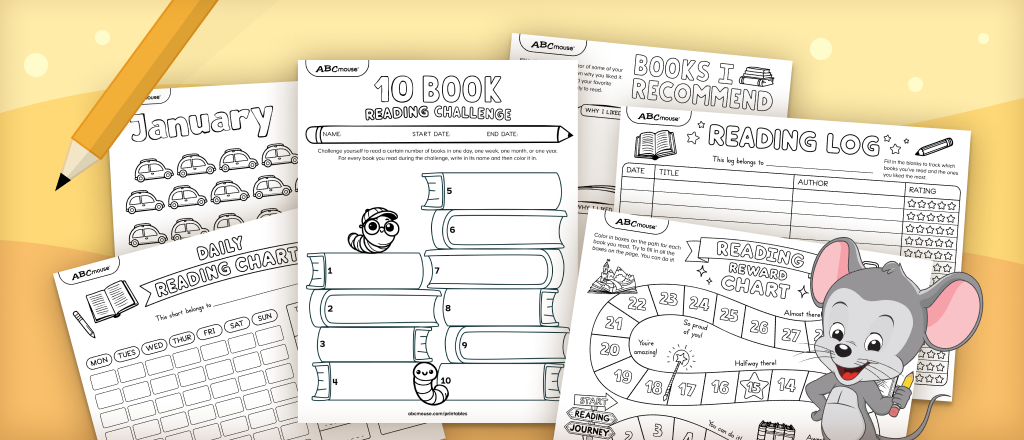
Preschool Summer Reading List
As their attention spans lengthen, you can add longer, more detailed books to your child’s summer reading list. These selections offer easy-to-understand text and illustrations that kids will love to study up close.
- All Around Bustletown: Summer by Rotraut Susanne Berner
- Summer Days and Nights by Wong Herbert Yee
- The Wonders of Summer by Kealy Connor Lonning
- Summer Is … by Barbara Pinke, illustrated by Alvin Adhi
- Up in the Garden and Down in the Dirt by Kate Messner, illustrated by Christopher Silas Neal
- Beach Bummer by Ryan T. Higgins
- Bats at the Beach by Brian Lies
- Curious George Goes Camping by H. A. Rey and Margret Rey

All Around Bustletown: Summer by Rotraut Susanne Berner
The pages of this summer read are filled with detailed illustrations for preschoolers to explore. Use the drawings to help make your own summer bucket list!

Summer Days and Nights by Wong Herbert Yee
“It’s too hot!” When that summer refrain kicks in, pull out this book for some quiet time in the shade and learn how one adventurous little girl makes the most of the season.

The Wonders of Summer by Kealy Connor Lonning
The unique bond between a father and daughter makes this book a special one. The illustrations bring the very simple text to life, illustrating the best that summer has to offer.

Summer Is … by Barbara Pinke, illustrated by Alvin Adhi
Before you read, ask your child to make a list of what summer means to them. Then, see how many of those things appear in this fun rhyming read-aloud.

Up in the Garden and Down in the Dirt by Kate Messner, illustrated by Christopher Silas Neal
The Over and Under series captivates with its examinations of the world above and below ground. This entry dives into a garden, with worms and insects underneath and flowers and birds above.

Beach Bummer by Ryan T. Higgins
Mother Bruce fans will love joining Little Bruce during his day at the beach, even though nothing seems to make this small grumpy bear happy—as usual!

Bats at the Beach by Brian Lies
Most of us only go to the beach during the day. Find out what it’s like at night with some playful bats who’ve come to enjoy their own time at the shore.

Curious George Goes Camping by H. A. Rey and Margret Rey
Everyone’s favorite mischievous monkey manages to get himself in trouble (of course!) while on a camping trip. Can he find a way to be helpful, instead of making more mischief?
Kindergarten Summer Reading List
As kindergarteners begin their real dive into the world of reading, books with engaging text and a creative use of language are vital. It’s also important to have illustrations, as learning to understand a story from context is an important skill too.
- Summer is Here by Renée Watson, illustrated by Bea Jackson
- Summer Song by Kevin Henkes, illustrated by Laura Dronzek
- And Then Comes Summer by Tom Brenner, illustrated by Jaime Kim
- Cannonball by Sacha Cotter, illustrated by Josh Morgan
- Flower Garden by Eve Bunting, illustrated by Kathryn Hewitt
- Little Kids First Nature Guide: Explore the Beach by Alli Brydon
- The Camping Trip by Jennifer K. Mann
- A Camping Spree with Mr. Magee by Chris Van Dusen

Summer is Here by Renée Watson, illustrated by Bea Jackson
Like the bubbles blown by the little girl on the cover, summer days drift by all too quickly. Read this book with kindergarteners to remind them to enjoy all the great things this time of year brings.

Summer Song by Kevin Henkes, illustrated by Laura Dronzek
“Summer is a green song,” writes Henkes in this lyrical book, part of a quartet he and Dronzek have written about the seasons. The author’s artful text makes this one perfect for little ones just beginning to understand the magic of words.

And Then Comes Summer by Tom Brenner, illustrated by Jaime Kim
With its repeated use of “When” and “Then,” this summer pick makes an excellent read-aloud. Invite little ones to create their own “When/Then” statements about summer!

Cannonball by Sacha Cotter, illustrated by Josh Morgan
What does it take to make the perfect cannonball into the pool? Everyone has advice for the boy in this tale, but in the end, he has to do things his own way.

Flower Garden by Eve Bunting, illustrated by Kathryn Hewitt
Join a little girl as she finds and creates gardens everywhere. The illustrations in this modern-day classic make it worthy of exploration all on their own.

Little Kids First Nature Guide: Explore the Beach by Alli Brydon
Take this book along on your next beach trip so kids can learn to identify all the cool stuff they see, hear, and find. It’s also handy for planning your next adventure at the shore!

The Camping Trip by Jennifer K. Mann
Ernestine is totally ready to go camping, new sleeping bag and all. But things don’t turn out exactly as she expected. Can she find a way to have fun even when she’s out of her comfort zone?

A Camping Spree with Mr. Magee by Chris Van Dusen
Mr. Magee and his trusty dog Dee are off to the woods! Everything is great—until one local bear with a love for marshmallows stirs up a little too much excitement.
First Grade Summer Book List
While first graders still love read-alouds, they’re also starting to be able to read on their own. This mix of selections offers excellent story time picks, but also a few that first graders can begin to tackle independently or with light assistance.
- Freedom Summer by Deborah Wiles, illustrated by Jerome Lagarrigue
- How I Spent My Summer Vacation by Mark Teague
- The Truth About My Unbelievable Summer by Benjamin Chaud and Davide Cali
- The Night Before Summer Vacation by Natasha Wing, illustrated by Julie Durrell
- Summer by Alice Low, illustrated by Roy McKie
- Pete the Cat Goes Camping by James Dean
- Lucy’s Summer by Donald Hall, illustrated by Michael McCurdy
- The Camping Trip That Changed America by Barb Rosenstock and Mordicai Gerstein

Freedom Summer by Deborah Wiles, illustrated by Jerome Lagarrigue
Journey back to a place and time when a little Black boy and a little White boy were best friends, but weren’t allowed to do many things together. This one is sure to start some discussions, but the message is an important one: things really can get better if people want them to.

How I Spent My Summer Vacation by Mark Teague
Wallace was supposed to visit his aunt over the summer. Instead, he says, he was taken by cowboys and learned the ways of the West! Wallace’s tale may not be entirely true, but it’s still a lot of fun.

The Truth About My Unbelievable Summer by Benjamin Chaud and Davide Cali
It turns out Wallace isn’t the only one with a crazy tale to tell! The boy in this fun summer book found a treasure map in a bottle, and followed it off on a great adventure.

The Night Before Summer Vacation by Natasha Wing, illustrated by Julie Durrell
“Twas the night before leaving on summer vacation. My family was bursting with anticipation.” This twist on the Clement Moore classic will be a hit with kids, whether they know the original poem or not.

Summer by Alice Low, illustrated by Roy McKie
“I love the things that summer brings …” This easy-reader classic has been beloved for generations. Today’s first graders will enjoy sounding out the words that accompany the simple illustrations just as much as their parents did.

Pete the Cat Goes Camping by James Dean
Emergent readers probably already know and love Pete, so this account of his crazy camping adventures is the perfect fit for your summer reading list.

Lucy’s Summer by Donald Hall, illustrated by Michael McCurdy
What was summer like over 100 years ago? Turns out that children in 1910 enjoyed a lot of the same things kids do today, including parades and ice cream. But other things were very different. This journey back in time is the ideal read for a lazy summer afternoon.

The Camping Trip That Changed America by Barb Rosenstock and Mordicai Gerstein
The National Parks are a familiar and important part of America today, but they might not exist if it weren’t for a trip that Teddy Roosevelt and John Muir took together one summer, as told in this nonfiction summer pick.
Second Grade Summer Book List
At this age, most kids are taking on easy reader and chapter books independently. Encourage them to continue their reading practice over the summer with these favorites, written at the perfect level for second grade readers.
- Seashell Key by Lourdes Heuer, illustrated by Lynnor Bontigao
- Judy Moody and the NOT Bummer Summer by Megan McDonald
- City Summer, Country Summer by Kiese Laymon, illustrated Alexis Franklin
- Summer of the Woods by Steven K. Smith
- Cam Jansen and the Summer Camp Mysteries by David A. Adler, illustrated by Joy Allen
- My First Garden by Livi Gosling
- Camp by Kayla Miller
- Owl Diaries: Eva at the Beach by Rebecca Elliott

Seashell Key by Lourdes Heuer, illustrated by Lynnor Bontigao
Meet the kids of this tourist town, who spend their summers living and playing alongside their family businesses (and in one case, in a lighthouse!). This is the first of a chapter book series, with book two already out.

Judy Moody and the NOT Bummer Summer by Megan McDonald
Young readers have been following Judy Moody’s adventures for years. In this volume, Judy’s expecting summer to be boring, until she comes up with some creative ways to make it totally exciting after all.

City Summer, Country Summer by Kiese Laymon, illustrated Alexis Franklin
Three boys who live in the city spend one amazing summer staying with family in rural Mississippi. As they explore the woods and countryside, they compare and contrast their activities with those they enjoy during urban summers at home.

Summer of the Woods by Steven K. Smith
Chapter book mysteries have the ability to draw in even reluctant readers. This one follows two brothers who try to solve a sixty-year-old crime in their new Virginia neighborhood.

Cam Jansen and the Summer Camp Mysteries by David A. Adler, illustrated by Joy Allen
Looking for more mysteries? The Cam Jansen series has you covered! This collection of three mystery tales centered around summer camp is terrific for voracious readers who are always looking for something new.

My First Garden by Livi Gosling
As kids get older, they often help in family gardens. Help them learn more about what, how, and why to grow food and plants with this easy-reader nonfiction pick.

Camp by Kayla Miller
Graphic novels have a lot of value for readers of all ages. In this joyously-illustrated story, Olive and her friend Willow find navigating summer friendships a little more tricky than they planned for.

Owl Diaries: Eva at the Beach by Rebecca Elliott
Eva and her bestie Lucy can’t wait to enjoy a day at the beach, making sandcastles and picking up shells. But Eva has a secret: she’s afraid to go into the water (what if she counters a shark?). It takes the support of friends to change her mind and turn this owl into a water bird!
ABCmouse Read Alouds

ABCmouse YouTube Books
Young children will love listening to this collection of stories as they watch animated videos bring them to life.
More Summer Activities for Kids
Summer Activities to Do at Home
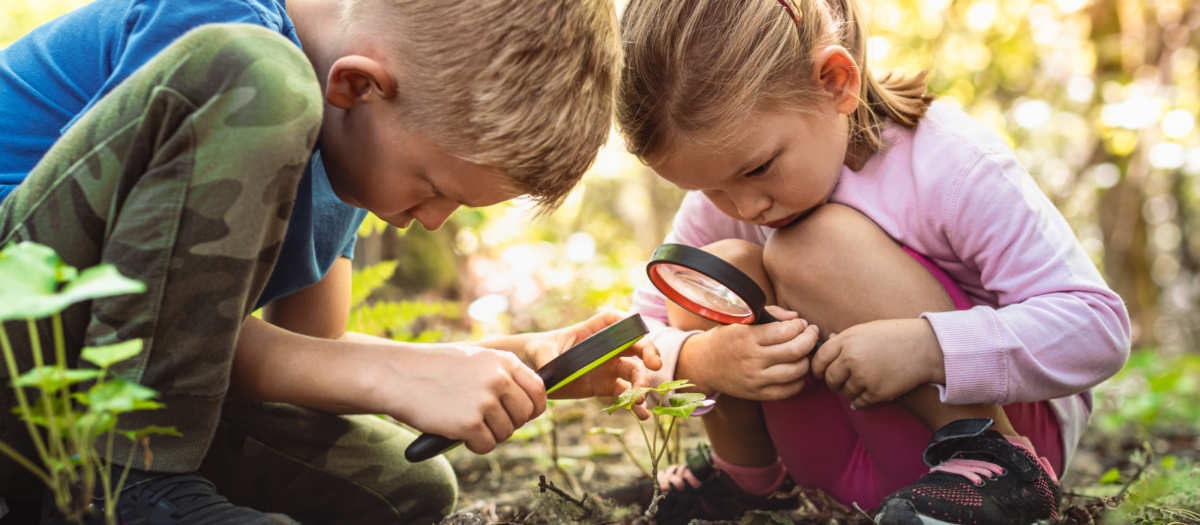
Check out these 40 ideas to keep kids busy and having fun right at home.
More Great Book Lists!
Best Books for Kindergarteners
35 fun and engaging books, from silly to informative, hand-picked for your kindergartener!
Browse →
Best Books for First Graders
From humorous to educational, your first grader will delight in reading these 30 books.
Browse →
Best Books for Second Graders
Perfect for reading together or independently, these 30 must-read books can help keep second graders engaged, entertained, and eager to turn the page!
Browse →
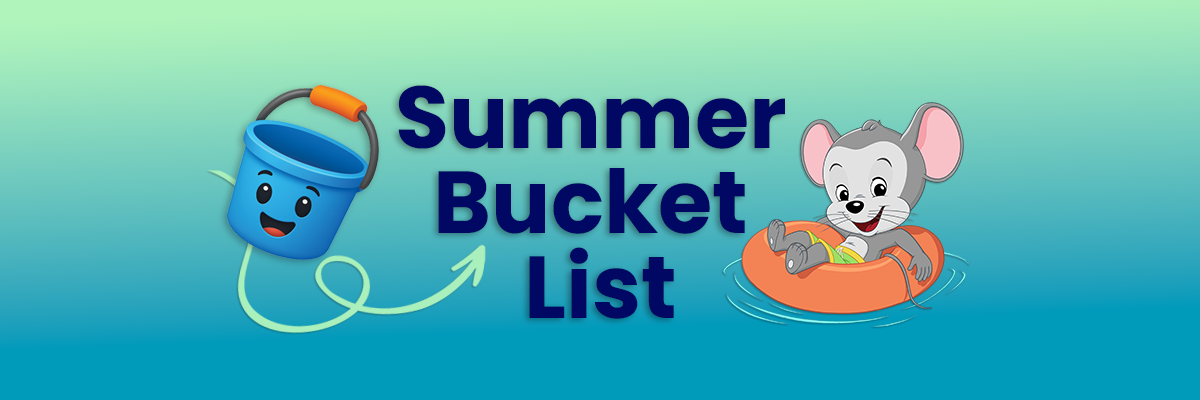
170+ Summer Bucket List Ideas for Kids
Share
Get your summer checklist started with this list of over 170 different summer ideas and activities.
How to Create a Summer Bucket List for Kids
Creating a summer to-do list can help you and your family make the most of every long sunny (or even rainy) day this season. For kids, a summer bucket list likely includes the things they most enjoy or especially look forward to.
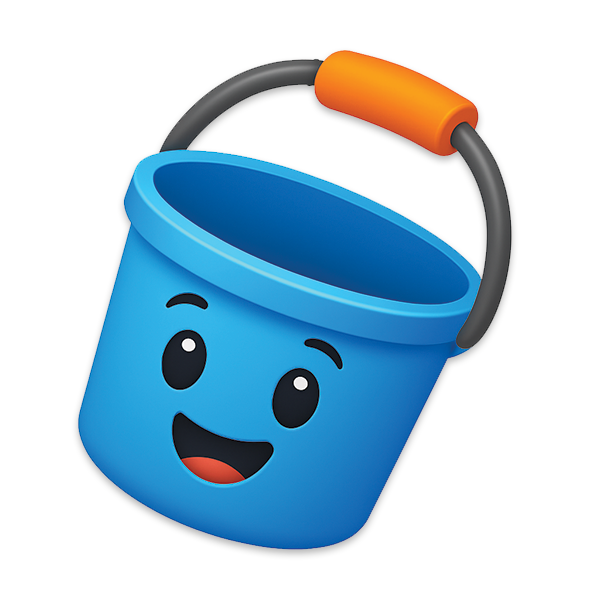
?
What is a bucket list?
A bucket list is a collection of activities a person wants to complete in a specified time.
A summer bucket list also often includes activities that are only possible in summer due to the extra leisure time or warmer weather. A good summer bucket list for kids should also feature “just for fun activities” and a few aspirational items that may require extra effort but pay off big in making memories.

Tips for Creating a Summer Bucket List:
🪣 Sit down as a family to create your own bucket list for the summer, using the activities shown here for inspiration.
🪣 Ask each family member to submit ten items for the list, then talk about them all and narrow them down together.
🪣 Ensure everyone’s goals and interests are represented.
🪣 Discuss which activities your children can do on their own and which require help or supervision from adults.
🪣 Write out your list and post it on the fridge or on the wall by your child’s bed. Have fun checking off items together as you complete them all summer long!


Water Fun for Summer Bucket Lists
There’s no better time than summer for splashing around and getting wet! Just be sure to put on plenty of sunscreen before you start.
- Run through the sprinkler
- Play in the pool
- Learn a new swimming stroke
- Have a water balloon fight
- Race toy sailboats
- Dance in the rain (only without thunder and lightning!)
- Play spray bottle tag
- Freeze small toys in ice and dig them out
- Knock down water balloon “piñatas”
- Play baseball or catch with a water balloon ball
- Make a DIY slip-and-slide in the yard
- Try sponge toss games with soaked sponges
- Have a pool noodle sword fight
- Set up a water sensory bin with scoops and cups
- Create a water wall using recycled bottles and tubes
- Have a water relay race using sponges or cups
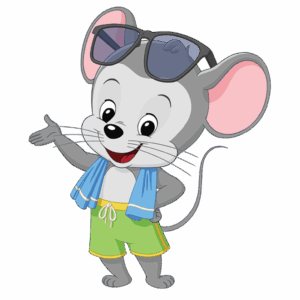

Nature Exploration Summer Bucket List Activities
Add a layer of bug spray over that sunscreen and head out to explore the great outdoors. Take advantage of beautiful weather to enjoy nature day and night this summer.

- Go on a nature walk
- Collect and display rocks or leaves
- Go on a bug hunt
- Pick wildflowers
- Watch the clouds and find shapes
- Make a birdfeeder
- Plant a garden
- Save seeds from sunflowers
- Count butterflies
- Listen for and identify bird songs or insect sounds
- Create nature rubbings with leaves and bark
- Visit a local nature preserve
- Make a nature journal to record discoveries all summer long
- Set up a bug hotel in the backyard
- Go fishing or paddle boating at a local pond or lake
- Go geocaching

Classic Summer Bucket List Activities for Kids
These are the activities that every kid loves to do each summer, and they’re perfect for family entertainment any day.
- Blow bubbles
- Draw with sidewalk chalk
- Catch fireflies
- Build a sandcastle
- Fly a kite
- Go on a family bike ride
- Camp out in the backyard
- Play flashlight tag
- Hold a backyard scavenger hunt
- Feed dried corn to local ducks
- Go stargazing
- Host a lemonade stand
- Watch a fireworks show
- Build a blanket fort
- Play with glow sticks after dark
- Build a bonfire
- Light a sparkler
- Try an outdoor science experiment like a vinegar and baking soda volcano
- Have a paper airplane competition
- Play classic lawn games like cornhole or ring toss
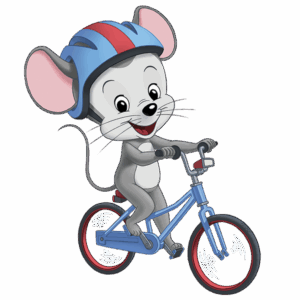

Summer Bucket List Ideas for Creative Kids
Summer is a terrific time for arts and crafts, music, theater, and other creative pursuits. Stock up on art supplies and let kids set their imaginations free!
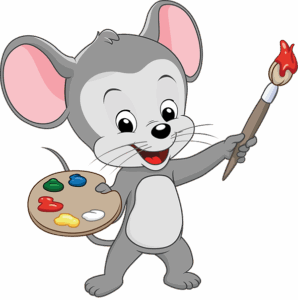
- Paint rocks and leave them for others to find
- Tie-dye t-shirts or other items
- Put on a play or puppet show
- Craft homemade instruments
- Hold a converter a play for friends and family
- Assemble a summer collage of your choice
- Build something with cardboard boxes
- Invent a new game
- Create a new dance and teach it to others
- Make designs with sun print paper
- Create a summer photo album or scrapbook
- Try sand art in bottles or jars
- Make your own wind chimes with recycled materials
- Build a fairy garden
- Do a weekly summer craft

Out-and-About Summer Bucket List Activities for Kids
Summer break means more time for family adventures! Here are some places and activities you may want to explore together.
- Visit a local playground
- Have a picnic in the park
- Go to the zoo
- Ride a carousel
- Watch a movie outdoors
- Shop at the farmer’s market
- Visit the Little Free Libraries in your neighborhood
- Ride on a train or boat
- Go to an outdoor concert
- Play mini-golf (try glow-in-the-dark mini golf too!)
- Visit the county fair
- Join a summer reading program
- Check out a new playground or park
- Visit a nature center
- Attend a baseball game or other sports event
- Go on a short road trip to a nearby town
- Take a guided tour of a local farm
- Visit a splash pad or water playground
- Try a kids’ workshop at a home improvement store
- Explore a historical site or landmark in your area
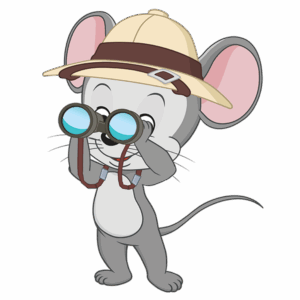

Quiet Time Summer Bucket List Ideas for Kids
Long lazy days and rainy afternoons leave lots of room for quiet time activities. These ideas entertain kids without creating much of a mess or noise.
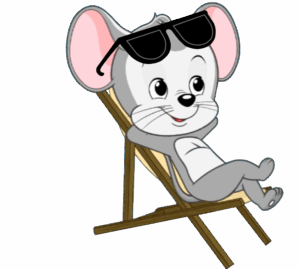
- Set up a cozy spot outdoors and read a book
- Have a stuffed animal tea party
- Listen to an audiobook on a too hot or rainy day and complete some summer worksheets
- Write and illustrate your own book
- Look at old family photos
- Draw a picture to send to a friend
- Watch the sunrise or sunset
- Form a family book club or a book club with friends
- Clean out a closet and donate unwanted items
- Learn 10 words in another language
- Try kids’ yoga outdoors or with a video
- Write and mail postcards to friends or family
- Listen to relaxing nature sounds while working on summer coloring pages
- Tell riddles or silly Dad jokes to a friend or family member

Summer Bucket List Food and Treats
Some foods just taste better in summer! Be sure to add a few yummy treats to your summer checklist!
- Cut up and eat a watermelon
- Squeeze homemade lemonade
- Wash and eat fruit or vegetables straight from a garden
- Freeze your own popsicles
- Make fresh fruit kabobs
- Eat cotton candy at the fair or amusement park
- Make some homemade jam
- Roast hot dogs over a fire
- Make s’mores
- Enjoy homemade ice cream
- Make a no-bake dessert together
- Create your own trail mix with favorite nuts, seeds, and dried fruit
- Host a backyard picnic with finger foods and a picnic blanket
- Try a new fruit or veggie you’ve never had before
- Make flavored ice cubes with juice or fruit pieces
- Create edible art with fruit slices, yogurt, and graham crackers
- Have a build-your-own taco or sandwich night
- Make a smoothie together and give it a fun name
- Make popcorn and flavor it with fun toppings for a movie night


Active Summer Bucket List Activities for Kids
Work off excess energy with plenty of activity, movement, and exercise outdoors. Summer gives kids time to climb, run, stretch, dance, and jump all day long!

- Build a backyard obstacle course
- Toss a frisbee with friends
- Run relay races
- Draw the longest hopscotch course you can
- Climb a tree
- Try to beat your jump rope record
- Learn how to hula hoop
- Host a family Olympics
- Learn to do a somersault, cartwheel, or headstand
- Take a hike someplace new
- Dig a hole in the sand and then fill it back up (this is important for wildlife)
- Climb a tower at a park
- Play freeze dance with favorite songs
- Go rollerblading, biking, or scootering around the neighborhood
- Create and complete a sidewalk chalk maze
- Do a silly walking contest (crab walk, bear crawl, etc.)
- Learn and perform a short jump rope routine
- Find a new way to play catch (like using a laundry basket or grocery bag)

Pretend Play Summer Bucket List Activities
Pull out the dress-up clothes, round up the toys, and use your imagination to bring these pretend scenarios to life!
- Dress up as superheroes
- Bury toy dinosaurs and dig them up as paleontologists
- Create a tent for shelter on an expedition
- Run a car wash for toy vehicles
- Set up a pretend restaurant
- Make a treasure map for a parent or sibling
- Run an ice cream shop
- Create a backyard stuffed animal zoo or farm
- Go on a backyard safari
- Have a beach day in the backyard
- Set up a pretend post office and deliver mail to family members
- Create a pirate ship using cardboard boxes or lawn chairs
- Host a fashion show with dress-up clothes and a homemade runway
- Build a pretend rocket ship and go on a space adventure
- Set up a “vet clinic” for stuffed animals
- Pretend to be chefs and create a cooking show video
- Act out a fairy tale using costumes and props
- Create a pretend grocery store and shop for play food
- Set up a school with toys as students and play teacher
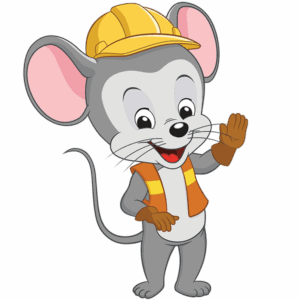

Community Summer Bucket List Activities
Gather up the neighborhood to celebrate the summer season! These activities will take a bit of coordination, but they’ll allow everyone around to get involved in the fun.

- Hold a neighborhood parade
- Host a backyard carnival with simple games and events
- Participate in an enormous game of hide-and-seek
- Work in a community garden
- Organize a neighborhood sidewalk art show
- Help a neighbor with a chore or task
- Volunteer as a family
- Have a bicycle-decorating contest
- Host a neighborhood book swap
- Throw a community bubble-blowing party
- Have a front yard potluck party for everyone on your street
- Organize a neighborhood outdoor story time
- Start a “share table” with extra garden produce
- Organize a summer talent show
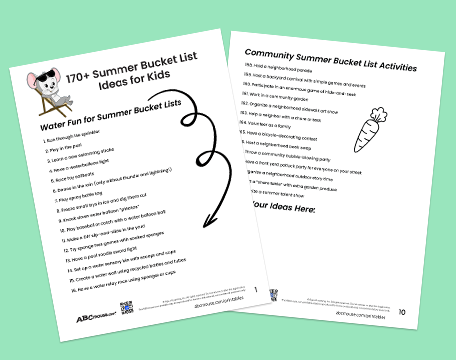
Get more summer checklist ideas!
Check out more activities in our list of Engaging and Educational Summer Activities for Preschoolers and our 50 Summer Activities for Kids to Do at Home.

-
Letter B Coloring Pages (Free Printables!)
Fun letter B coloring pages and activities to help kids explore letter sounds and words—free printables from ABCmouse.
-
Letter A Coloring Pages (Free Printables!)
Free printable letter A coloring pages with fun characters and activities for early alphabet learning.
-
Summer Learning Activities with ABCmouse
Keep kids engaged all summer with ABCmouse activities like games, books, songs, and printables for fun, flexible learning at home.

Share
Online Game-Based Learning: Why It Works
Research suggests that online learning games help children increase early math and literacy skills, cognitive development, and critical thinking. Here’s how your child can benefit.
Table of Contents–Jump to Each Section
In the preschool and early elementary years, children absorb knowledge rapidly—making this a critical time to build early math, literacy, cognitive, and social-emotional skills. Research shows that online learning games can boost this development through fun, interactive experiences.
For example, when reporting on the impact of educational apps on learning, a 2024 article published in the journal Children found that “By integrating educational content with game mechanics, these apps can make learning more enjoyable and effective, leading to better retention and understanding of complex concepts.”
“By integrating educational content with game mechanics, these apps can make learning more enjoyable and effective, leading to better retention and understanding of complex concepts.” –Clemente-Suárez et al. Children. 2024; 11(11):1299
Studies also suggest that online educational games can promote problem-solving and critical thinking and improve engagement and motivation, adding to their value as a learning resource for children.
Explore the research highlighting how online learning games and interactive educational apps contribute to early childhood development and a simply way to add game-based learning to your home or classroom.
What Is Game-Based Learning?
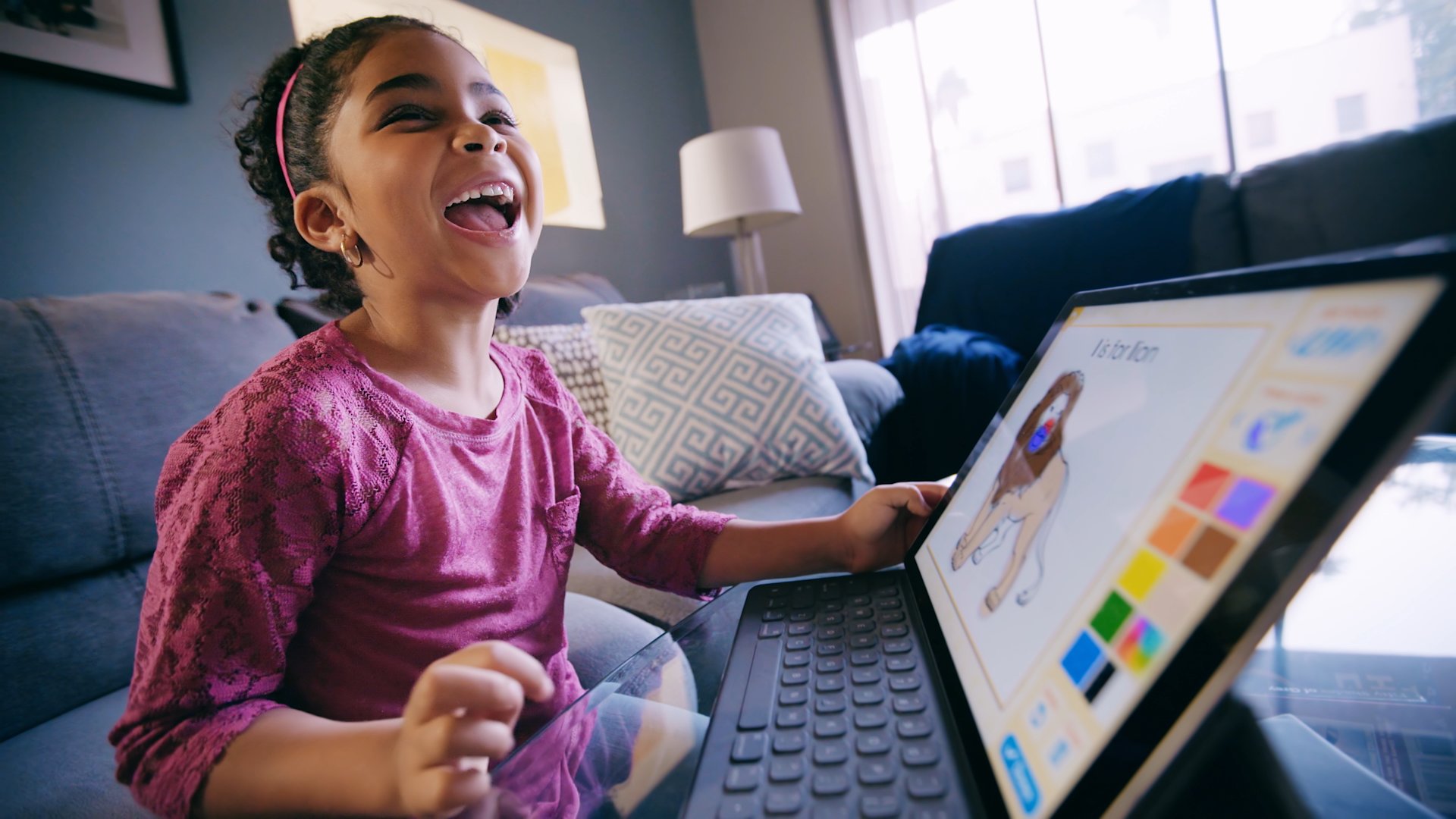
Game-based learning, which includes online games, board games, card games, and more, integrates educational content into interactive games designed to help players develop, build, and practice their skills. Experts carefully craft these games to teach specific concepts or knowledge through play — a proven method for actively engaging young learners. Online learning games are a popular example of game-based learning, offering interactive experiences that make practicing skills more fun and effective.
Examples of game-based learning:
- Vocabulary word crossword puzzle
- Math facts Bingo game
- Science trivia Jeopardy
- Online skip counting game
In each of these activities, students learn or practice knowledge and skills with a clear learning objective in mind. The games are interactive and even strategic, adding a playful element that actively engages students in the learning process.
Game-based learning is especially effective for younger children. According to research presented in Frontiers in Psychology, “…game-based learning can be a promising tool for early childhood educators to promote children’s learning and development…Researchers and educators recognized the potential of game-based learning to enhance engagement, motivation, and learning outcomes in early childhood education.”
Game-Based Learning vs. Gamification
It’s important to note that game-based learning is different from gamification, another commonly used term. Gamification adds game-like elements into more traditional teaching methods, such as rewarding students with a small prize for answering a question correctly during a lesson. These game elements help increase engagement and motivation, but they don’t have an educational objective on their own.
In game-based learning, the game is the lesson. After students play the game, they have a deeper understanding of the content or demonstrate better mastery of a skill.
In game-based learning, the game is the lesson. After students play the game, they have a deeper understanding of the content or demonstrate better mastery of a skill. They might receive rewards like prizes, tickets, badges, or points, but learning is the overall objective of the game itself.
Literacy Skills Improve with Online Learning Games
While it’s been established that digital learning apps and games can improve students’ engagement, studies reveal that they can also have a measurable impact on literacy skills.
In a 2025 study published in the journal Learning and Individual Differences, researchers found that playing apps specifically designed for teaching literacy for just 30 minutes per week increased preschoolers’ reading skills. This was true regardless of the child’s family background, income, or existing literacy skills before playing the online learning games.
Researchers found that playing apps specifically designed for teaching literacy for just 30 minutes per week increased preschoolers’ reading skills.
Specifically, these apps were beneficial in teaching the early literacy skills preschool children need to develop, such as letter recognition, phonological awareness, letter-sound correspondence, and letter tracing.
The authors noted, “Our findings show that our educational game-based literacy apps can act as additional means to support young children from all backgrounds in the acquisition of their early literacy skills. This kind of educational literacy apps (sic) offers parents with little financial, educational, or time resources the chance to support their children meaningfully.”
Math Skills Improve with Online Learning Games
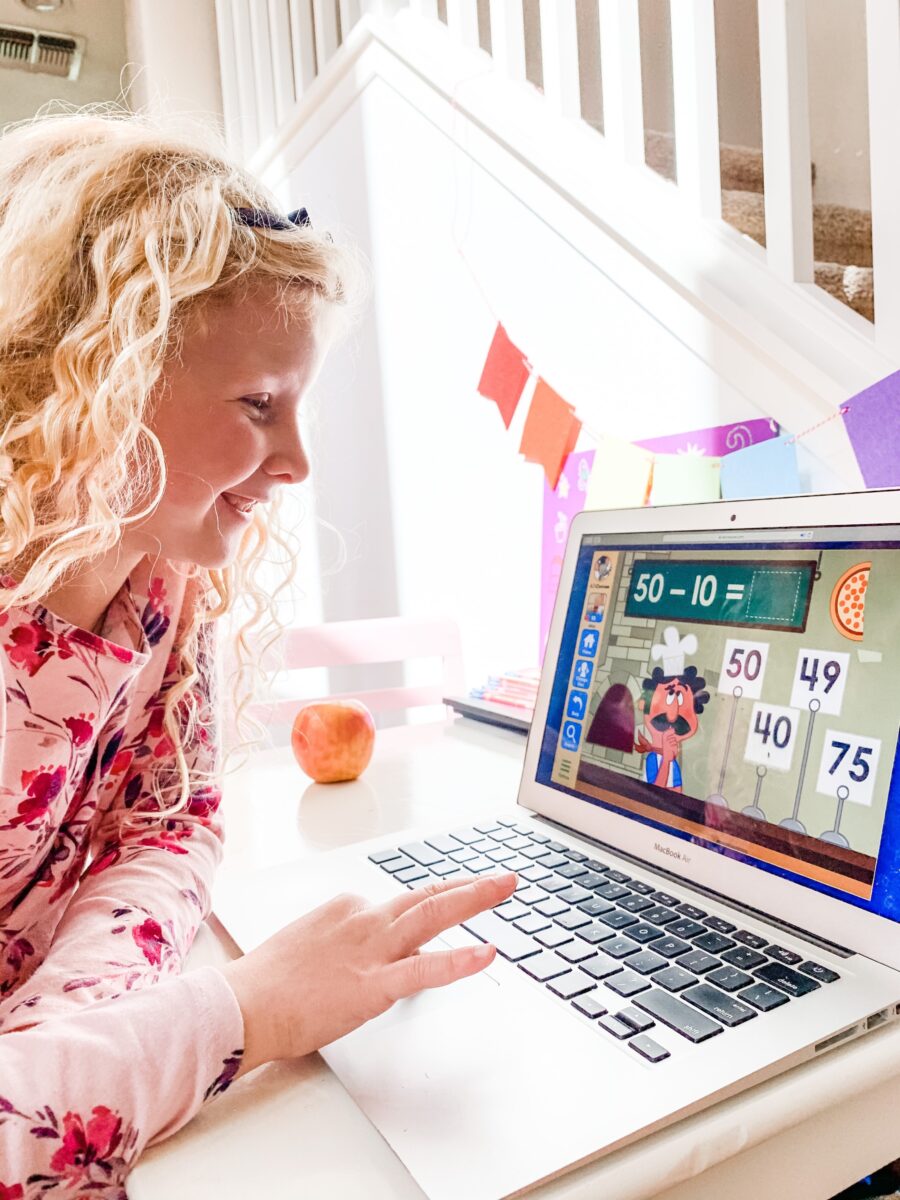
Research also captures the high value of online game-based learning for teaching early math skills like number recognition, counting, addition, and subtraction. Digital math games help kids master new concepts and develop and strengthen problem-solving skills in general.
A study published in the February 2025 volume of the International Journal of Learning, Teaching and Educational Research examined the immediate and long-term benefits of playing online math games. The researchers found that the second graders in this study who played online math games outperformed their peers in post-tests designed to measure both immediate and long-term recall and application of skills.
“This suggests that DGBL (digital game-based learning) is not only effective in helping students grasp mathematical concepts in the short term but also in strengthening their ability to retain and apply these concepts over time,” the authors wrote.
We also know that motivation plays a crucial role in math performance. Digital game-based learning increases student engagement by turning number and math mastery into an enjoyable activity. In a review of 35 studies published in Frontiers of Psychology in 2023, researchers concluded that while math is “often considered to be a difficult or boring subject,” online learning games can increase engagement and motivation.
“Game-based learning elements that emphasize competition and learning while playing make the learning more enjoyable for the students and reduces their anxiety about math subjects.” –Hii, B. H., & Mahmud, M. S. (2023). Frontiers in Psychology, 14, Article 1105806
Cognitive Benefits of Game-Based Learning
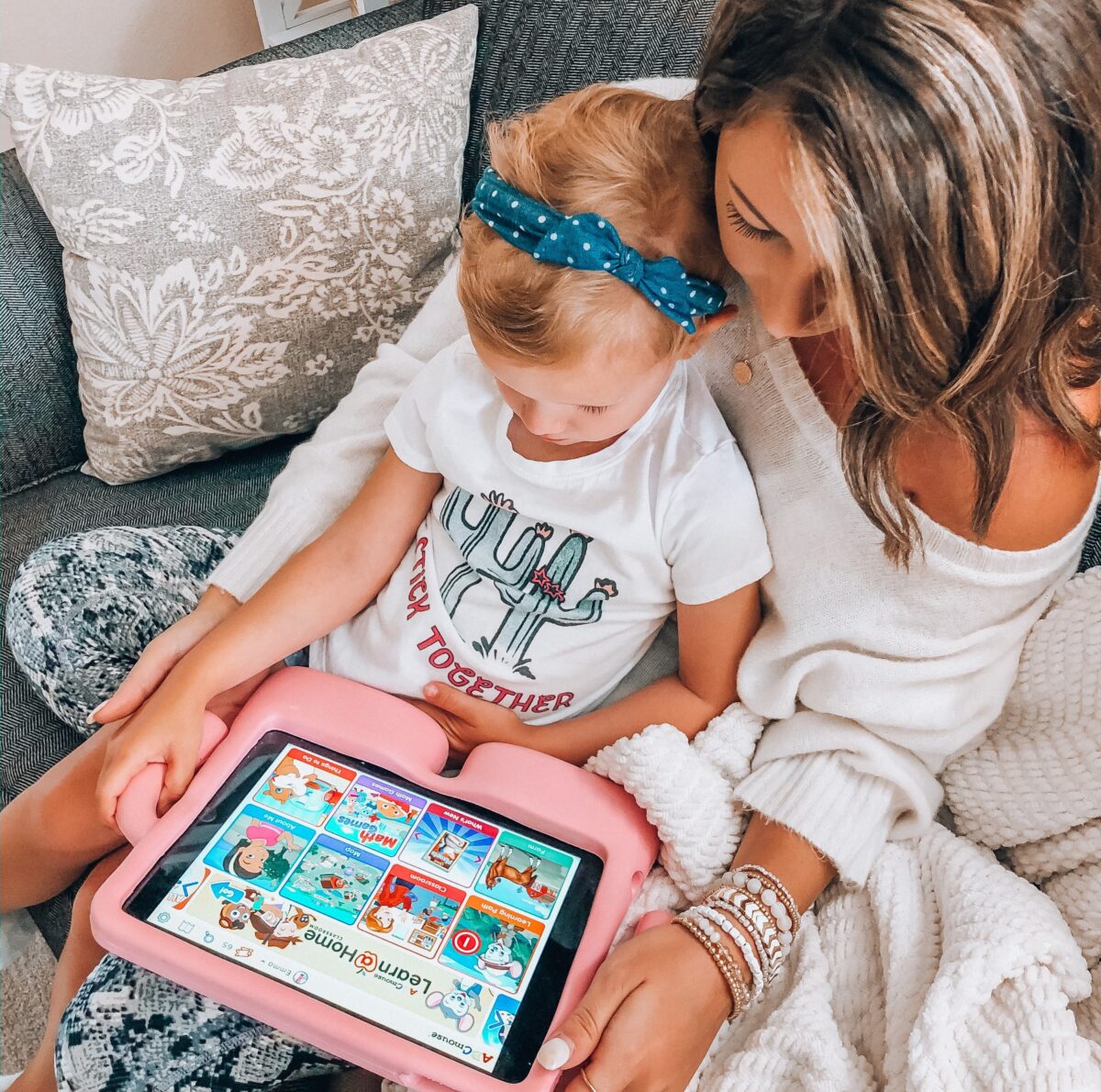
Along with improving literacy and numeracy skills for children, digital game-based learning also positively impacts cognitive development.
According to studies, interactive, goal-oriented games can improve memory, focus, problem-solving, and cognitive flexibility by engaging children in fun, challenging tasks.
How Online Learning Games Help Improve Cognitive Development:
Boost memory and recall by encouraging children to remember patterns, sequences, and information in context.
Improve attention and concentration through fast-paced, engaging tasks that require focus and quick thinking.
Enhance problem-solving and cognitive flexibility by challenging kids to make decisions, solve puzzles, and adapt to new situations.
Increase motivation and engagement with rewards, feedback, and interactive experiences that make learning enjoyable.
Support executive functioning by strengthening skills like planning, organizing, and managing emotions during gameplay.
See the research supporting the positive impact of online learning games on children’s cognitive development.
Boost Social and Emotional Growth with Online Game Play
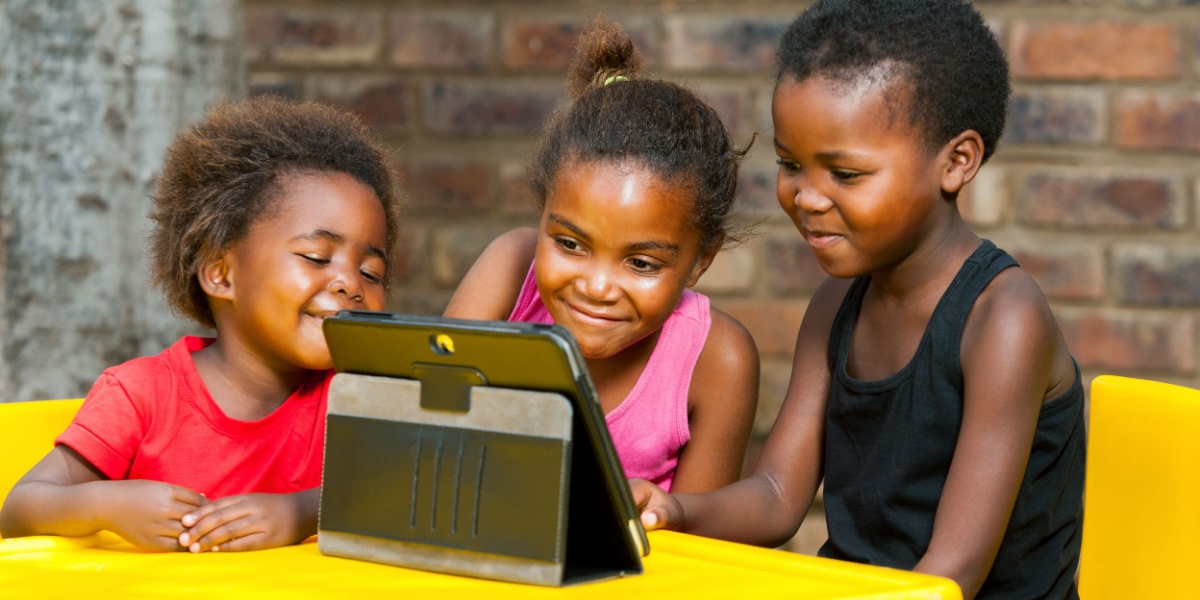
While early childhood is a time of rapid cognitive growth, it’s also an ideal time to nurture social-emotional learning (SEL) skills, and research shows that online learning games can help their development.
Interactive games offer safe, engaging spaces where kids can practice managing emotions, building confidence, working with others, and making thoughtful decisions. When used alongside everyday social experiences, game-based learning provides another valuable way to support a child’s emotional and social growth.
How Online Learning Games Help Kids Grow Social-Emotional Skills:
Improve emotional regulation by helping children recognize and manage their feelings during gameplay
Build resilience and self-confidence through risk-taking, persistence, and learning from mistakes
Boost motivation and goal setting with fun challenges, rewards, and progress tracking
Encourage communication and teamwork in multiplayer or cooperative games
Strengthen decision-making and problem-solving by requiring critical and strategic thinking
See an overview of the studies showcasing the social-emotional growth that can occur with online learning games.
Add Game-Based Learning to Your Child’s Routine

The ABCmouse learning app puts the benefits of game-based learning into action for children from preschool to second grade (ages 2-8), focusing on the development of literacy, math, social studies, science, art, and music skills.
In a 2025 study, researchers found that using ABCmouse can double early learning gains in both reading and math. Among the key findings:
- Pre-kindergarten children who used ABCmouse for about 3.5 months demonstrated 2.5 times greater growth in their phonological processing skills in comparison to their peers who did not use the program.
- Children who used ABCmouse also demonstrated 1.6 to 2 times greater growth in their quantitative reasoning and applied math problem-solving skills relative to their peers who did not use the program.
The recent study’s results underscored findings from earlier research. In 2016, ABCmouse was shown to improve kindergarten readiness for Head Start students, with authors noting, “for every additional 100 ABCmouse learning activities completed by a student, there is a 3.6% boost in school readiness scores from the beginning to the end of the school year.”
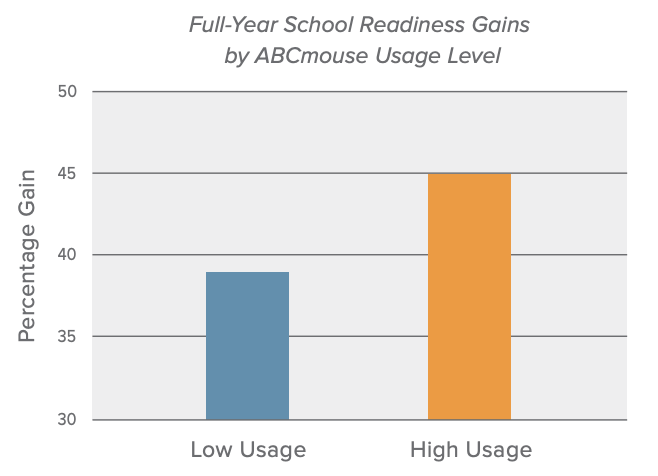
In 2019, another ABCmouse study found that children who used the program’s online learning curriculum over the summer months avoided the notorious “summer slide” learning loss. Even more, these students returned to school in the fall demonstrating academic gains equivalent to an additional month of instruction compared to their peers.
“Programs such as … and ABCmouse utilizes adaptive learning techniques to keep students focused on tasks that are appropriately challenging, thus enhancing their ability to sustain attention over extended periods. These tools provide immediate feedback and rewards, which can motivate students to stay attentive and improve their focus.”
ABCmouse was specifically called out in a 2023 article in the journal Children, where the authors stated, “Programs such as … and ABCmouse utilizes adaptive learning techniques to keep students focused on tasks that are appropriately challenging, thus enhancing their ability to sustain attention over extended periods. These tools provide immediate feedback and rewards, which can motivate students to stay attentive and improve their focus.”
Evidence suggests that adding online learning games to a teacher’s or parent’s toolkit brings benefits for children, especially when blended into a comprehensive curriculum or used to supplement the lessons, activities, reading, and worksheets that often come with more traditional learning.
Ready to Try Game-Based Learning?
Explore ABCmouse’s full library of educational games and start supporting your child’s learning through play today.

Game-Based Learning FAQs
What is game-based learning?
Game-based learning involves mixing educational content into interactive games. In this approach, experts carefully design games to help players build, grow, and practice specific skills. Learning through play gives children a fun and proven way to pick up specific skills, concepts, or knowledge.
Are online learning games good for early childhood development?
Online game-based learning is very effective for young children. At this age, learning through play feels natural since play is how young children explore and understand the world around them. Games provide a safe space for kids to try new concepts, make mistakes, and try again. Engaging game features also help hold kids’ attention and provide multiple paths to learning.
Does research support the use of digital game-based learning apps?
Multiple peer-reviewed studies in recent years have shown that digital game-based learning can be a great way to boost cognitive development by engaging players in fun, challenging activities that help improve memory, attention, problem-solving, and mental flexibility. It can also increase engagement, motivation, and knowledge around specific skills, such as literacy and math, making it a valuable tool for both education and personal growth.
What skills do online games teach preschoolers?
In addition to supporting cognitive development and social-emotional learning, online learning games can teach the foundational math and literacy skills children need at this age. Players may learn letter and number recognition, phonological awareness, letter-sound correspondence, counting, basic addition and subtraction, and much more.
Do online learning games support social-emotional learning (SEL)?
Research shows that interactive online learning apps can promote SEL skills like resilience, emotional regulation, self-confidence, motivation, collaboration, and time management. These skills are often an inherent part of game-based learning, regardless of whether games are specifically designed to teach these specific SEL concepts.
How can I help my child learn with educational games?
ABCmouse games are designed to foster development in literacy, math, social studies, science, art, and music for kids ages 2 to 8. By spending just a few minutes each day using online learning games like these, your child will develop cognitive and academic skills in a fun, challenging environment. The digital game-based learning aspect motivates them, keeping them engaged to fostering a love of learning itself.
Legal disclaimer: Any information, materials, or links to third-party resources are provided for informational purposes only. We are not affiliated with and do not sponsor/endorse these third parties and bear no responsibility for the accuracy of content on any external site. All information provided in this article is current as of May 2025.
References:
Clemente-Suárez VJ, Beltrán-Velasco AI, Herrero-Roldán S, Rodriguez-Besteiro S, Martínez-Guardado I, Martín-Rodríguez A, Tornero-Aguilera JF. Digital Device Usage and Childhood Cognitive Development: Exploring Effects on Cognitive Abilities. Children (Basel). 2024 Oct 27;11(11):1299. doi: 10.3390/children11111299. PMID: 39594874; PMCID: PMC11592547.
Alotaibi MS (2024) Game-based learning in early childhood education: a systematic review and meta-analysis. Front. Psychol. 15:1307881. Doi: 10.3389/fpsyg.2024.1307881
Youling Li, Di Chen, and Xinxia Deng, “The Impact of Digital Educational Games on Student’s Motivation for Learning: The Mediating Effect of Learning Engagement and the Moderating Effect of the Digital Environment,” PLOS ONE 19, no. 1 (2024): e0294350, https://doi.org/10.1371/journal.pone.0294350.
Schiele, T., Edelsbrunner, P., Mues, A., Birtwistle, E., Wirth, A., & Niklas, F. (2025). The effectiveness of game-based literacy app learning in preschool children from diverse backgrounds. Learning and Individual Differences, 117, 102579. Retrieved from https://www.sciencedirect.com/science/article/pii/S1041608024001729
Al-Hassan, O. M., Alhasan, L. M., AlAli, R. M., Al-Barakat, A. A., Al-Saud, K. M., & Ibrahim, N. A. (2025). Enhancing early childhood mathematics skills learning through digital game-based learning. International Journal of Learning, Teaching and Educational Research, 24(2), 141–160. https://doi.org/10.26803/ijlter.24.2.10
Hii, B. H., & Mahmud, M. S. (2023). Influence of game-based learning in mathematics education on the students’ cognitive and affective domain: A systematic review. Frontiers in Psychology, 14, Article 1105806. https://doi.org/10.3389/fpsyg.2023.1105806

